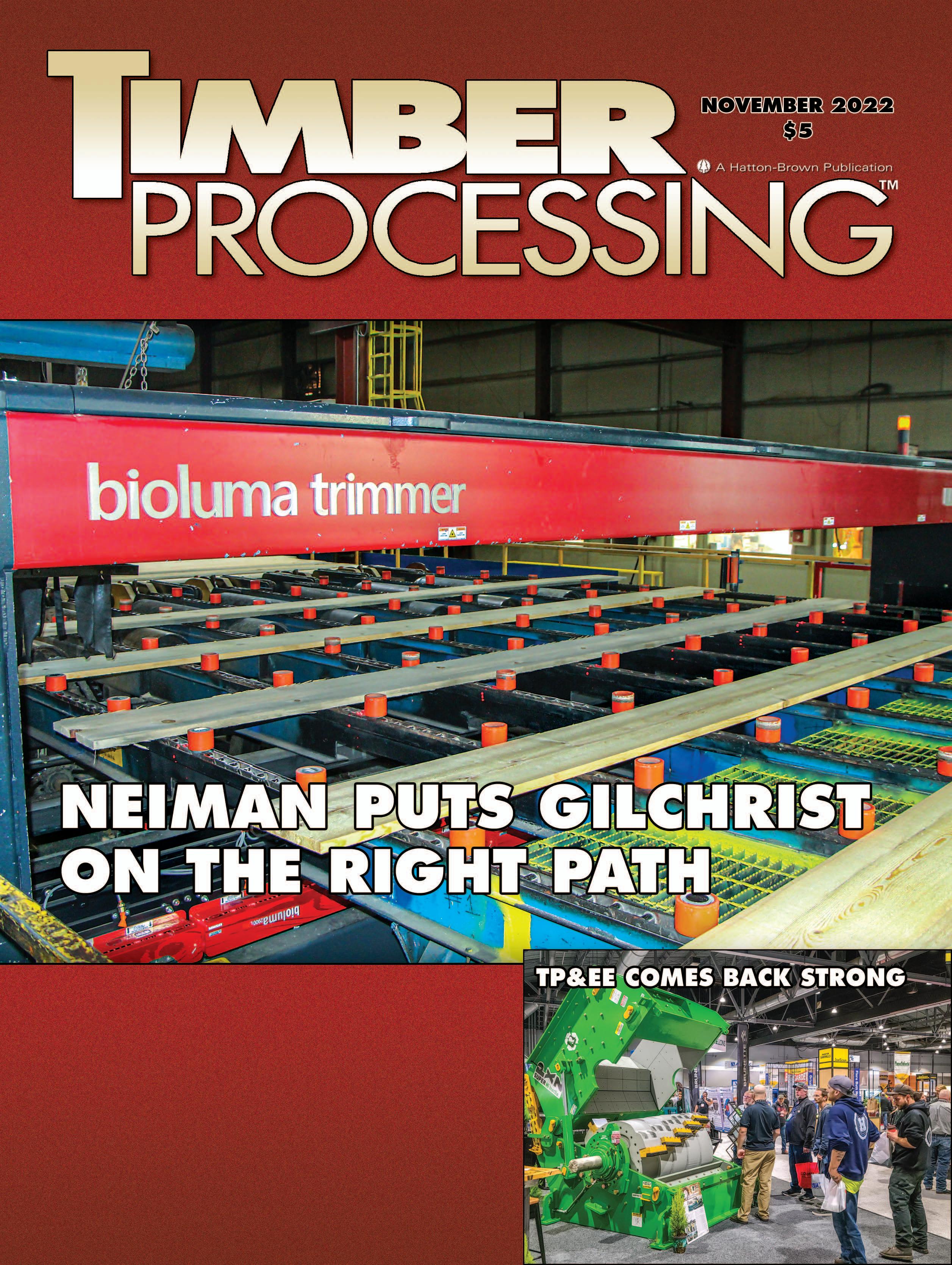
CLICK HERE IF YOU HAVE NOT ALREADY OPTED IN!
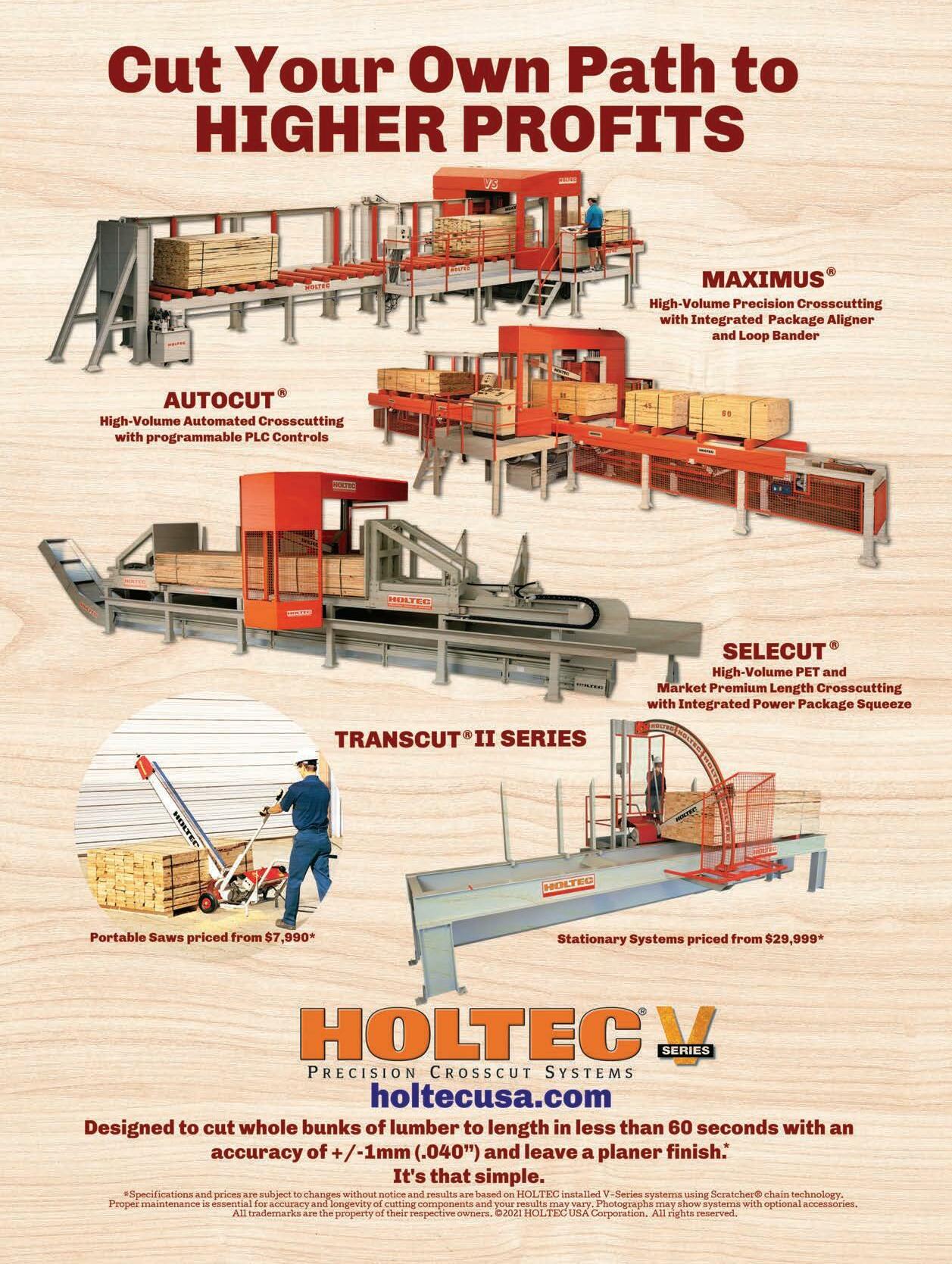
CLICK HERE IF YOU HAVE NOT ALREADY OPTED IN!
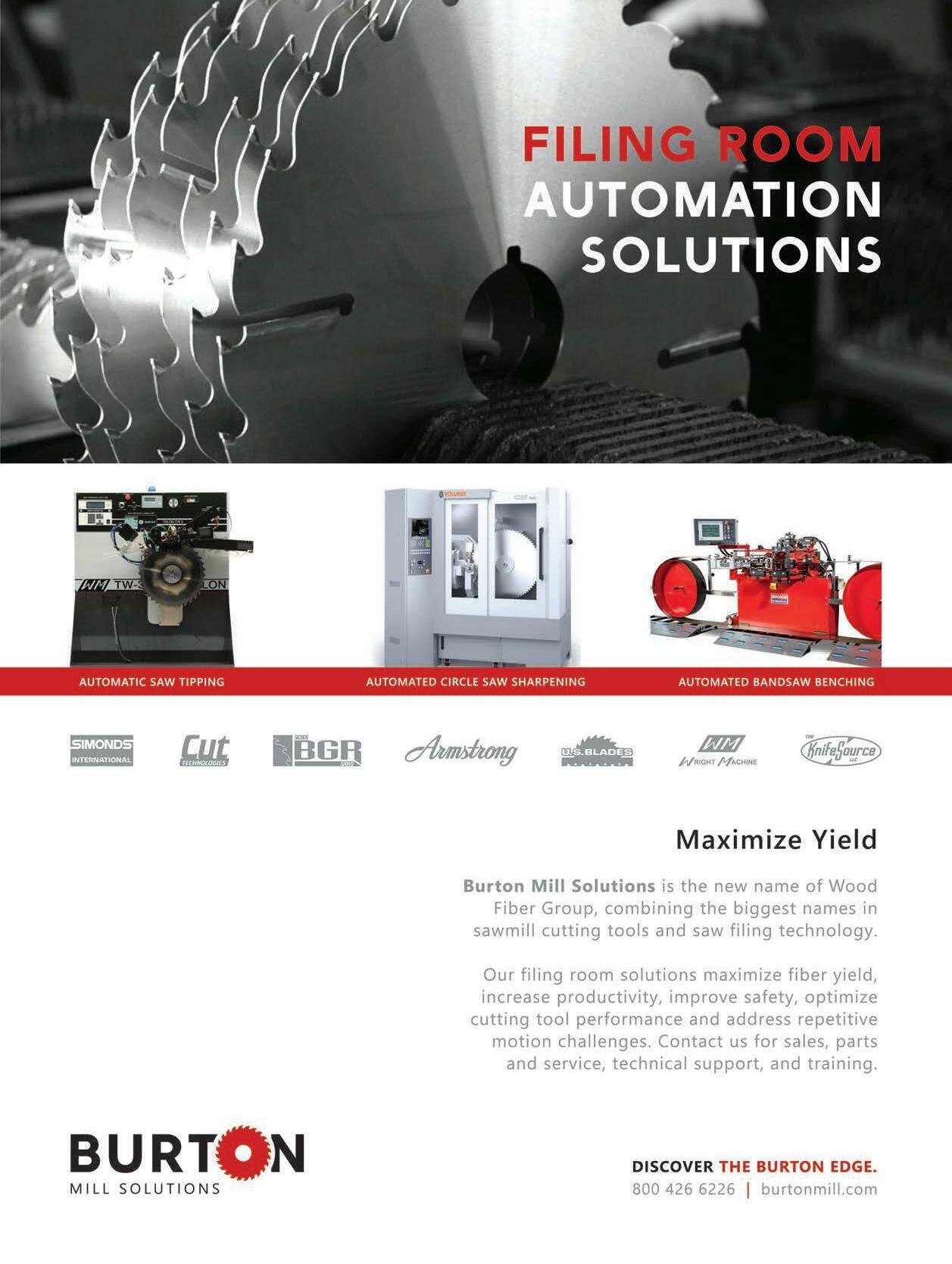
CLICK HERE IF YOU HAVE NOT ALREADY OPTED IN!
Hatton-Brown Publishers, Inc.
Street Address: 225 Hanrick Street Montgomery, AL 36104-3317
Mailing Address: P.O. Box 2268 Montgomery, AL 36102-2268 Telephone: 334.834.1170 FAX: 334.834.4525
Publisher: David H. Ramsey
Chief Operating Officer: Dianne C. Sullivan
Editor-in-Chief: Rich Donnell
Senior Editor: Dan Shell
Senior Editor: David Abbott Senior Editor: Jessica Johnson
Publisher/Editor Emeritus: David (DK) Knight
Art Director/Prod. Manager: Cindy Segrest

Ad Production Coordinator: Patti Campbell
Circulation Director: Rhonda Thomas
Online Content/Marketing: Jacqlyn Kirkland
Classified Advertising: Bridget DeVane • 334.699.7837 800.669.5613 • bdevane7@hotmail.com
Advertising Sales Representatives: Southern USA

Randy Reagor P.O. Box 2268 Montgomery, AL 36102-2268 904.393.7968 • FAX: 334.834.4525
E-mail: reagor@bellsouth.net
Midwest USA, Eastern Canada John Simmons 32 Foster Cres. Whitby, Ontario, Canada L1R 1W1 905.666.0258 • FAX: 905.666.0778
E-mail: jsimmons@idirect.com
Western USA, Western Canada Tim Shaddick 4056 West 10th Avenue Vancouver BC Canada V6L 1Z1 604.910.1826 • FAX: 604.264.1367
E-mail: twshaddick@gmail.com
Kevin Cook 604.619.1777
E-mail: lordkevincook@gmail.com
International Murray Brett 58 Aldea de las Cuevas, Buzon 60 03759 Benidoleig (Alicante), Spain Tel: +34 96 640 4165 • + 34 96 640 4048
E-mail: murray.brett@abasol.net
Volume 47 • Number 10 • November 2022 Founded in 1976 • Our 490th Consecutive Issue NEWSFEED New Pallet Block Plant Planned COVER: Neiman has begun a multiple projects improvement program at its recently purchased sawmill in Gilchrist, Ore. Story begins on PAGE 12. (Dan Shell photo) 6 GILCHRIST FOREST PRODUCTS New Projects Are The Norm 12 PRICE SAWMILL Missouri Operation Stays Ahead 30 TP&EE IN THE BOOKS Northwest Sawmill Industry Still Lives 20 DRY KILNS Drying Technologies Continue To Evolve 40 VT INDUSTRIES Door Manufacturer Expands Operations 50 MACHINERY ROW Cross-Cut Saw Installation 54 Renew or subscribe on the web: www.timberprocessing.com A Hatton-Brown Publication VISIT OUR WEBSITE:www.timberprocessing.com Timber Processing (ISSN 0885-906X, USPS 395-850) is published 11 times annually (monthly except Jan./Feb.) by Hatton-Brown Publishers, Inc., 225 Hanrick St., Montgomery, AL 36104. Subscription Information—TP is free to qualified owners, operators, managers, purchasing agents, supervisors, foremen and other key personnel at sawmills, pallet plants, chip mills, treating plants, specialty plants, lumber finishing operations, corporate industrial woodlands officials and machinery manufacturers and distributors in the U.S. All non-qualified U.S. Subscriptions are $55 annually: $65 in Canada; $95 (Airmail) in all other countries (U.S. Funds). Single copies, $5 each; special issues, $20 (U.S. funds). Subscription Inquiries— TOLL-FREE: 800-6695613; Fax 888-611-4525. Go to www.timberprocessing.com and click on the subscribe button to subscribe/renew via the web. All advertisements for Timber Processing magazine are accepted and published by Hatton-Brown Publishers, Inc. with the understanding that the advertiser and/or advertising agency are authorized to publish the entire contents and subject matter thereof. The advertiser and/or advertising agency will defend, indemnify and hold any claims or lawsuits for libel violations or right of privacy or publicity, plagiarism, copyright or trademark infringement and any other claims or lawsuits that may arise out of publication of such advertisement. Hatton-Brown Publishers, Inc. neither endorse nor makes any representation or guarantee as to the quality of goods and services advertised in Timber Processing. Hatton-Brown Publishers, Inc. reserves the right to reject any advertisement which it deems inappropriate. Copyright ® 2022. All rights reserved. Reproduction in whole or part without written permission is prohibited. Periodicals postage paid at Montgomery, Ala. and at additional mailing offices. Printed in U.S.A. Postmaster: Please send address changes to Timber Processing, P.O. Box 2419, Montgomery, Alabama 36102-2419 Other Hatton-Brown publications: Timber Harvesting • Southern Loggin’ Times Wood Bioenergy • Panel World • Power Equipment Trade Member Verified Audit Circulation CLICK HERE IF YOU HAVE NOT ALREADY OPTED IN!
THEISSUES TEACHING OLD DOGS NEW TRICKS
Jessica Johnson Senior Editor

Ivery clearly remember a dinner I had with one of my favorite engineers from the West Coast after a day on the sawmill show floor many, many years ago. After a few cocktails (don’t all stories get good once you hear “after a few cocktails”?) and some advice on how I was screwing up my kid’s chance at learning how to ride a bike because I didn’t bend the training wheels, and instead unscrewed them, we started talking shop. Now of course, he was tight lipped about basically everything because of those pesky NDAs everyone signs and engineer/client privilege—which I am not sure is a thing or not separate from an NDA, but I am claiming it as one. So, he starts talking to me about this hairbrained scheme someone came to him with. It involved a lot of plexiglass and things that would have made OSHA shudder.
Now, this scheme, to my knowledge at least, didn’t make it past a first meeting, but I recently thought about it. Not because I thought it was a good idea per se, but because it was just so…out there. Or at least it seemed to be at the time. Sort of like in 2016 at the Timber Processing & Energy Expo when Joey Nelson was flying a drone inside the Portland Expo Center. It was a little bit mysterious and a little bit cool and a little just out there. I’ve always thought Joey was cool, but in 2016, flying drones inside was still on the cutting-edge of cool. And a few old geezers probably thought the drone was a little bit nuts.



What does all this have to do with each other? Well, for the 2022 edition of the Timber Processing & Energy Expo the editorial trio of Dan Shell, Rich Donnell and everyone’s favorite (and only) lady editor Jessica Johnson did daily recap videos on YouTube. And it was a little bit out there—at least for us. Not because the three of us haven’t been covering this industry for a collective like eight decades, but because I wanted to step outside of the box and film videos on the show floor. I didn’t want to wait until the next issue to discuss all the amazing things we saw, heard, and did at TP&EE 22.
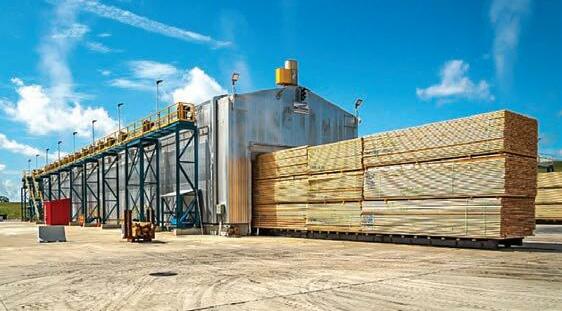

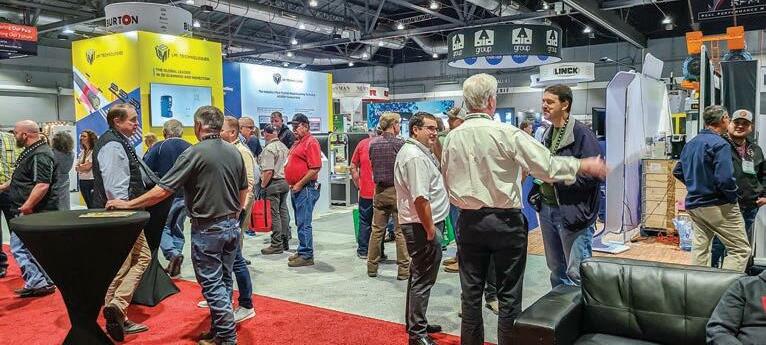
Now, I realize YouTube videos aren’t exactly putting a man on Mars, but for our staff, it kind of was. But just like everyone else, we’re having to teach ourselves new ways to do things. We sent emails: with a lot of colors and pictures and graphics leading up to the industry’s biggest gathering on the West Coast. We were active on social media. TP&EE went as digital as we could, while still remaining true to our in-person roots.
Now that I have certainly oversold these videos, click on over to YouTube and check out all the coverage we are offering to supplement the dedicated review elsewhere in this issue. It was great to hug so many friends from far and wide over the course of the show. Thanks to these videos we can all reminisce, until we see you all again in 2024. I am sure there will be more innovations and automations made that will have us all waiting with bated breath to see how the trio of Shell, Donnell and Johnson cover it all in their Daily Round Up.
Contact Jessica Johnson, ph: 334-834-1170; fax 334-834-4525; e-mail: jessica@hattonbrown.com
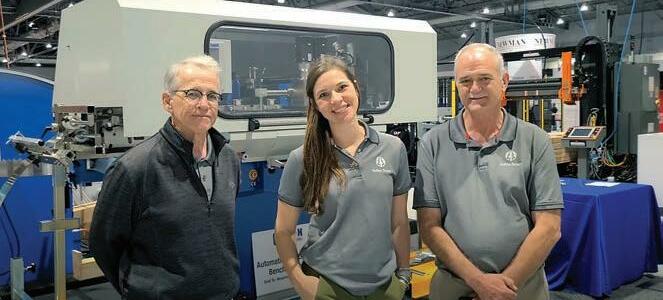
T


12 20 30 40
P
TIMBER PROCESSING ■ NOVEMBER 2022 ■ 5
Editors Donnell, Johnson and Shell after an all day Beer Garden
CLICK HERE IF YOU HAVE NOT ALREADY OPTED IN!
PALLET BLOCK FACILITY PLANNED
BID Group announced a partnership with ArbaBlox Inc. to build a state-of-the-art turnkey composite pallet block plant in Winona, Miss. BID will manage, design, build, install and provide startup services for the $53 million project, the largest of its kind in the country.
The new operation will incorporate BID’s OPER8 platform, the purpose-built, outof-the-box industrial IoT solution. Wood panel expert, IMAL-PAL Group, will provide the equipment and technology for the project.
“ArbaBlox is pleased to have BID Group as its turnkey partner for its new state-ofthe-art composite pallet block manufacturing facility. We chose BID because of their ex-
cellent track record in delivering integrated projects within the wood processing industry and we are delighted to have them on the Winona project with us,” comments Ed Milburn, CEO at ArbaBlox.
Work on site will begin in the fourth quarter of 2022 and commissioning of the facility is scheduled for the first quarter of 2024. Fiber supply for the plant will come from Biewer Lumber’s Winona, Miss. facility, which commenced operations in January 2022.
ArbaBlox and the BID Bio mass Team will begin the development phase of a second project late in 2022.
“We would like to thank ArbaBlox for their trust in our people and integrated solutions,” says Travis McDonald, Executive Vice President, Integrated Solutions at BID.
“The ArbaBlox projects will be the first of many for the
BID Biomass Division which intends to deliver value-added solutions for sawmill residual products.”
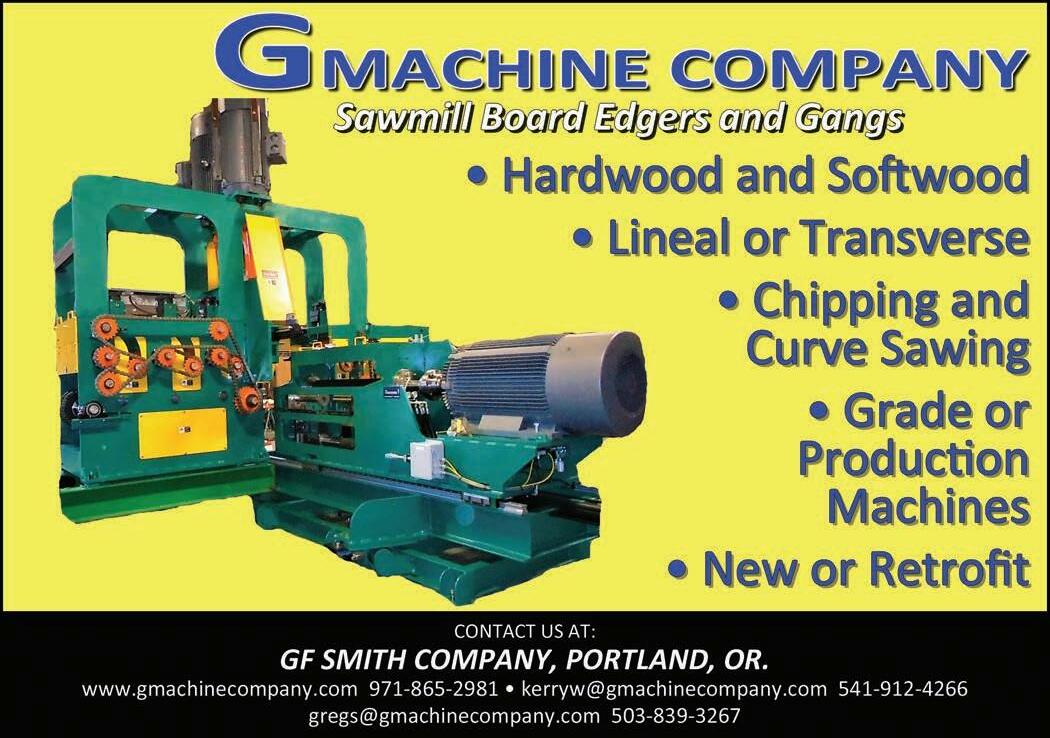
AU TEAM LOOKS AT NEEDLE BLIGHT
A research team in Auburn University’s College of For estry, Wildlife and Environment (CFWE) is working to find solutions to an increasing threat to pine forests needle blight. Through a $2.1 million U.S. Forest Service grant, Lori Eckhardt, a professor of forest health, and her team members in the college—Joseph Fan, associate professor of forest ecology and statistics; Lana Narine, assistant professor of remote sensing and modeling; and Janna Willoughby, assistant professor of population and conservation genetics—are aiming to determine the im-
pacts on productivity and biological causes of needle blight.
Insect pests and fungal diseases are a great concern to the forest industry, as costs associated with damage caused by non-native pests and pathogens within forests throughout the U.S. were estimated to be valued at approximately $4.2 billion annually.
Alabama Forestry Commission (AFC) has been receiving phone calls since early spring from landowners and the public regarding pine needles suddenly turning brown. Many of these calls have come from counties in the northwest and northeast regions of Alabama. The disease has been confirmed in 36 of 67 Alabama counties.
Historically, the disease has only infected longleaf pines, or Pinus palustris, but in the last few years, the disease also has begun to infect loblolly pines,
NEWSFEED 6 ■ NOVEMBER 2022 ■ TIMBER PROCESSING CLICK HERE IF YOU HAVE NOT ALREADY OPTED IN!

CLICK HERE IF YOU HAVE NOT ALREADY OPTED IN!
or Pinus taeda, in young and mature stands.
AFC notes the first sign of infection is discoloration of the needles. Infected needles will contain circular lesions with a brown spot surrounded by a yellow halo. Over time, the infected area will turn brown with a dark red or dark green border. The discoloration begins in the lower portion of the crown and moves up as the disease spreads by rain and wind events. An easy way to identify the disease is if the pine needles look as if they have been scorched by fire, even though there has been no burn.
The cause for this change in behavior of the disease has yet to be determined, but it can be speculated that it may be a new sub-species that has evolved from the original fungal pest, according to AFC.
“An investment in mitigating forest pests, such as those
associated with needle blight, requires adaptive management geared to prevention and remediation that provide economically sound solutions,” says Eckhardt, team leader, CFWE professor of integrated forest pathology and entomology and director of the Forest Health Cooperative.
Through their research, landowners and forest managers may be able to predict future timber revenues more precisely from affected stands and adjust management activities accordingly.
“We hope to determine the distribution and movement of the needle pathogens, determine if their appearance is due to more aggressive strains and understand the disease cycle and the environmental factors that drive their emergence and distribution,” adds Eckhardt. “Non-native pests and pathogens may not only
occur on a large regional scale, but also on isolated acreages. This is vital, as the majority of the 7 million acres of pines in Alabama are privately owned.”
CFWE held a workshop June 26-27 at Auburn University to share current assessments of the brown spot needle blight. Professionals from the Southeast spoke on ways to possibly manage the disease and how it may vary from state to state. Expert presentations included identification, mitigation, genetic diversity and environmental factors.
Landowners are encouraged to contact their local AFC office if their pines are infected with brown spot needle blight. Symptomatic needles can be collected and brought to the Forest Health Dynamics Laboratory at Auburn University for confirmation.
INTERFOR ACQUIRES TWO SAWMILLS

Interfor has reached an agreement with an affiliate of the Kilmer Group to acquire 100% of the equity interests in the entities comprising Chaleur Forest Products for $325 million (Can). Chaleur owns two modern and wellcapitalized sawmill operations in Belledune and Bathurst, New Brunswick, with a combined annual lumber production capacity of 350 MMBF.
Chaleur also operates a woodlands management division based out of Miramichi that manages 30% of the total Crown forest in New Brunswick. This division provides a secure source of fiber supply for the sawmill operations as well as a stable, long-term stream of cash flow from
NEWSFEED 8 ■ NOVEMBER 2022 ■ TIMBER PROCESSING CLICK HERE IF YOU HAVE NOT ALREADY OPTED IN!
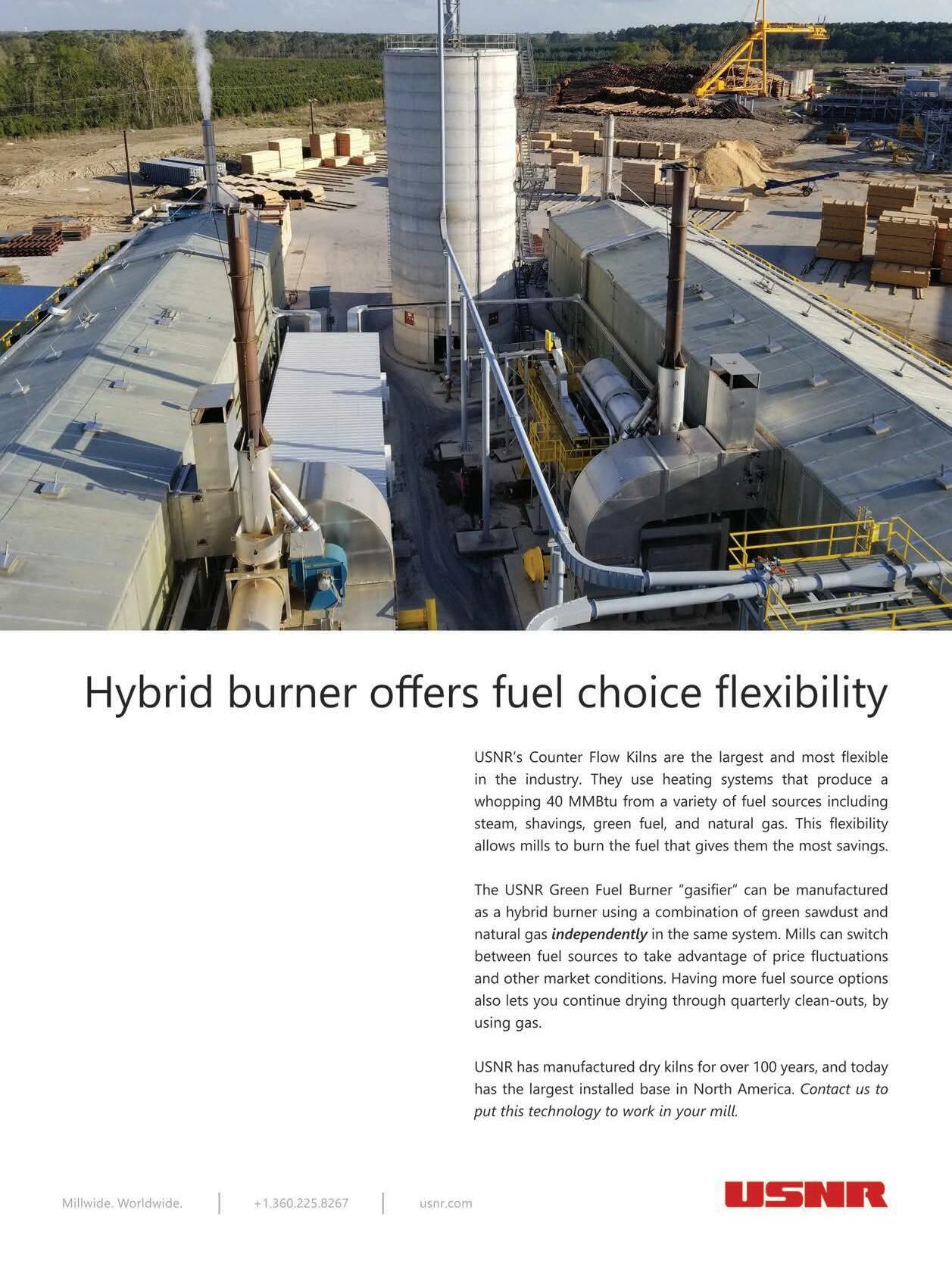
CLICK HERE IF YOU HAVE NOT ALREADY OPTED IN!
third-party log sales, license management fees and silviculture activities.
Interfor will assume Chaleur’s countervailing and anti-dumping duty deposits. As of August 31, 2022, Chaleur had paid CV and AD duties of US$82 million.
“This acquisition is consistent with Interfor’s growth-focused strategy as a pure-play lumber producer and builds upon our recent expansion into Eastern Canada with further geographic diversi-
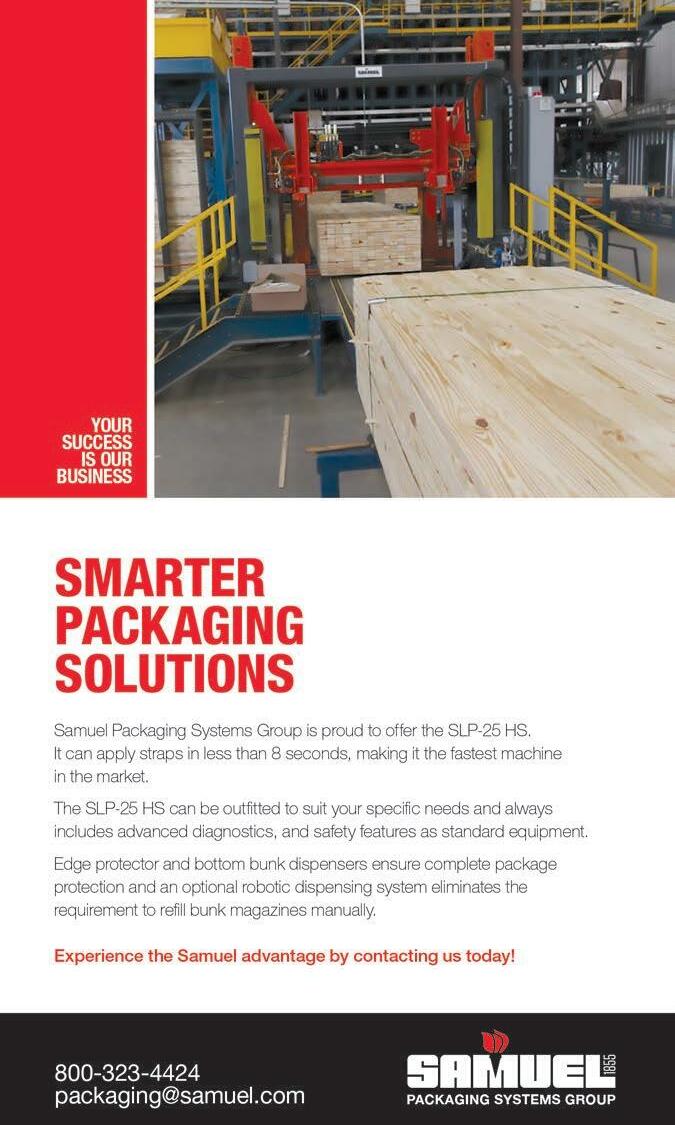
ty,” comments Ian Fillinger, President & CEO. “New Brunswick has a secure, high quality and competitive log supply, a supportive investment environment and proximity to key eastern markets. These are well-managed and efficient mills with a desirable SPF product mix, which fit extraordinarily well within our existing portfolio. Chaleur’s strong management team further bolsters our core lumber strength and we look forward to wel-
coming the team into our company.”
Interfor’s total annual lumber production capacity will increase to 5.1 billion BF, of which 44% will be in the U.S. South, 19% in Eastern Canada, 15% in the U.S. Northwest, 15% in British Columbia and 7% in Atlantic Canada.
The completion of the acquisition is subject to Canadian and U.S. regulatory reviews and customary conditions for a transaction of this kind and is expected to close in the fourth quarter of 2022.
CENTER FOR FOREST BUSINESS STARTS UP
University of Arkansas at Monticello (UAM) hosted a ribbon-cutting ceremony for the Arkansas Center for Forest Business, housed in the UAM College of For estry, Agriculture and Natural Resources building on the Monticello campus. Approximately 200 people attended the ceremony, where Arkansas Governor Asa Hutchinson served as the keynote speaker.
The center was created to provide market-based economic solutions to forest resource issues. It aims to improve business practices for forest enterprises and enhance the economic competitiveness of Arkan sas’ forests in a global economy. Gov. Hutchinson provided seed funds of $450,000 to establish the center in June 2021.
Dr. Matthew Pelkki, professor, and George Clippert Chair of Forestry in the UAM College of Forestry, Agriculture and Natural Resources, serve as the directors of the Arkansas Center for Forest Business. During the ceremony, Dr. Pelkki highlighted the origin of the center, explaining, “About 12 years ago, Dean Emeritus Phil Tappe and I came up with a simple concept: healthy forests, healthy forest economy, healthy forest businesses, and vibrant rural communities are really complementary. They all work together, and it is a win-win-win situation for the forest, the people, and the economy, so we put together a proposal for the Center.”
Dr. Peggy Doss, chancellor of UAM, said the center will partner with programs at the UAM Colleges of Technology in Crossett and McGehee to provide additional educational opportunities to those pursuing forestry-related careers.
For the ribbon cutting, Gov. Hutchinson landed a blow from a sledgehammer on the end of a pre-cut log, knocking free a wooden cookie to reveal the Arkansas Center for Forest Business logo.
NEWSFEED 10 ■ NOVEMBER 2022 ■ TIMBER PROCESSING CLICK HERE IF YOU HAVE NOT ALREADY OPTED IN!
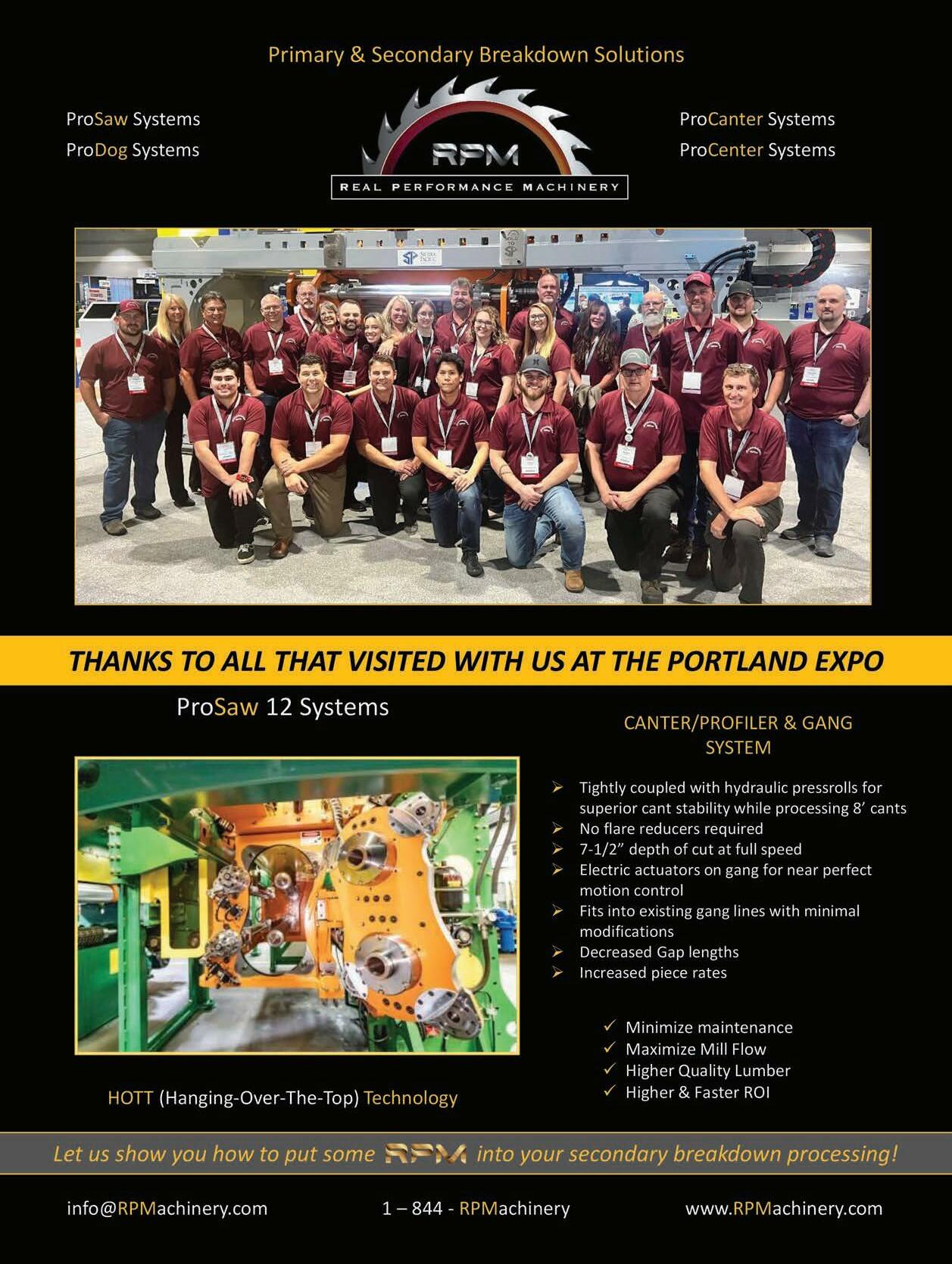
CLICK HERE IF YOU HAVE NOT ALREADY OPTED IN!
THE PLAN WORKING
By Dan Shell
President Jim Neiman shared his appreciation for the Gilchrist community, saying it reminded him of his hometown. “This community was built around the sawmill. The people unite to see it succeed. It’s a beautiful thing to experience and an honor to be a part of.”
erations from Laurel, Miss. The sawmilling roots ran deep, as the Gilchrist name in the industry dates to New Hampshire milling operations in the 1850s.
GILCHRIST, Ore.
Hitting the ground running as soon as the ink dried on its acquisition of a “Specialty Sawmill” from Interfor in October 2020, The Neiman Family is now nearing the end of Phase I of a five-year plan of key upgrades and renovations to the pine board, paneling and shop facility in central Oregon.
Long known as a quality pine board and shop producer, the operation was renamed Gilchrist Forest Products by The Neiman Family, and the mill’s mix of ponderosa and lodgepole pine boards, paneling and 6/4 shop fits well with Neiman’s existing product lines, company officials say. The two-line sawmill features an overhead end-dogging headrig for larger logs and a double-length infeed processing line for small logs.
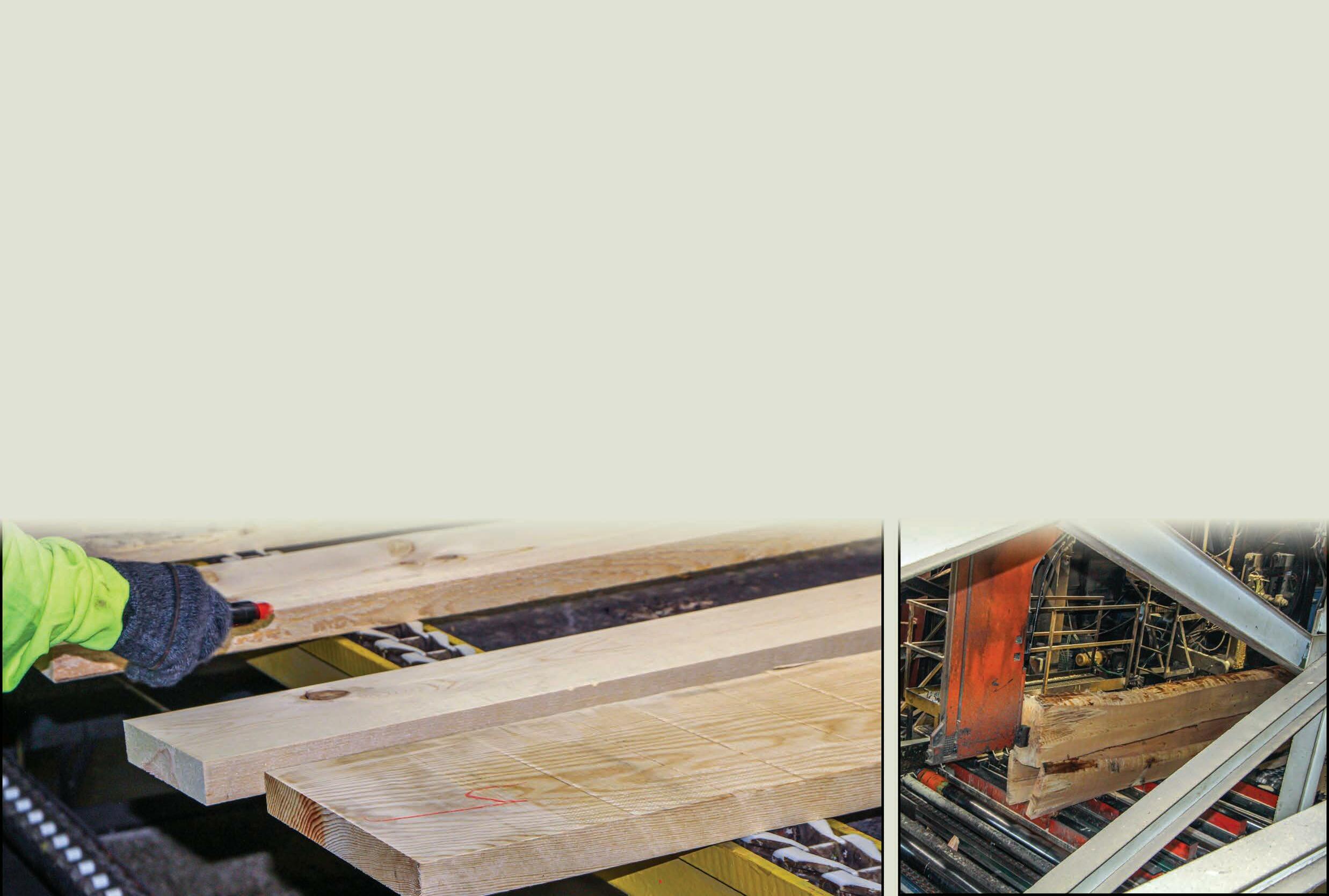
The mill rates as one of the Northwest’s most iconic sawmills, dating to 1938 when it was built by the Gilchrist family that had relocated its lumber op-
The mill opened in 1938, as commemorative brick work on the boiler house attests. The company town that supported the mill was known for its Scandinavian design and architecture and amenities that included one of the first enclosed shopping “malls,” a bowling alley, theater and more.
Family interests sold the mill to Crown Pacific in 1991, and the remaining few company-owned houses in Oregon’s last functioning mill town were sold to their occupants in 1997-98.
Crown completed a small log upgrade in 2000, but declared bankruptcy in 2004. The mill was sold to Interfor in 2006, and the Canada-based company closed the mill in June 2020 citing COVID-re-
Neiman Family breathes new life into historic central Oregon pine mill.
Long known for its quality pine products, the mill fits well with Neiman’s overall product mix and value focus.
CLICK HERE IF YOU HAVE NOT ALREADY OPTED IN!
lated issues. The mill was purchased by The Neiman Family in October 2020.
The Neiman Family operates pine mills throughout the Intermountain region, including Devils Tower Forest Products at its headquarters in Hulett, Wyo., Spearfish Forest Products and Spearfish Pellet Co. in Spearfish, SD, Montrose Forest Products in Montrose, Colo. and the new Oregon mill.
The facilities produce a value-oriented mix of pine products including boards, paneling, premium studs and 5/4 and 6/4 shop. The pine emphasis extends to the heating pellets and a shavings operation that also deliver premium products.


PROJECT LIST

After acquiring the facility, Neiman’s priority was to get the mill back up and running as soon as possible while also pursuing key upgrades to get more out of the mill long term.
Plant manager Mike Zojonc is a veteran pine cutting mill operator. He was starting to look forward to retiring and doing some consulting when the opportunity to manage Gilchrist Lumber came up.
During a presentation he made during the Projects and Planning session of the Sawmill Productivity & Efficiency Conference at the recent Timber Processing & Energy Expo in Portland, Ore., Zojonc
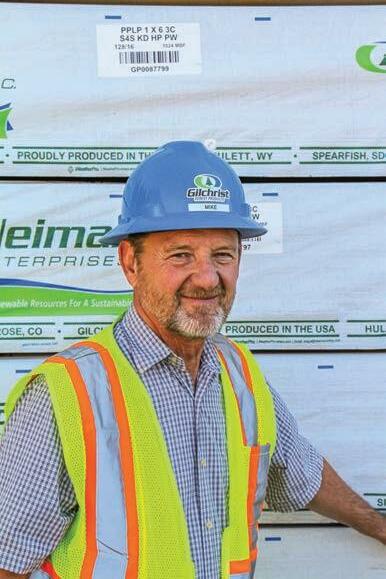 Not a major production machine, but new radius in u-turn from the planer mill trimmer to the sorter line has greatly boosted uptime.
Plant Manager Mike Zojonc
Overhead carriage Maxi-Mill line handles larger log and higher value products.
Not a major production machine, but new radius in u-turn from the planer mill trimmer to the sorter line has greatly boosted uptime.
Plant Manager Mike Zojonc
Overhead carriage Maxi-Mill line handles larger log and higher value products.
CLICK HERE IF YOU HAVE NOT ALREADY OPTED IN!
has completed 43 overall projects and tasks that touch on all areas of the Gilchrist Lumber facility.
The mill restarted in November 2020, and Zojonc cites the efforts of local and regional contractors who worked on upgrades while employees concentrated on mill operations. O&S Contractors handled concrete and mechanical installation; RC Cunningham was mechanical contractor; Olson Industrial Electric performed electrical installation; and Northwest Industrial Hydraulics handled hydraulics. Heading up the projects is Matt Bauer of NexGen as project manager and designer.
Aside from getting many of the former employees rehired and setting up operations, the only real obstacle to restarting the mill was getting the boiler up to speed after it had been down and suffered some piping damage during an early freeze, Zojonc remembers. One key move for the mill was Neiman officials working with local electricity co-op Mid State Electric, which had been planning an expansion anyway, to add an additional 5 megawatts of power capacity to accommodate the mill’s cur-
rent and future upgrades and overall community growth.
The first phase of the facility’s reopening and upgrades include a lengthy list of sawmill projects:
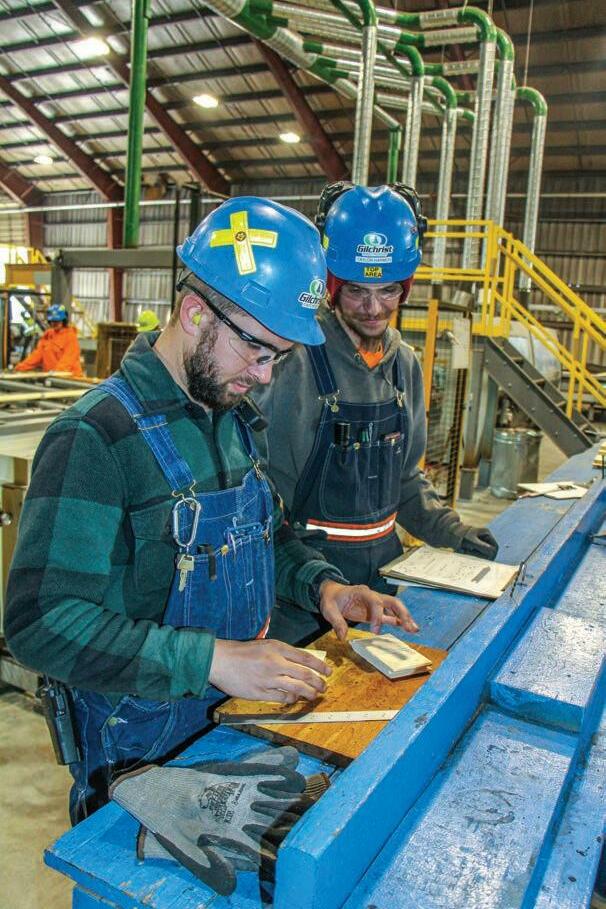
● A new USNR Stick-N-Fork Stacker.
● A new USNR clamshell trimmer with
scanning and optimization system.
● A new USNR 8" Horizontal Shape Saw curvesawing gang.
● USNR Lasar scanning and Mill Expert optimization package for the MaxiMill overhead end-dogger large log headrig that provides full 3D image solutions.
● New Wellons kiln controls.
The planer mill also received extensive updates, the biggest being the installation of a new Doucet automated paneling line and Leadermac and Friulmac processing machines to produce Neiman’s paneling line. The new paneling production equipment went into a high ceiling lumber shed adjacent the planer line and accepts boards to produce Neiman Supreme solid pine paneling. Additional planer mill upgrades include:
● New Samuel package strapping and wrapping systems at the planer mill and at the new paneling production line.
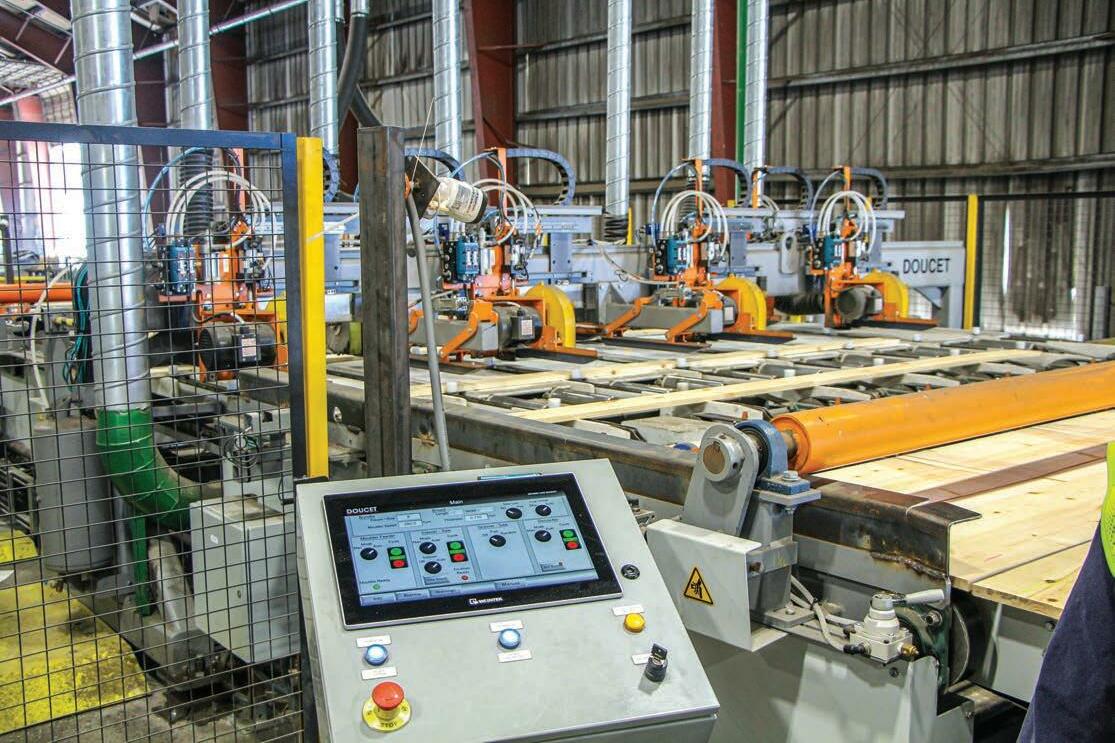
● A new Clarke’s dust collection system with baghouse.
● Adding eight trays to the planer mill’s tray sorter system.
● One upgrade that has “made all the
14 ■ NOVEMBER 2022 ■ TIMBER PROCESSING
New paneling line adjacent planer mill has automated many formerly manual production processes.
Quality control is key for Neiman’s premium pine paneling products.
CLICK HERE IF YOU HAVE NOT ALREADY OPTED IN!
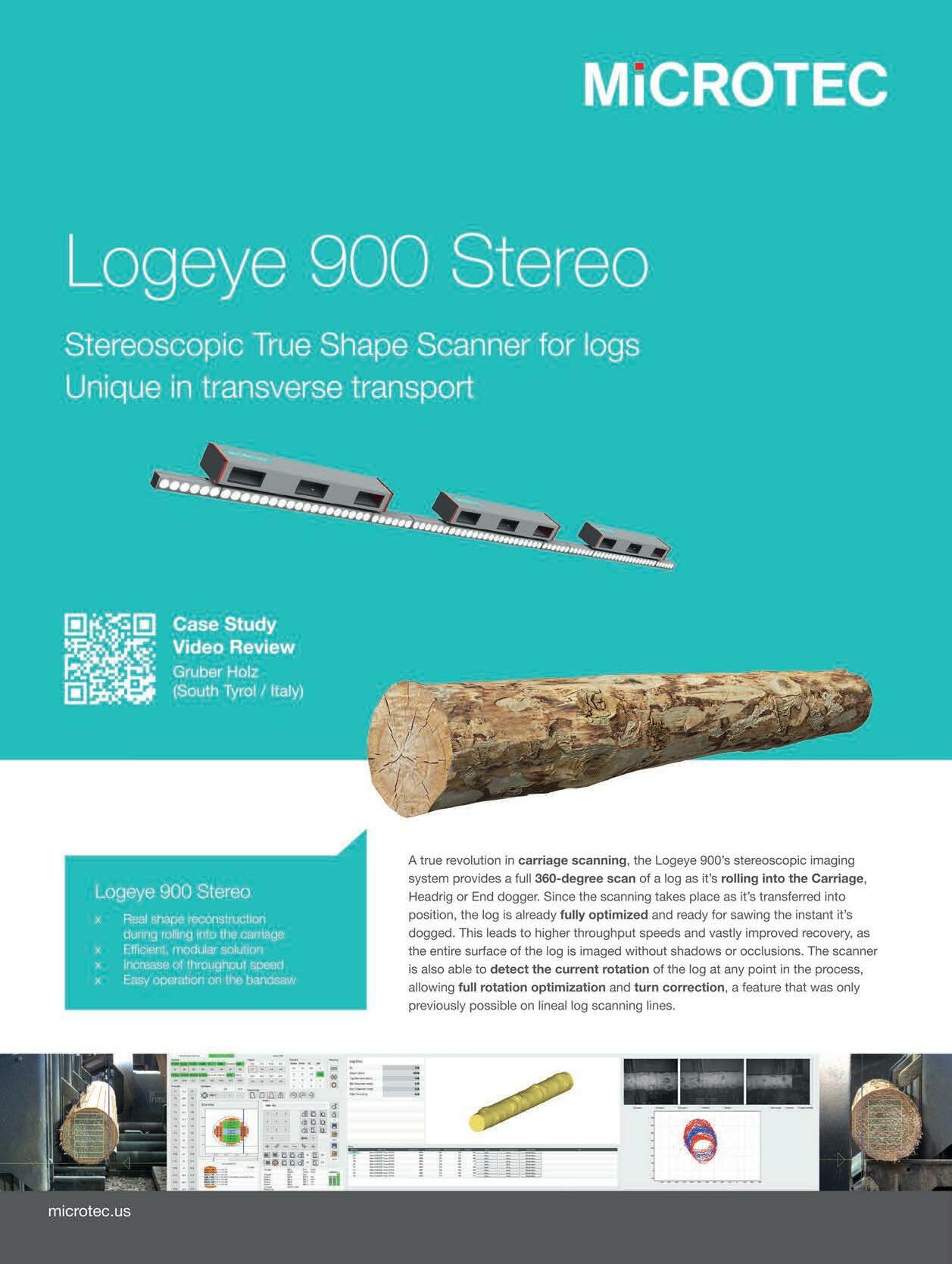
CLICK HERE IF YOU HAVE NOT ALREADY OPTED IN!
difference in the world,” according to Zojonc, is a new radius from USNR that incorporates two 90° sections with a short straight section in between to execute a 180° u-turn from the planer trimmer outfeed to the sorter. The improvement has almost eliminated problems with board flow, he adds.
“It’s easier to keep the chains in time and there’s less chain stretch,” Zojonc says, noting the new design has helped take running uptime percentages on the machine from the mid 80s to the upper 90s.
PHASE 2
As the new curve-sawing gang starts up this fall, the mill is moving into Phase 2 of its five-year plan. In addition to continuing equipment upgrades, the big goal is to be able to re-route some material, primarily center cants, from the MaxiMill to the new gang.

In the current two-line setup, the USNR DLI line feeds cants to the new gang, and the Maxi-Mill feeds to either a Salem triple horizontal resaw or to a board edger. Phase 2 includes building a
goes up and over, allowing cants to be introduced to the new USNR gang.
Looking ahead, a new USNR Transverse High Grader automated grading system with Deep Learning AI package will go in the planer mill early next year when the new sorter trays go in, a new Iseli top and face grinder is on its way to the filing room, and a new Rawlings grinder is coming early next year as part of a residuals processing upgrade.
While some of the projects have aimed to boost productivity and output, Zojonc says, “We’re looking to enhance all areas of the mill, including recovery and grade recovery in addition to environmental projects.”
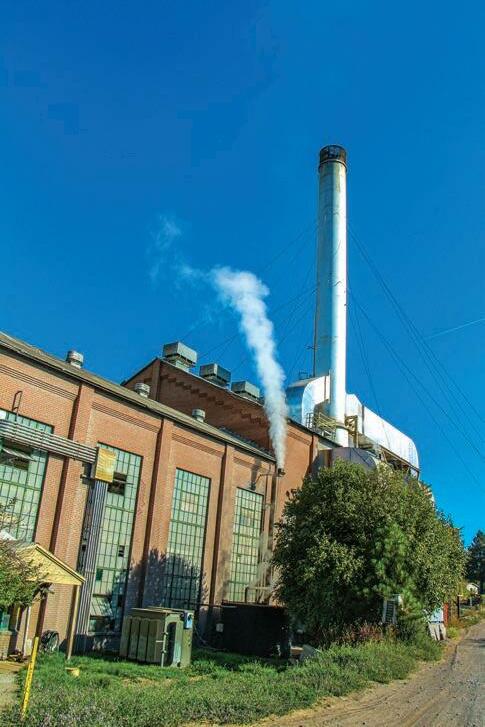
New CEO, Steve Henson, says he is excited about the future and contribution of the Gilchrist operations, and he looks forward to strong financial performance in order to support our family of businesses and future growth and expansion.
COMMUNITY
One commitment that The Neiman Family is making is for the mill to have a “green” profile in the local community when it comes to emissions and particularly the Little Deschutes River that flows through the property and fills the mill site’s original log pond. The waterway is a key source of local recreation and a major tributary of the world-renowned Deschutes River and watched closely by water quality advocates. According to Zojonc, the mill is developing a zero-discharge process to use bio-swales to capture runoff before it reaches the pond.
In addition, The Neiman Family is being proactive on air quality, installing
16 ■ NOVEMBER 2022 ■ TIMBER PROCESSING
New Wellons ESP has boosted air quality, added to the mill’s “green” community profile.
CLICK HERE IF YOU HAVE NOT ALREADY OPTED IN!
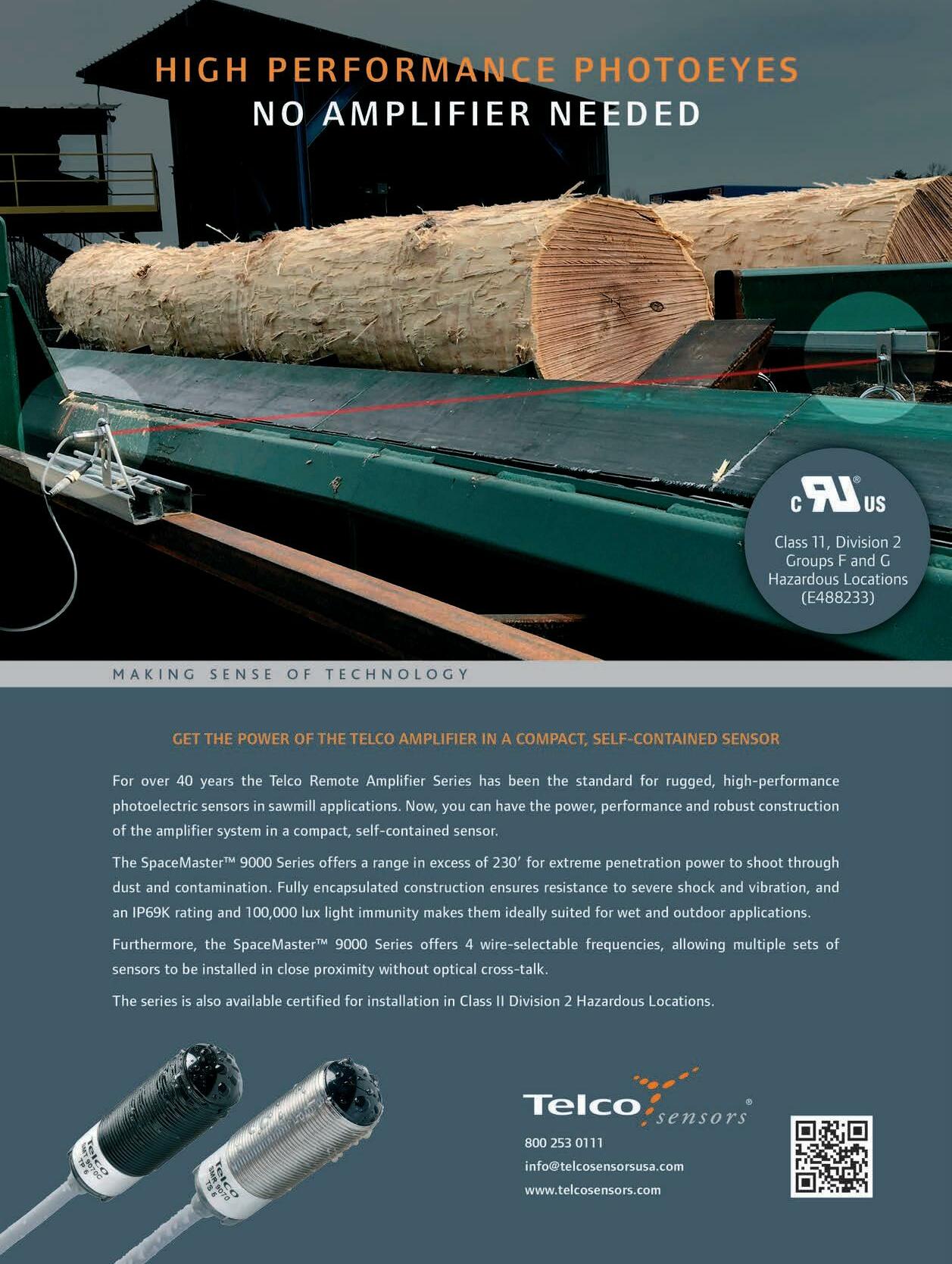
CLICK HERE IF YOU HAVE NOT ALREADY OPTED IN!
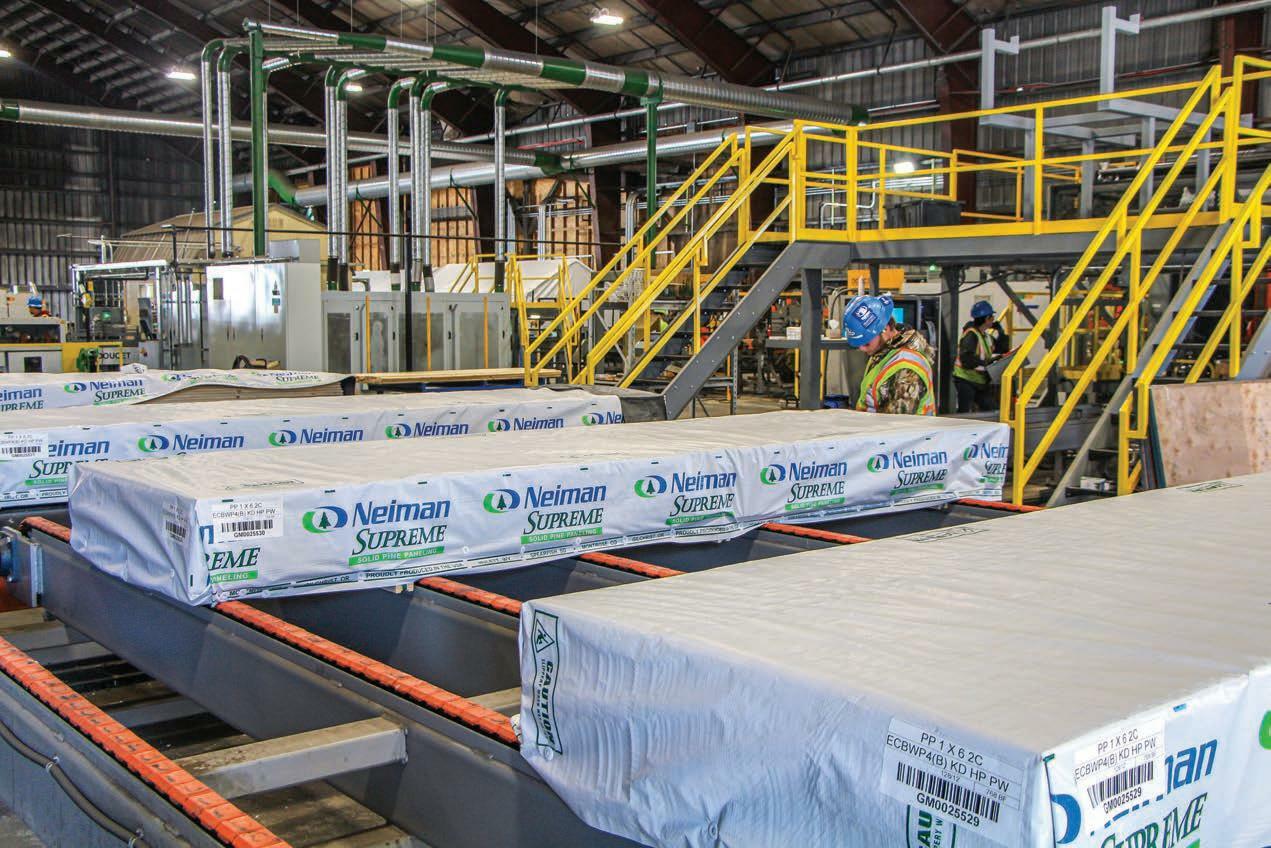

 Multiple projects since the acquisition have sought to boost quality and recovery, and also make environmental improvements, not just add to production numbers.
Multiple projects since the acquisition have sought to boost quality and recovery, and also make environmental improvements, not just add to production numbers.
CLICK HERE IF YOU HAVE NOT ALREADY OPTED IN!

CLICK HERE IF YOU HAVE NOT ALREADY OPTED IN!
PERSON IN
traction of the Northwest wood products industry in the past four years.
PORTLAND, Ore.
More than 110 wood producer companies, representing hundreds of mill operations, sent personnel to the Timber Processing & Energy Expo held September 28-30 at the Portland Exposition Center. More than 1,200 (non-exhibitor) attendees from 35 states and 15 countries registered for the event. They combed the aisles of 170 exhibitor companies, who were represented by more than 900 exhibitor personnel.
The event has always been heavier to the Northwest wood products industry, and was so again, especially since companies in other regions of the country might have been hesitant to send personnel coming out of the pandemic. “But there was still an okay showing from sawmillers in the Southern U.S.,” comments Rich Donnell, show director.
Donnell adds that the total attendee numbers were on par with the 2018 event, which isn’t bad considering the pandemic (which canceled the 2020 event) and taking into account some con-
“Four years ago was a long time ago, with all that has transpired since then,” Donnell adds. “Walking throughout the show floor I sensed a measure of relief and enthusiasm from people who were happy to be out and returning to this event. TP&EE provided a gauge of normalcy.”
Though lumber markets, housing starts and interest rates weren’t the be-all end-all they were in 2021, many sawmillers had equipment upgrades on their mind. A survey of a sampling of the exhibitors conducted following the event revealed that more than 80% of exhibitors either had confirmed an order or indicated it was possible that discussions at TP&EE will contribute toward receiving an order. Many exhibitors also reported they had accumulated some good leads for down the road.
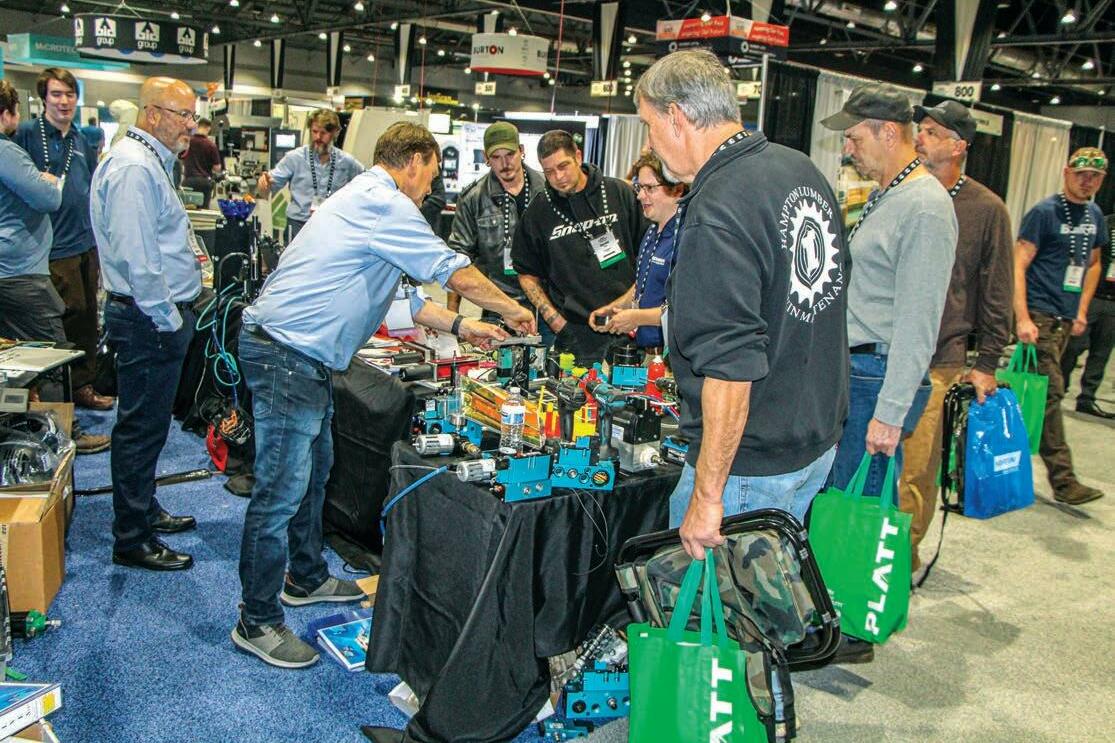 The biennial Timber Processing & Energy Expo returned to life and sawmill companies and equipment exhibitors turned out in force.
Lumbermen found plenty of goods to be had at TP&EE.
The biennial Timber Processing & Energy Expo returned to life and sawmill companies and equipment exhibitors turned out in force.
Lumbermen found plenty of goods to be had at TP&EE.
CLICK HERE IF YOU HAVE NOT ALREADY OPTED IN!
Nearly 94% of the exhibitors surveyed said they were satisfied or very satisfied with the quality of attendees, and more than 70% were pleased with total attendance in general.
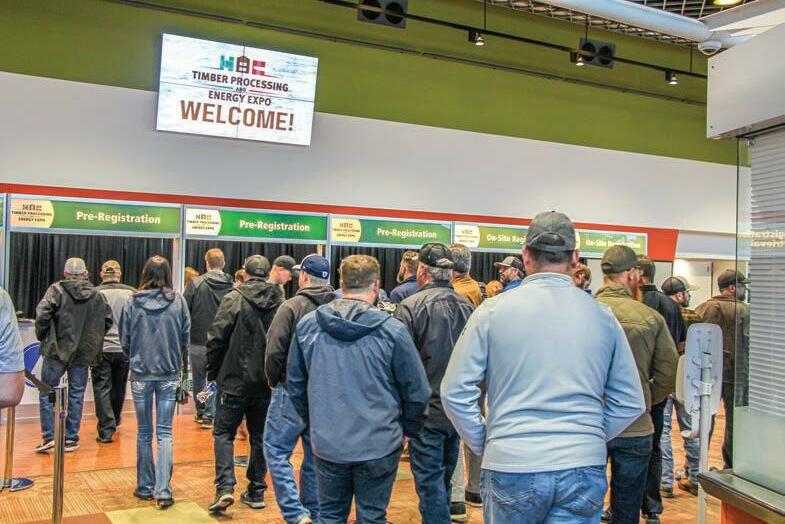
“We will continue to survey the exhibitors but the ‘early returns’ look good,” Donnell said. “We’re very appreciative of their commitment to the event, a commitment that really lasted four years since the last show. We all know everybody can conduct business virtually, but our industry still has a sense of community that lends itself to socializing and doing business in person.”
Many wood producer companies showed their support for the show and the industry by sending lots of personnel. For example, Sierra Pacific Industries registered more than 100 and Hampton Lumber registered more than 150.
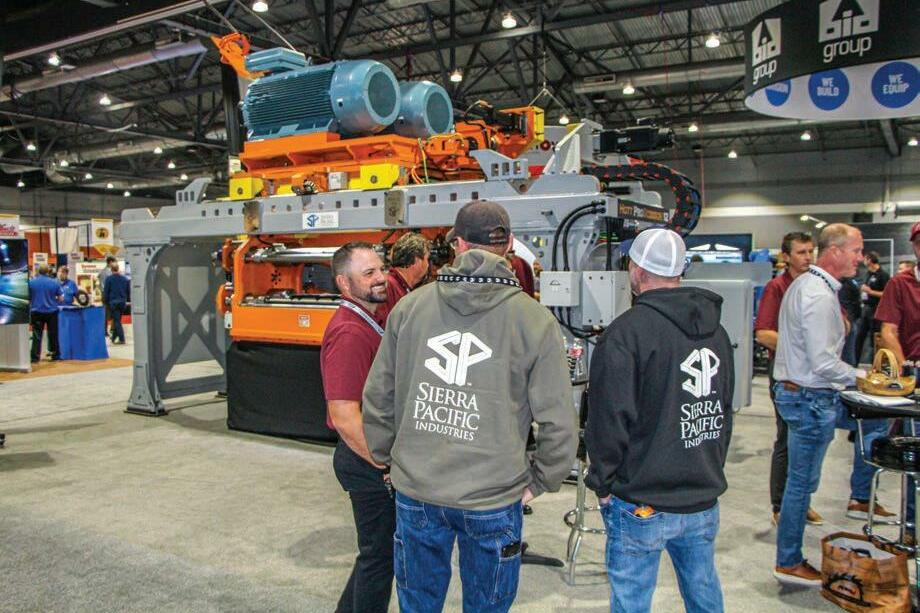
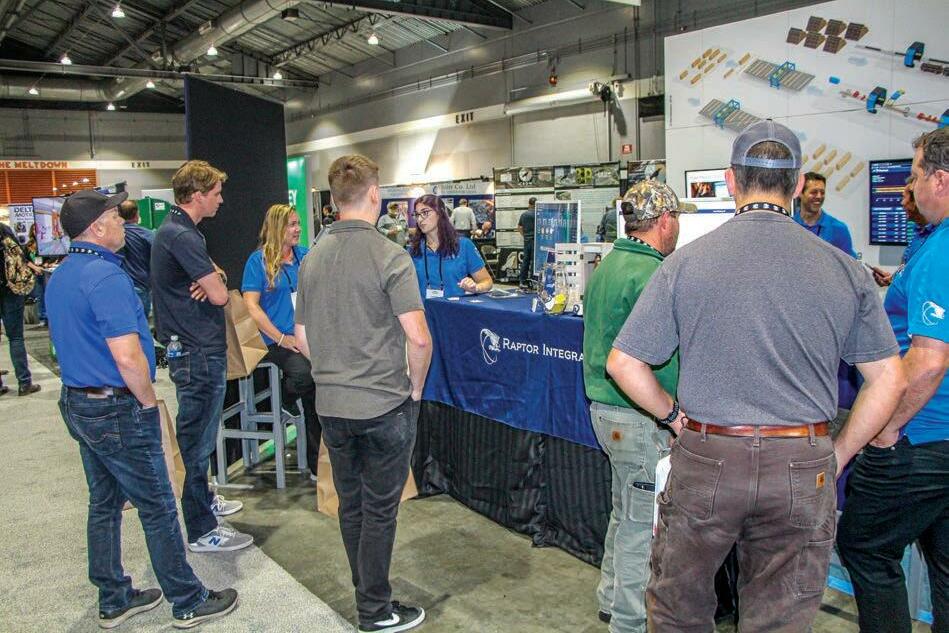
The Portland show has always been for mill personnel as well as for executive management, Donnell adds. “I just think it’s totally cool looking down the aisles and seeing somebody from nearly every conceivable position in a sawmill operation wearing the logo of their company on the back of their jacket. I know they may not be the ultimate decisionmaker, but what they have to say trickles heavily back to the decision-makers. And I thought they were totally engaged with most of the exhibitors.”

TP&EE formed alliances with several “Preferred Partners” for assistance in promoting the event. One of those was the Western Wood Products Assn., and it was obvious WWPA’s participation proved beneficial in bringing in sawmillers. “There are several associations throughout the country that we need to tie into TP&EE and I believe the example of WWPA puts us on the right path in that regard,” Donnell says, adding several wood industry publications also did a great job in promoting TP&EE.
Highlight of the first day was the presentation by Timber Processing magazine of its 34th annual Person of the Year award to Eric Schooler, recently retired CEO of Collins and well known Northwest lumberman. (See page 26 for full coverage of the presentation.)
TP&EE also hosted two one-day conferences. One was entitled “Sawmill Productivity & Efficiency,” which featured 10 speakers addressing current and future sawmilling.
“During the past 15 years many changes have taken place in lumber manufacturing methods. These have been in response to worldwide changes in the character and value of the raw material, rising costs, shifting human resources,
TIMBER PROCESSING ■ NOVEMBER 2022 ■ 21
Mill companies allowed their personnel to enjoy the show.
Raptor Integration talked customized solutions.
Real Performance Machinery displayed a primary sawing machine bound for Sierra Pacific Industries.
CLICK HERE IF YOU HAVE NOT ALREADY OPTED IN!
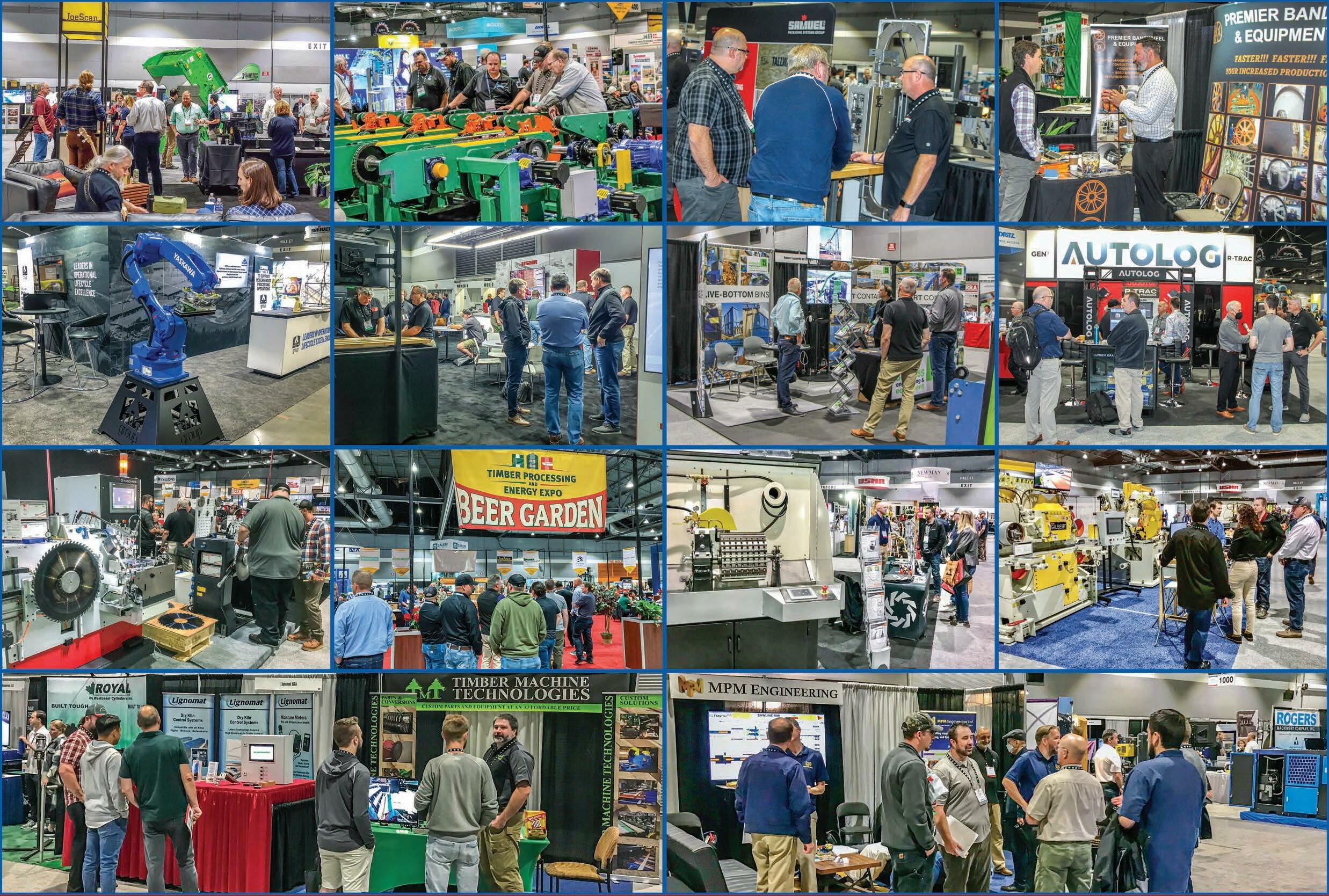
CLICK HERE IF YOU HAVE NOT ALREADY OPTED IN!

CLICK HERE IF YOU HAVE NOT ALREADY OPTED IN!
and new conversion concepts,” commented Chris Brown, VP at Mid-South Engineering, during his talk “Simplicity Is the Ultimate Sophistication.”
Brown pointed to the evolution of sawmill size: 1977, 54.66MMBF; 1997, 133.04MMBF; 2007, 180.42MMBF; 2015 to present, average greenfield production per mill, 285MMBF.

Current challenges include labor, lead times and capital costs, and lack of simplicity, he said, pointing to control systems and design complexity. Though the human resource is less content to do manual labor, he is more mobile and better educated, Brown added.
Terry Brown, longtime director of the Lumber Quality Institute, spoke on the evolvement of quality control leadership, and looking to the future said AI technologies and system-wide integration will change the role of QC to monitoring systems and calibrating primarily, which will leave more time for drying and planer evaluation and other areas, along with some continued role to watch the process and diagnose problems.
Brown said you can have the latest, greatest greenfield sawmill but without management commitment to excellence, listening to their people, and committing to world class maintenance and support, significant dollars are lost.
He injected a quote from legendary lumberman Buford Price: “It is management’s responsibility to provide a process that works. It is the employee’s responsibility to cause that process to perform.”
Vaughn Emmerson, engineering manager with Sierra Pacific Industries, spoke on minimizing downtime during shutdown and equipment installation. “Get into the details,” Emmerson said. “Break
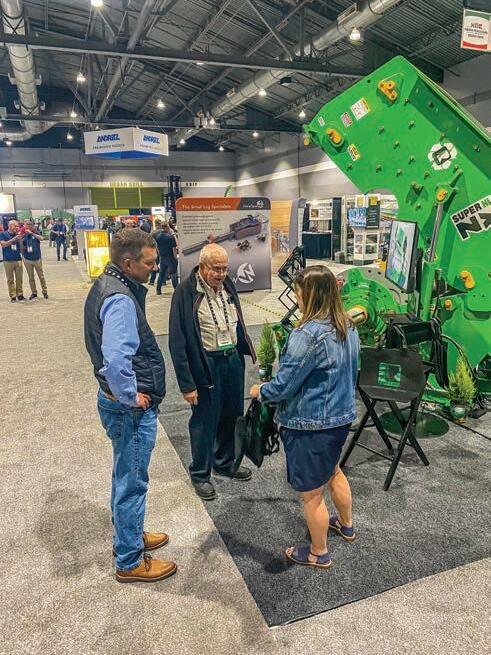
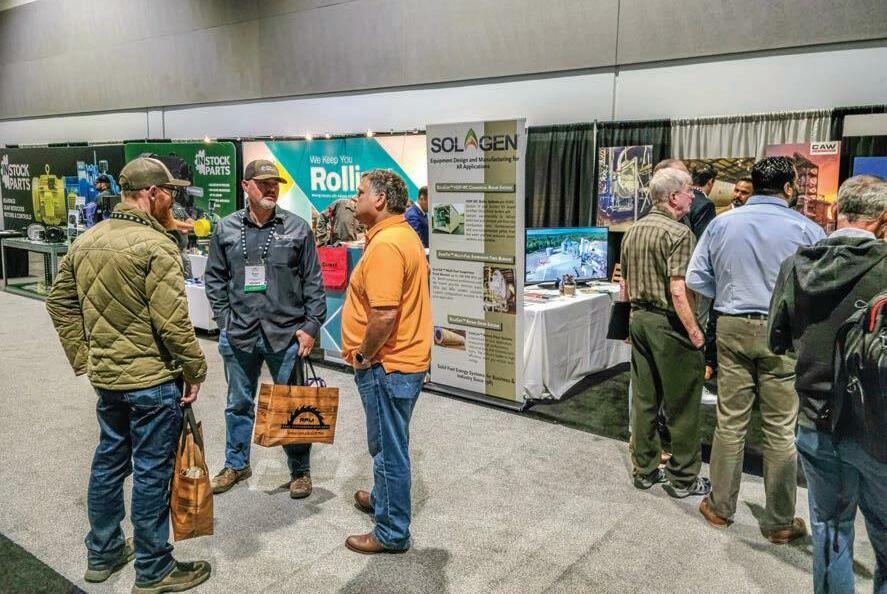

24 ■ NOVEMBER 2022 ■ TIMBER PROCESSING CLICK HERE IF YOU HAVE NOT ALREADY OPTED IN!
He stressed organization, including staging in the order that equipment will be used and keeping a map of equipment staging with numbers and colors identification.

Emmerson recommended building and testing offline as much as possible. “It helps get the bulk of the problems and hang ups out of the way, and gives proper time to trouble shoot,” he said.
Training the crew before installation is crucial as well, for sake of familiarity with equipment: post drawings in the breakroom, have operators visit another facility and even operate equipment at another facility. And have mill electricians wire up new equipment with contractors.
Mike Zojonc, plant manager at Gilchrist Forest Products in Oregon, and a longtime sawmiller, spoke on what makes a ➤ 48





TIMBER PROCESSING ■ NOVEMBER 2022 ■ 25
Attendees seemed to spend most of the day at the show.
Legendary sawmiller Red Emmerson of Sierra Pacific Industries, middle, made the rounds with SPI President Todd Payne, left.
CLICK HERE IF YOU HAVE NOT ALREADY OPTED IN!
SCHOOLER CUTS DOWN THE NET
older, sometimes I feel older, hair gray, and less of it, etc. Forests are replanted, trees grow faster and straighter and our mills get a lot more lumber or plywood, or EWP out of every tree. Actually, EWP didn’t exist 50 years ago.
1972, my start, at a big high production sawmill, there was not a single computer, no PLCs, no VFDs. Sales orders were typed in triplicate and sent to the mill. That mill had J-Bar sorter #2! It didn’t work well. The rest of the world still had green chains.
My timing was lucky. Crude electronics were showing up. Nobody understood or believed in them. Computers were slow, bulky, expensive, unreliable. The guys on the floor didn’t understand or believe in them.
It was the start of the automation. As a supervisor you worked and maneuvered only as well and as fast as your crew. Technology was moving fast, faster than our industry for sure. There certainly were lots of false steps in the automation evolution. Shadow scanning (edger), feely finger scanners (trimmer), mechanical relays, cart sorters, arc sawing, and on and on: Most worked but were impractical or they were soon outdated by newer technology and ideas.
which was hosted by Hatton-Brown Publishers, Inc. and sponsored by Real Performance Machinery, occurred during the Timber Processing & Energy Expo at the Portland Expo Center in Portland, Ore., and at the Hatton-Brown Media Presentation Center in the middle of the show floor. Timber Processing magazine Editor-in-Chief Rich Donnell delivered opening remarks on the history and evolvement of the award, and Senior Editor Dan Shell spoke about Schooler’s career before presenting the award to Schooler, who received a standing ovation from a packed crowd. Here is Schooler’s acceptance speech:
Thank you to Timber Processing magazine for this special honor as my career winds down. I feel like
azines at home.
Longevity goes a long way: In my case 50 GREAT years in this industry—although, there were a few recession years that challenged the heart.
It is truly an enormous honor to represent our industry. Our public reputation has gone up and down. We have been attacked over the years by many, but with the need for housing, climate change, carbon, those same people now recognize this industry as part of the solution!
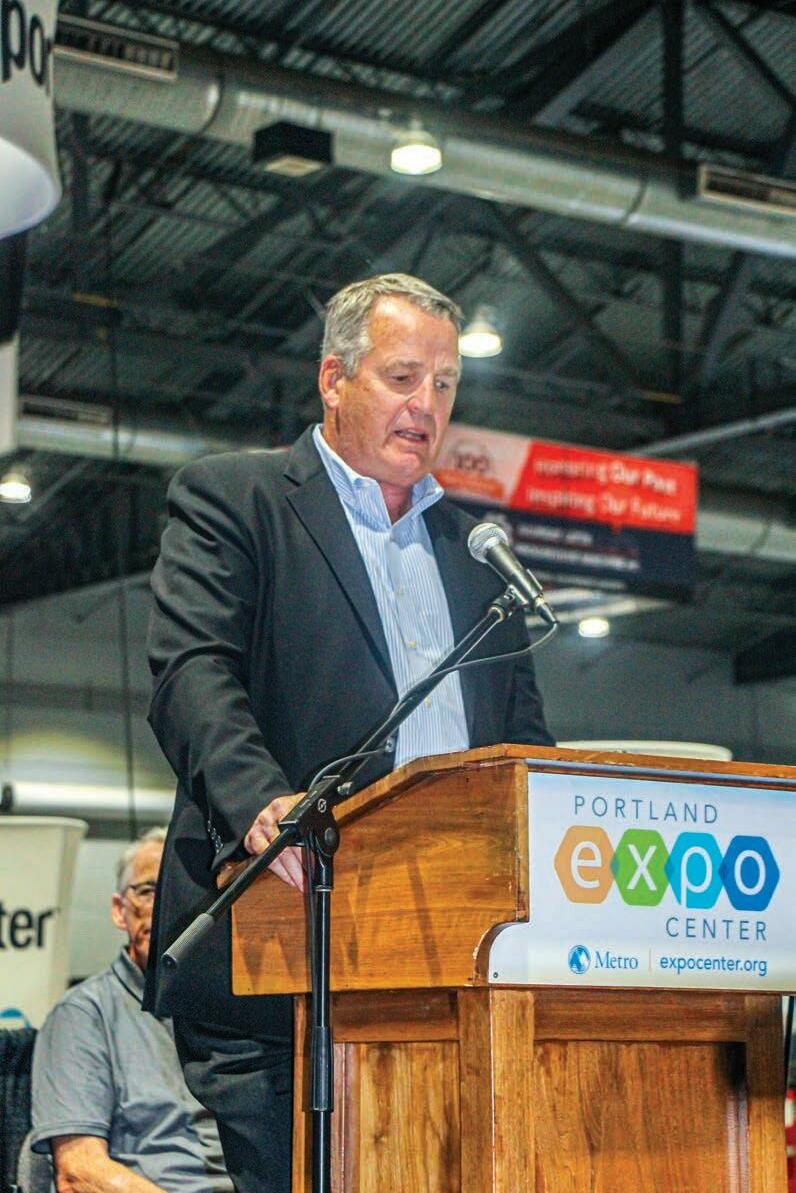
A lot has changed in my 50 years in the timber industry. Yes, I look

Now, five decades later we feed values and parameters into computers and they scan, process and operate almost every machine, every decision in the mill. Operators now basically oversee and watch for flow interruptions. The result is more output, fewer line workers, better grade, better working conditions, and maybe most important, more recovery from every log. We learned to rely on those who develop and maintain the computers, scanners, PLCs and automation.
I have had the great fortune to work for incredible people and companies. In my early years I was exposed to supervision
presented Eric Schooler the 34th Annual Person of the Year Award.
Schooler: “I will miss the brainstorming, the creative solutions, the teamwork.”
Many friends of Eric Schooler attended the ceremony.
26 ■ NOVEMBER 2022 ■ TIMBER PROCESSING CLICK HERE IF YOU HAVE NOT ALREADY OPTED IN!
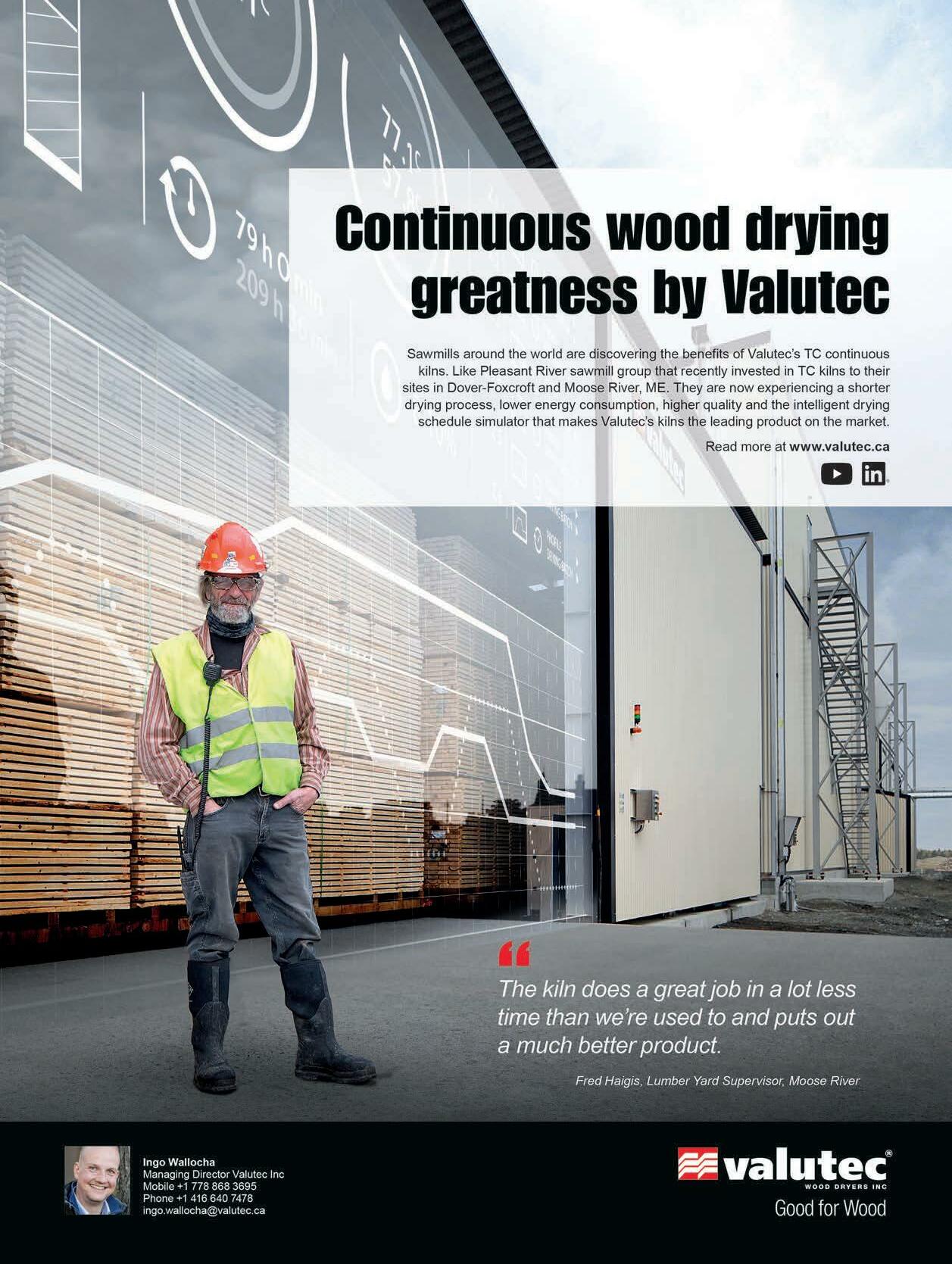
CLICK HERE IF YOU HAVE NOT ALREADY OPTED IN!
in literally all areas of sawmilling, log yard to shipping and on all of the shifts.
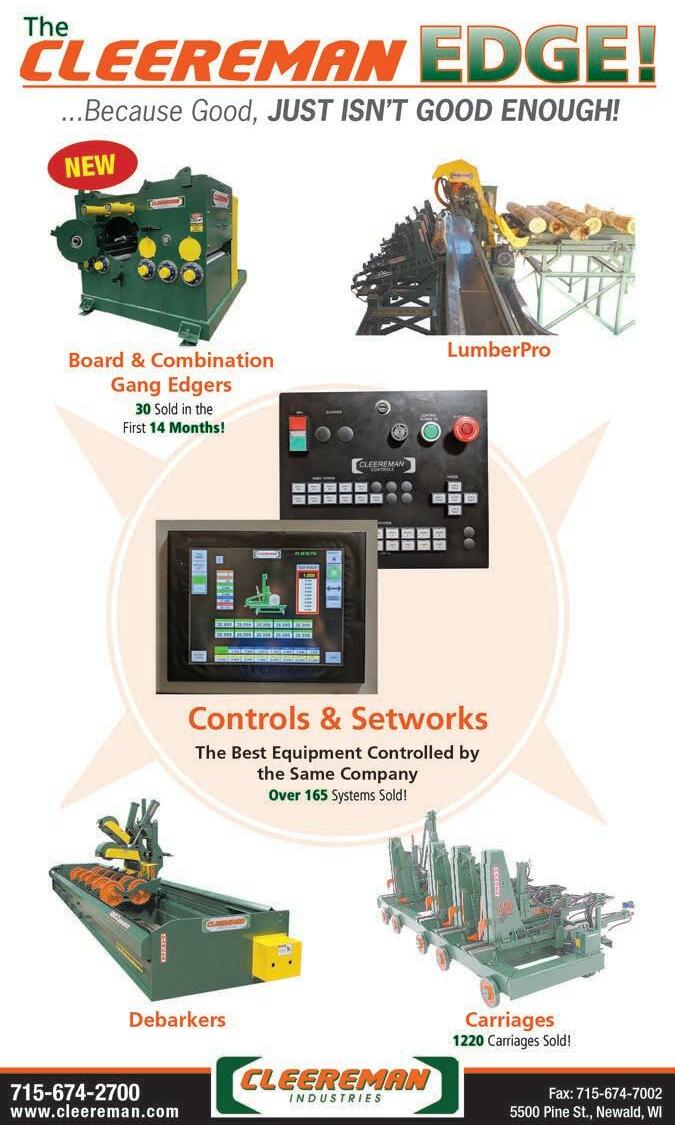
There is a big picture.
My last 35 years have been a dream. Starting at Hampton Lumber when it was a one mill company, led by John Hampton. And my last 20 years leading the Collins Companies for the amazing Collins Family. Privately held, family businesses are special. I have worked with really great people throughout these two companies. Their respective mottos— “Find a Better Way Every Day” and “Do the Right Thing”—say a lot. I was part of something special.
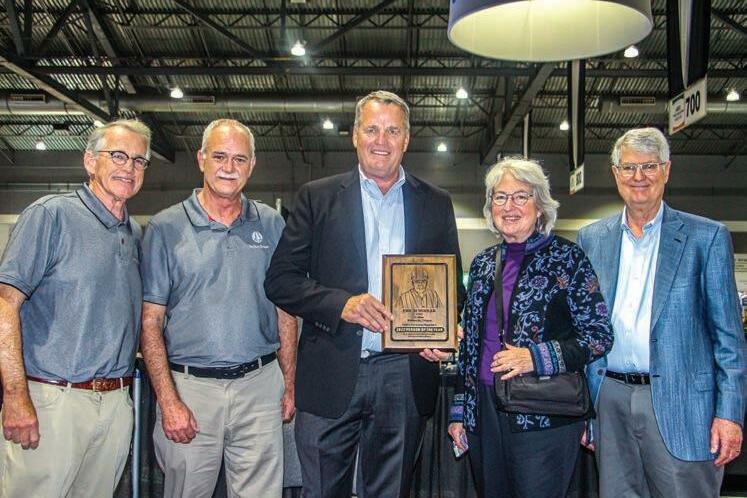
It has been a fascinating time to work in this business. Every day is the same, and by that I mean always changing. It has been an era of applied technology and always, continual improvement.
As I wind down my career, I will miss the brainstorming, the creative solutions, the teamwork. And I will miss all the many fascinating characters…absolutely wonderful people…and the incredible comradery within this industry.
To you young folks starting out: Work hard, volunteer for everything, ask questions, and at the same time question the answers.
Make responsible choices. Manage time and energy. Nurture relationships and be good stewards to our forests and operations.
I can only imagine what technology and opportunity will bring this industry in your 50 years.
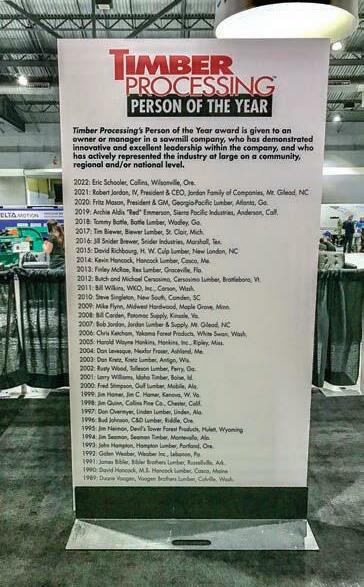
I appreciate this award, a kind acknowledgement for a long career. I wish I could do it all over again.
Again, thank you.
T P
Left to right, Timber Processing editors Rich Donnell and Dan Shell, Eric Schooler, Cherida Collins Smith (Board Chair), and her husband Glenn Smith
28 ■ NOVEMBER 2022 ■ TIMBER PROCESSING CLICK HERE IF YOU HAVE NOT ALREADY OPTED IN!

CLICK HERE IF YOU HAVE NOT ALREADY OPTED IN!
THINKING FORWARD
By David Abbott
PIEDMONT, Mo.
It wouldn’t be unfair to say that the forest products industry, both logging and milling, is a little behind the times in the part of Missouri where Price Sawmill, Inc., operates. That’s according to Alan Price, 44, President of the company. But far from going with the flow, Price is proactively striving to get ahead of the curve with updated equipment both in the sawmill and in the woods on the two logging crews the company fields. He hopes that this forward thinking pioneering spirit
The rationale and the goal are simple: “We hope to be able to move more volume with less people safely,” Price explains, adding, “And we want to take our existing employees and extend the life of their job by making their job easier, because the incoming work force is just not there.”
Price Sawmill has been doing business for almost 50 years. Alan’s father, Donnie Price, started the business with two of his brothers in 1973. The mill is currently on its third physical location. It saws for flooring, railroad ties and some
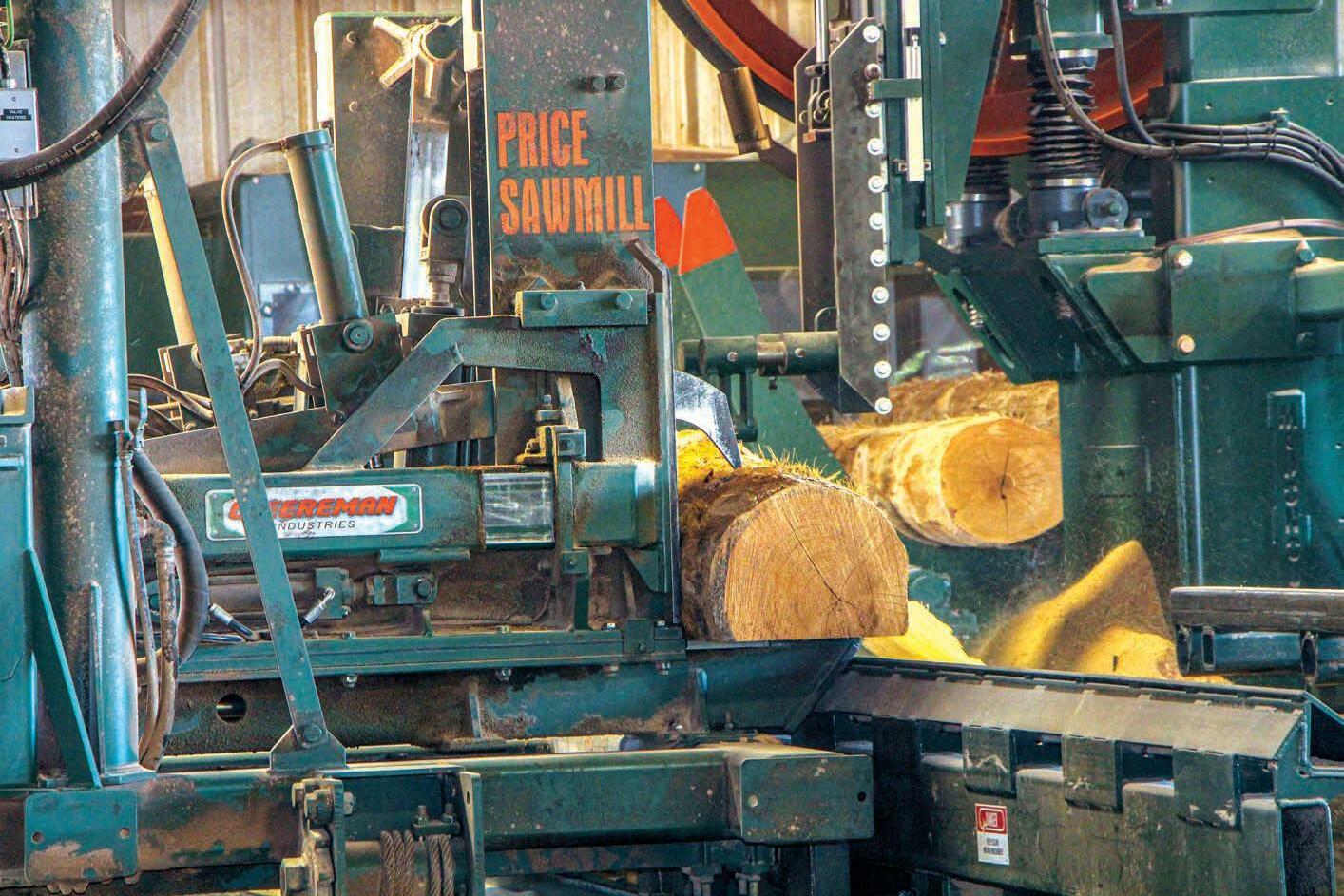 Family hardwood operation Price Sawmill looks to get ahead of the curve with upgraded technology in the mill and in the woods.
This summer the mill switched from a circle saw to a McDonough double cut band headrig, with Cleereman carriage, cab and controls.
Family hardwood operation Price Sawmill looks to get ahead of the curve with upgraded technology in the mill and in the woods.
This summer the mill switched from a circle saw to a McDonough double cut band headrig, with Cleereman carriage, cab and controls.
CLICK HERE IF YOU HAVE NOT ALREADY OPTED IN!
saw mill added its first West Plains resaw in 1999. In 2017, Price Sawmill moved operations to its third location upon completion of a completely new mill that took a year to plan and another to install.

This July, Price Sawmill replaced its old circle saw headrig with a McDonough 62 in. double cut bandmill with Cleereman carriage/controls. “We’re still learning some stuff,” Alan admitted when Timber Processing visited in late September. “Things are going fairly smoothly, but there’s a learning curve going from circle to band mill.”
The Price team handled much of the project themselves. Local manufacturer American Built Machinery (ABM) and contractor Ray Tharp at RTM Industrial Maintenance, who does a lot of work with Cleereman, were instrumental.
Price says they positioned the operator cab on the opposite side: “Normally it would be sitting right next to the headrig looking directly at the face of the log, but after working with Cleereman we decided to move it to the other end of the log deck looking at the end of the log, so we can get the end of the log line closer to the saw line.”
The plan is to gain greater yield from logs with the double cut. Moreover, Price adds, “If markets don’t allow us to run full production or if timber capacity is not high enough, we can slow down and just saw on the headrig, and not the resaw. The way the markets are right now, that may be something we look at.”
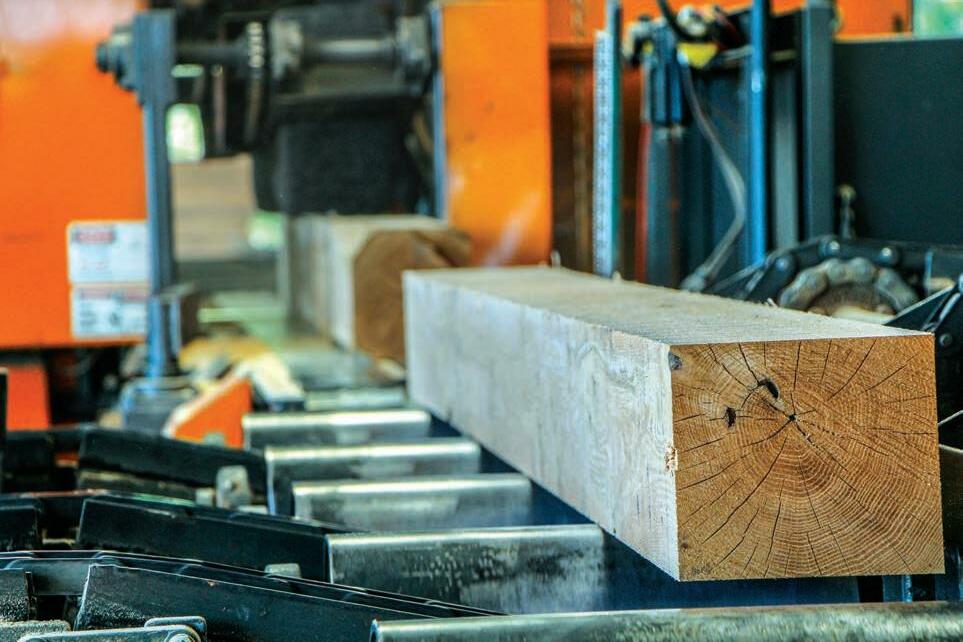
IN THE RED
The red oak flooring lumber market is terrible, Price says. “It has fallen almost in half since the summer,” he laments. “I am told it is general economy driving it; exports to China have slowed and I think it is just homeowner choices. I think they’d rather put tile and laminate down than red oak. Red oak has just been a thing of the past for 20 years, seems like.”
That’s not great for mills here, where timber supply is about 80% red oak (the balance is white oak, hickory and other hardwoods). “Within our logging reach, this is red oak country,” Price says. “We have to go 75 or 80 miles to get away from this mix.” Eddie Adams, a log buyer for Independent Stave Co. who works closely with Price, says it is just natural regeneration.
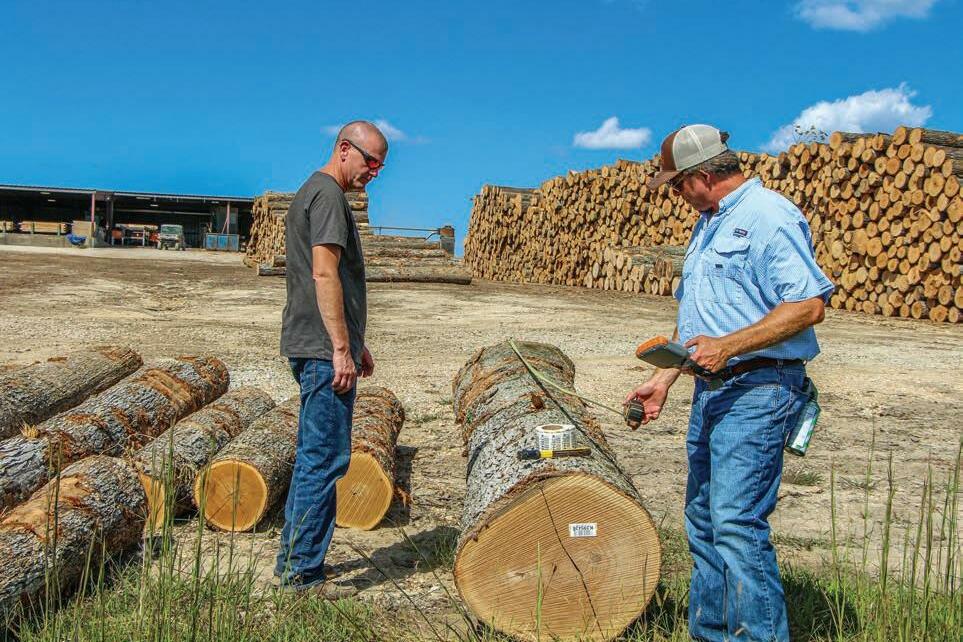
“It was pine country, but it switched with land conversions and red oak became dominant,” Adams says. A native of Butler, Ala., Adams earned his forestry degree from Mississippi State.
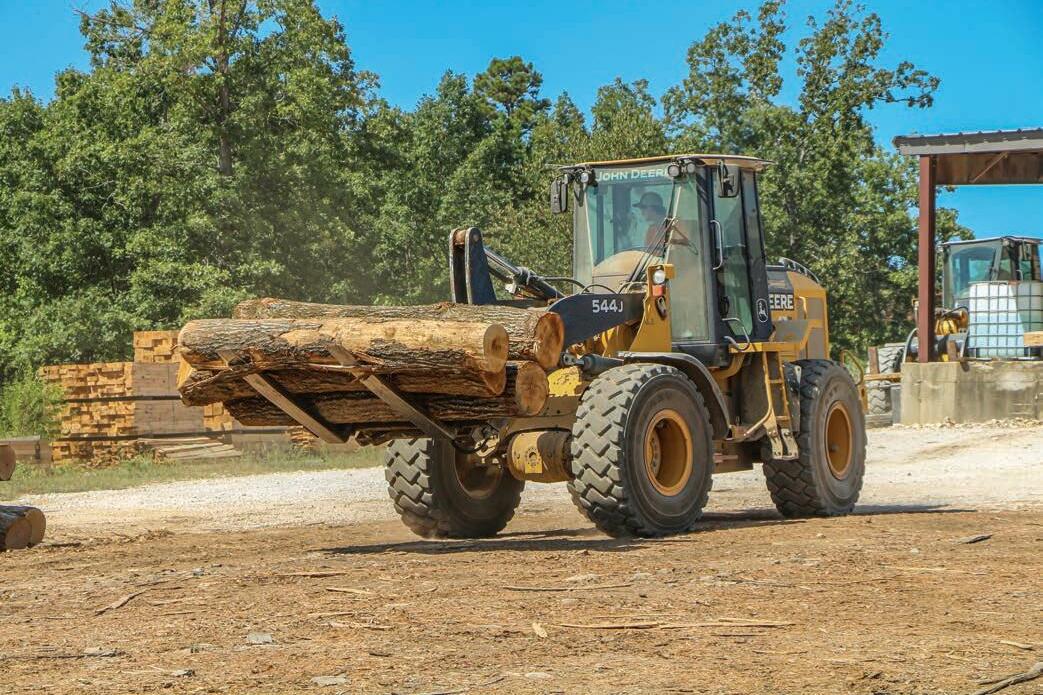
TIMBER PROCESSING ■ NOVEMBER 2022 ■ 31
Two Deeres on the log yard have 20,000 hours; Price says they are some of the best machines the family company has owned.
Price Sawmill cuts mostly red oak for flooring, ties and pallet stock.
Alan Price, left, checks measurements with Independent Stave log buyer Eddie Adams, right.
CLICK HERE IF YOU HAVE NOT ALREADY OPTED IN!
ago, but his experience further south gives him some perspective that others in the area may lack.
“Our company has seen the writing on the wall,” Adams says. “We have even started to partner with the White Oak Initiative to try to bring back the white oak and sustain a more healthy forest. This is a very poor growth site so it tends to a lot of low quality hardwood due to the age and the soil conditions as much as anything: dry rocky upland. A lot of the
that has been high graded for the last hundred years. So when you’re going back through these stands, some of which have been logged three or four times, there has been a lot of residual damage. You have the pallet market to get rid of some of those lower quality logs.”
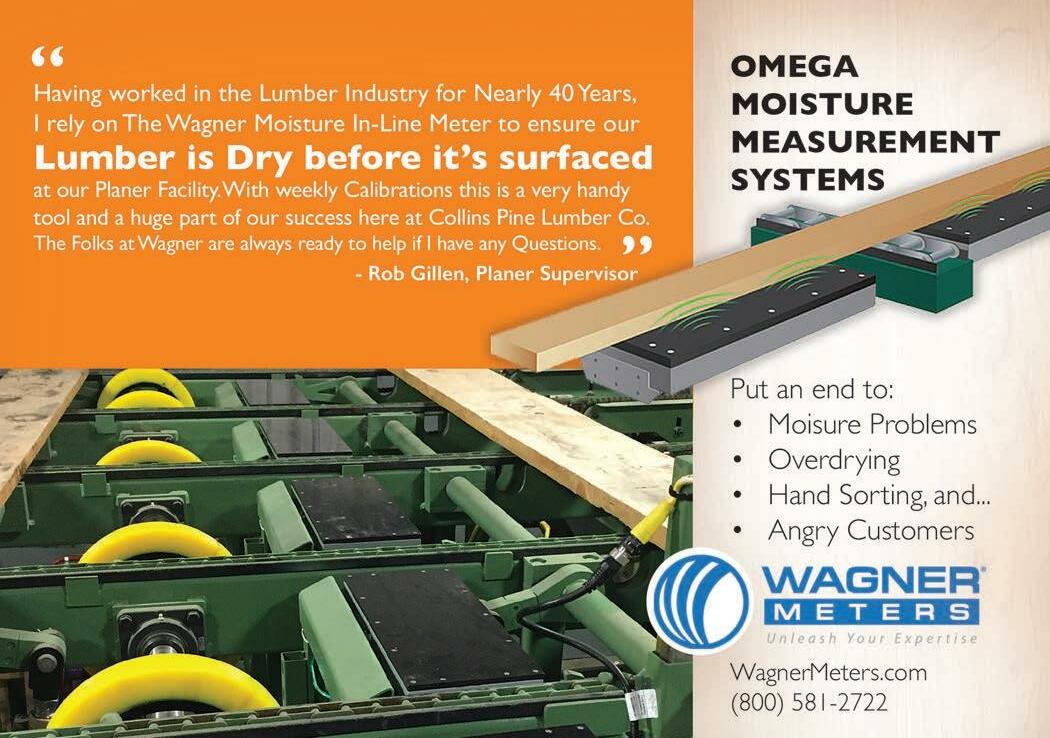
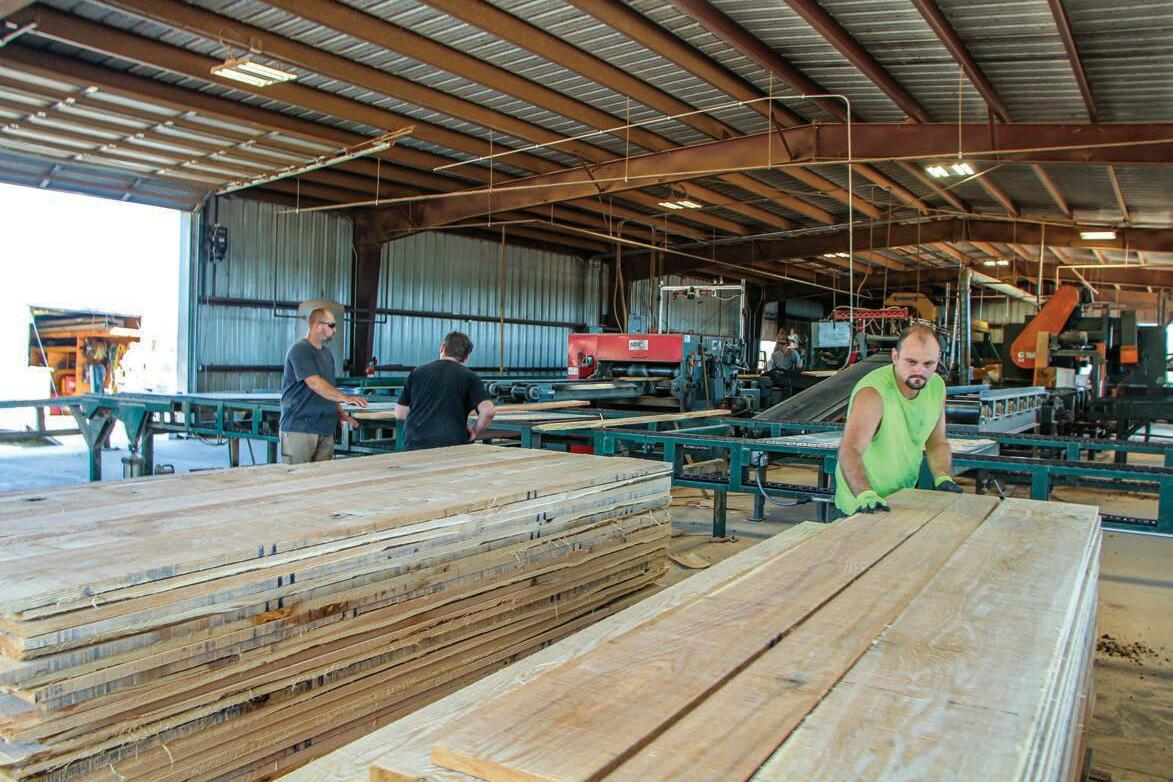
With that in mind, Price says that on their own timberland (the family owns about 5,000 acres), he realized, “We will have to manage it a little different or we
have MDC (Missouri Dept. of Conservation) and the Forest Service, but consulting foresters are basically non-existent within 100 miles.” So about eight years ago Price Sawmill hired a certified forester, Steve Burm, with a background in both the Forest Service and MDC.
“I think he does a real good job for what we do,” Price says. “However, you still have to convince a landowner to let you manage and that is really hard to do here. We do have some landowners that will
32 ■ NOVEMBER 2022 ■ TIMBER PROCESSING
A team of eight pulls and stacks off the chain; many have been with the company a long time.
CLICK HERE IF YOU HAVE NOT ALREADY OPTED IN!
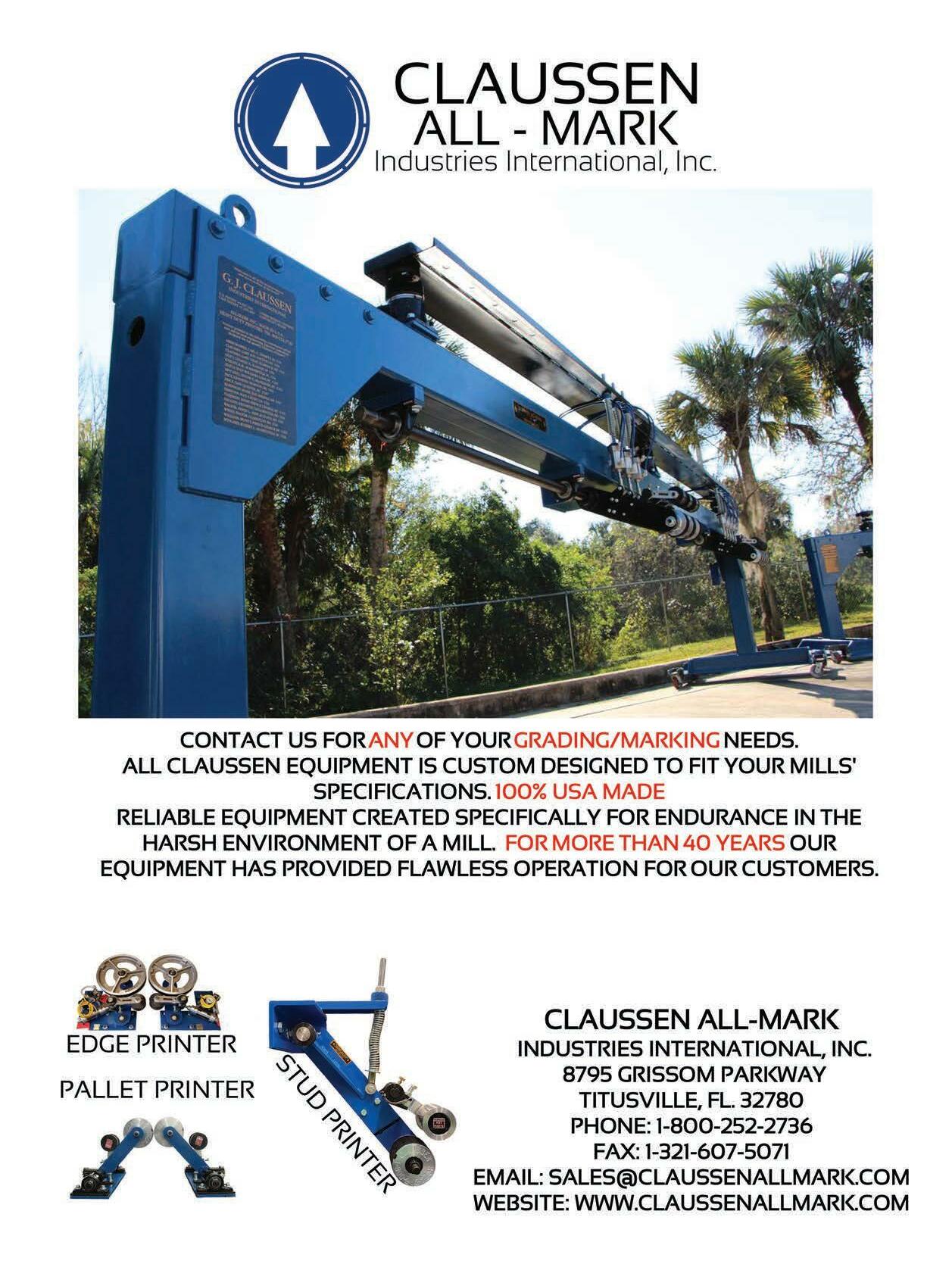
CLICK HERE IF YOU HAVE NOT ALREADY OPTED IN!
we see fit.” Some landowners, unfortunately, fail to take into account the benefits of managing land for long-term sustainability rather than short-term profitability. Adams concurs. “If we try to grow a better quality tree, of course up front we may take a little bit more of a hit on the rate of return,” he acknowledges. “But
MILL OPERATIONS
Price recently drilled a well and installed a pump, with plans to start watering the log yard next spring. In early fall, log inventory was low, down by at least

half, due to decreased harvesting capacity; Price recently lost its third in-house crew and has yet to replace them. “I like to go into the winter with about a million and a half feet, and I am going to be really lucky to get there,” he says.
A Mellott debarker preps logs on the south side of the mill. From there a pair of John Deere 544J wheel loaders move logs onto the mill infeed deck. Both loaders have more than 20,000 hours. “We’ve had to do very little to them, just service, and have no need to upgrade those,” Price says. “Those are two of the best machines we have ever run. They have been really nice to us. And they’ve kept us away from DEF.”
Below the mill, a vibrating conveyor feeds a Precision 58 in. chipper with 6x6 screen. Up top, the new bandmill headrig runs Olsen band saws with a .125 kerf while the resaw has a kerf of .105. Price sends bands about every other week to Yoder Saws in Kahoka, Mo., for sharpening and filing. “They do a great job,” Price says. “We are in the process of building a room on the side of the mill for band storage and a potential filing room, but as of now I don’t have a need for a filing room; I don’t need the overhead.”
Much of the equipment here is manu-
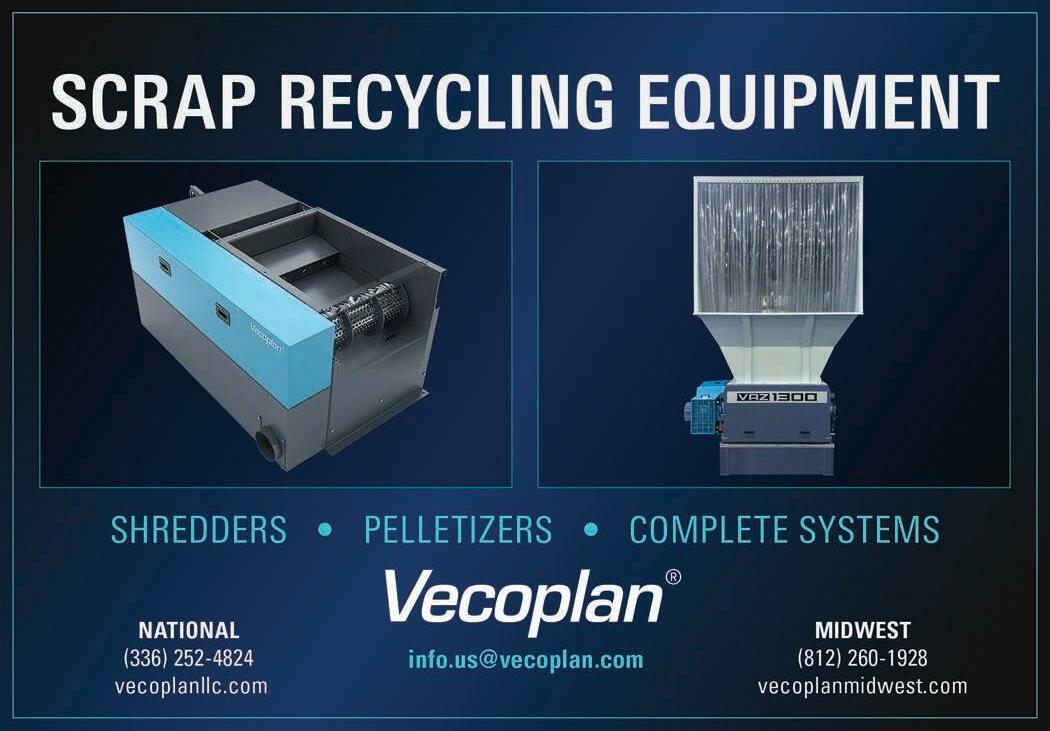 of return on our investment.”
of return on our investment.”
34 ■ NOVEMBER 2022 ■ TIMBER PROCESSING
Company founder Donnie Price, left, is 80 and still mans a resaw 40 hours a week; his son Alan, right, now runs the show.
CLICK HERE IF YOU HAVE NOT ALREADY OPTED IN!

CLICK HERE IF YOU HAVE NOT ALREADY OPTED IN!
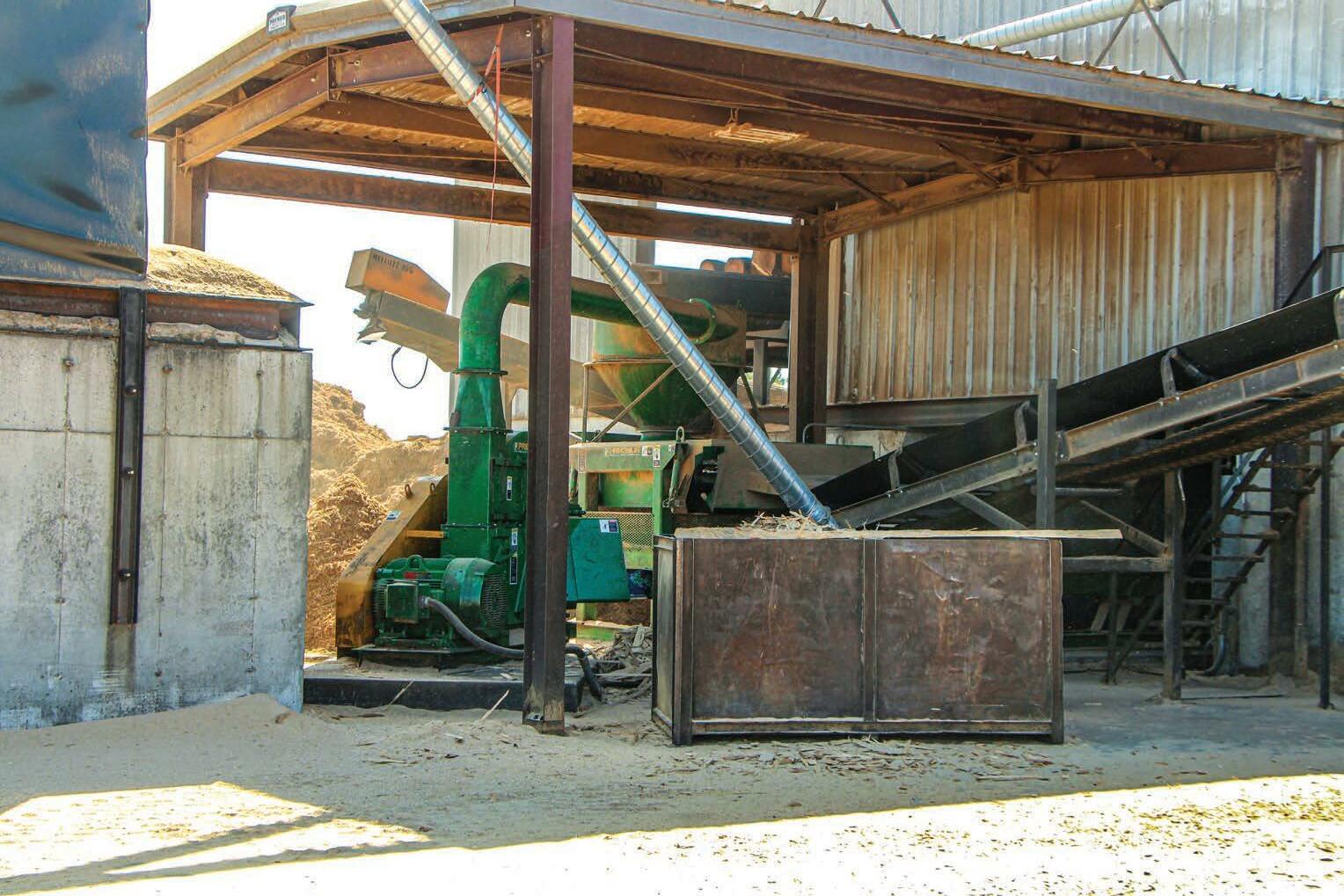
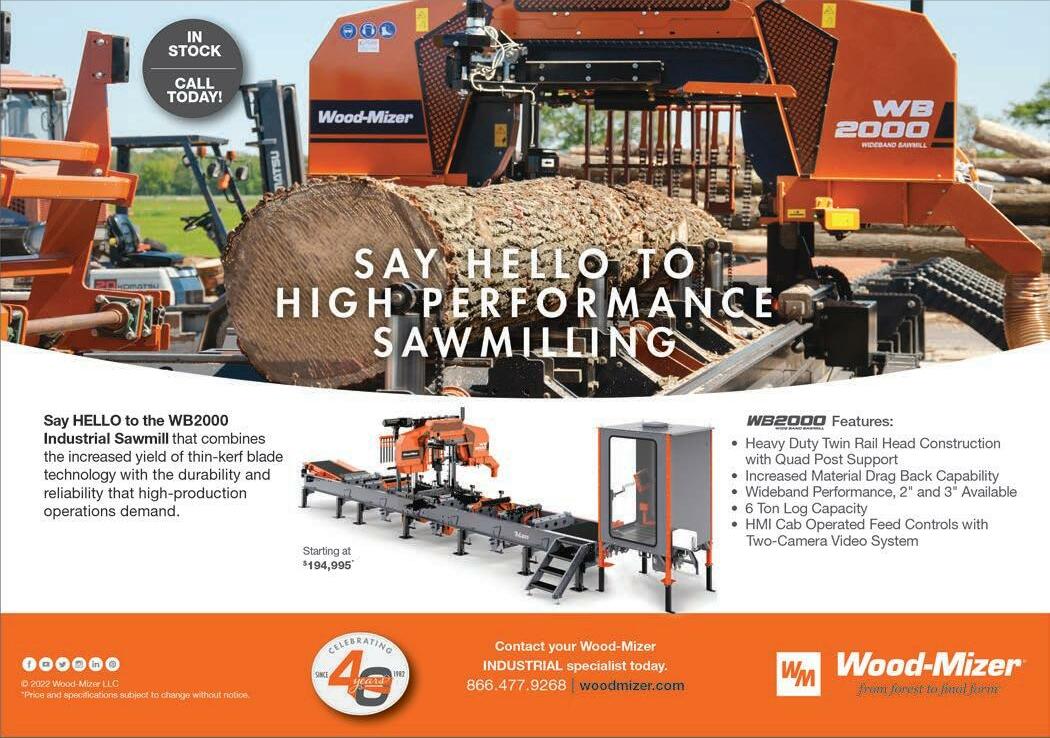
36 ■ NOVEMBER 2022 ■ TIMBER PROCESSING ➤ 38
Precision chipper handles chips; residuals are sold to local markets.
CLICK HERE IF YOU HAVE NOT ALREADY OPTED IN!

CLICK HERE IF YOU HAVE NOT ALREADY OPTED IN!
There’s no grader on staff; Price says he hopes to add one at some point.
Besides residuals, everything Price sells goes within 50 miles of here. Flooring lumber goes to Missouri Hardwood Flooring Co. in Birch Tree; railroad ties go to Royal Oak, stave logs to Independent Stave Co. in Lebanon; and all pallet lumber is sold within five miles of Price. Chips and mulch mostly go to Missouri Fibre Corp. in Scott City, put there on a barge bound north to Chicago. Sawdust goes to a liquid smoke plant in Greenville.
NO END IN SIGHT
Company founder and family patriarch Donnie Price, 80, still works in the mill every day. He arrives by 5:30 at the latest each morning, and not just to sit in an office as Vice President; no, he mans the resaw 40 hours a week.
“They try to take it easy on me and slow me down a little bit,” the elder Price shrugs. “But I come over here on the weekends when they don’t see me and make sure everything is working properly. I like working, I love to saw,
and I ain’t quitting. I see people who are not even my age yet and can’t get up out of a chair. I think if I quit I’ll get just like them. I don’t have to do this but I would have it no other way.”
Donnie’s wife, Betty, is also still active in the company office answering phones. Alan’s wife, Amy, takes care of all bookkeeping and plays a huge role in the business. Their two daughters, Gracie, 21, and Dylan, 16, would like to continue the family business and take over at some point after college (Gracie is a student at Missouri State University).
Donnie and his older brothers, Jim and Charlie, started the business in 1969, but Donnie bought them both out within a few years. “We rented the mill from a guy in Salem,” he recalls. “It was an old Corley mill with a wood frame carriage. We ran it probably five or six years. Then I bought a new Corinth mill we ran a long time. Then Alan got in and we went to Cleereman. That’s all we’ve had since then; this is the third Cleereman carriage.”
Once Alan was ready, Donnie was happy to turn decision making over to his son. “I’ve seen too much of not letting the kids get involved and then you pass on and the kids don’t have a clue what they’re doing. You have to let them run it to let them learn; you don’t want to wait till you die to let them try it. I have really enjoyed watching him; I make no decisions whatsoever. He has done a good job.”
Alan still asks his dad’s advice and opinion, but says he rarely gets it. “Mostly he says it’s up to me.” Still, Donnie admits there have been times when he was skeptical of his son’s choices, but kept it to himself. He was especially unsure about the new double cut headrig. “We had the circle saw headrig and I really thought it was working really good,” Donnie says. “I didn’t know about changing to the double cut. But by the third day, I said I am just a dumb old man. The double cut definitely was a great idea. Our yield is going to be so much better.”
Looking at the current state of the industry, Donnie says he has seen it like this twice before, in the mid ’70s and again in the ’80s. “You couldn’t give pallet lumber away, ties were tight and grade lumber back then, they basically sold FAS and that was it. It will come back, but first it is going to get tougher than what it is right now. Ties will slip sooner or later and when they do you’re gonna see some mills go. But we’ll make some changes here in this country and when we do it will come back. We run with a tight belt in good times or bad times. We upgraded during the good times to be ready for the bad.”
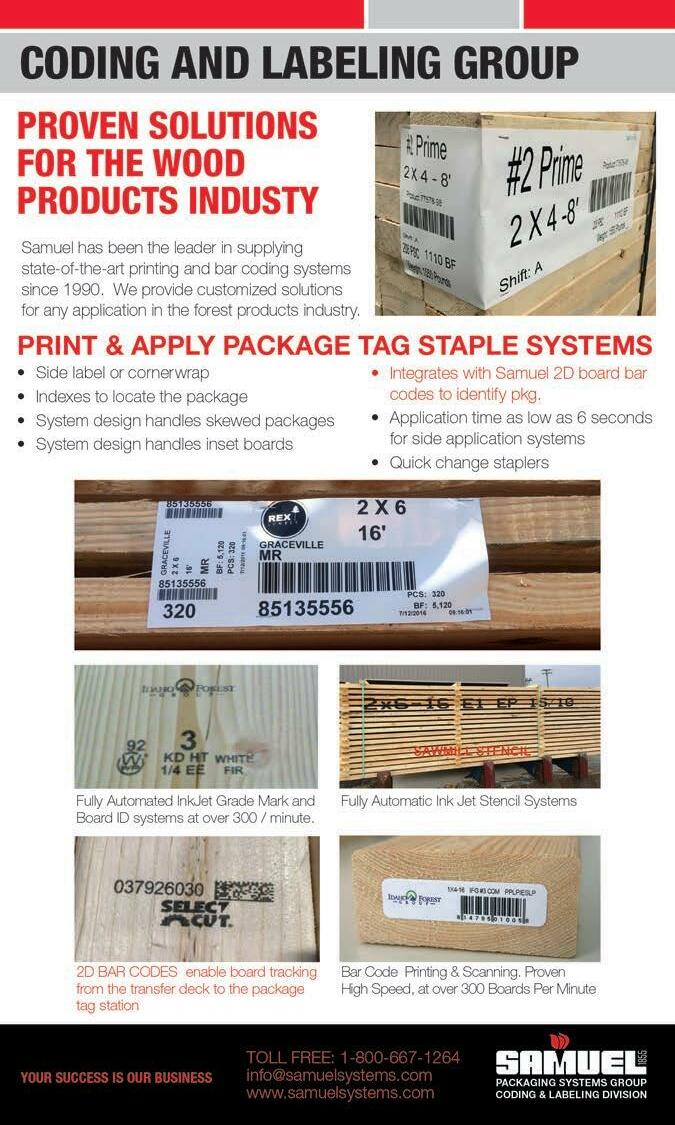
TP 38 ■ NOVEMBER 2022 ■ TIMBER PROCESSING 36 ➤ CLICK HERE IF YOU HAVE NOT ALREADY OPTED IN!
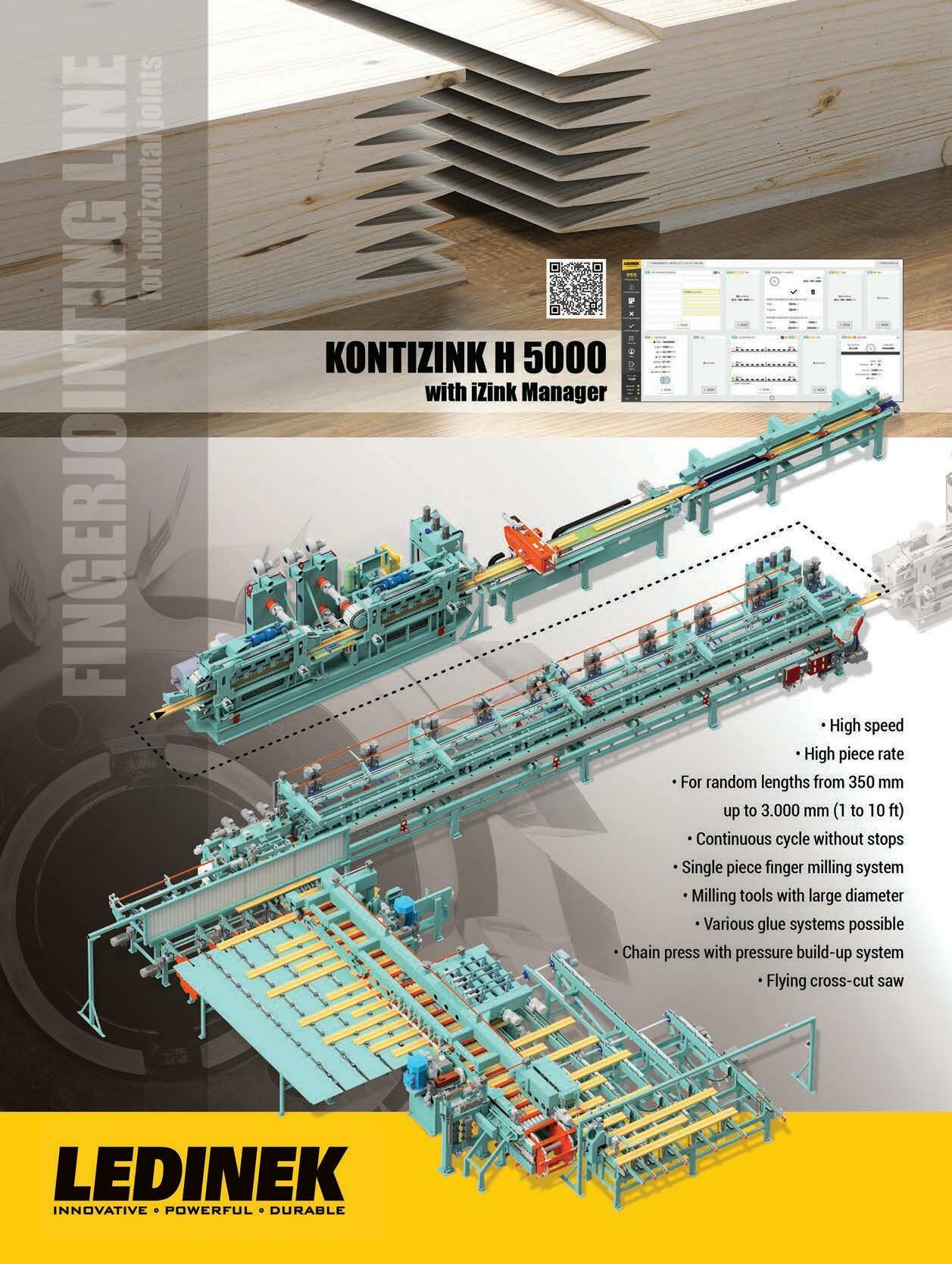
CLICK HERE IF YOU HAVE NOT ALREADY OPTED IN!
EDITOR’S NOTE: The following companies submitted these editorial profiles and images to complement their advertisements placed elsewhere in this issue. Please refer to those advertisements for web site and contact information. All statements and claims are attributable to the companies.
BID GROUP
BID Group has a proven reputation for the innovative design and manufacture of Deltech batch and continuous kilns, heating supplies, and controls. Our turnkey, heavy-duty systems are uniquely designed to ensure maximum quality and controlled moisture content—regardless of the wood species and type of production, including value-added products.
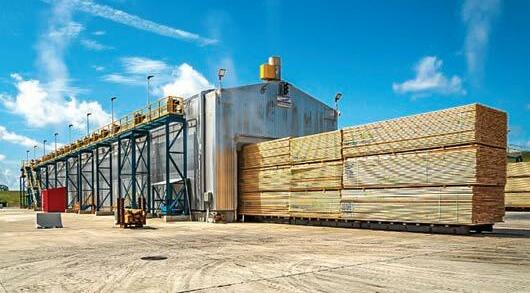
Exceptionally robust and offering unmatched reliability to ensure long-term performance, our kilns are designed by a strong engineering team and backed by a team of experienced regional support specialists and parts department to keep your kilns working optimally. With BID, when you need services for your kilns, we’ve got you covered.
BRUNNER HILDEBRAND
The HCK Unidirectional Continuous Kiln is Brunner Hildebrand’s answer to the increasing demand for continuous kiln drying technology. The HCK operates in unidirectional mode with lumber package motion through the kiln in longitudinal orientation. This comes as a big advantage in terms of mill workflow with a clear distinction between wet side and dry side. Forklift transport is reduced to a minimum.
The Unidirectional HCK kiln combines the flexibility advantages of a batch kiln with the capacity advantages of a progressive kiln and counterflow kiln. The HCK is divided in length into several zones. The number and size of zones are designed according to the customers’ desired KD output. The zones are successively for heating, warming through, drying, equalizing, conditioning and cooling.
Brunner Hildebrand’s new B-Vector Control System controls all zones independently with respect to temperature and climate. Drying schedules can also be conducted based on time and/or actual wood moisture content measured with the new HWPT Weight Measurement System.
Kiln carts are moved through the HCK by powerful hydraulic pusher units sized for pushing the entire lumber load forward throughout the kiln.
What makes Brunner Hildebrand’s continuous kiln unique?
With Brunner Hildebrands game-changing GreenKilns technology, the individual drying zones of the HCK cooperate in a thermal compound system. Excess heat from one drying zone will be extracted and guided to another drying zone which is in actual demand of additional heat.
In addition, the system will integrate the heat recovery with intelligent software and make optimal use of it. This way, up to 30% of thermal consumption may be saved and reused for lumber drying in an eco-friendly way.
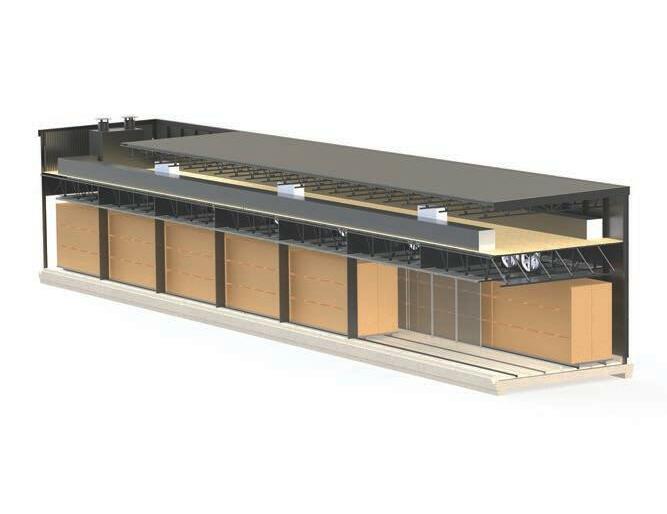
As an integral part of the kiln carts, Brunner Hildebrand installs their revolutionary HWPT (Hildebrand Weight Precision Technology) system. With these wireless weight measuring bars, customers are capable of measuring the weight of the entire lumber stack resting on top of the kiln cart.
Brunner Hildebrand combines the intermediate heating with the proven Hildebrand Turbo Technology (HTT). The system consists of baffles that are periodically moved up and down. This isolates part of the stack of packages from the airflow, while increasing the air velocity.
A leading sawmill group in Eastern Europe has recently chosen Brunner Hildebrand as their supplier of four HCK Unidirectional Continuous Kilns featuring GreenKilns, HWPT, HTT and individual zone control as described above.
DRYKILNS 40 ■ NOVEMBER 2022 ■ TIMBER PROCESSING
Brunner Hildebrand HCK operates in unidirectional mode.
CLICK HERE IF YOU HAVE NOT ALREADY OPTED IN!
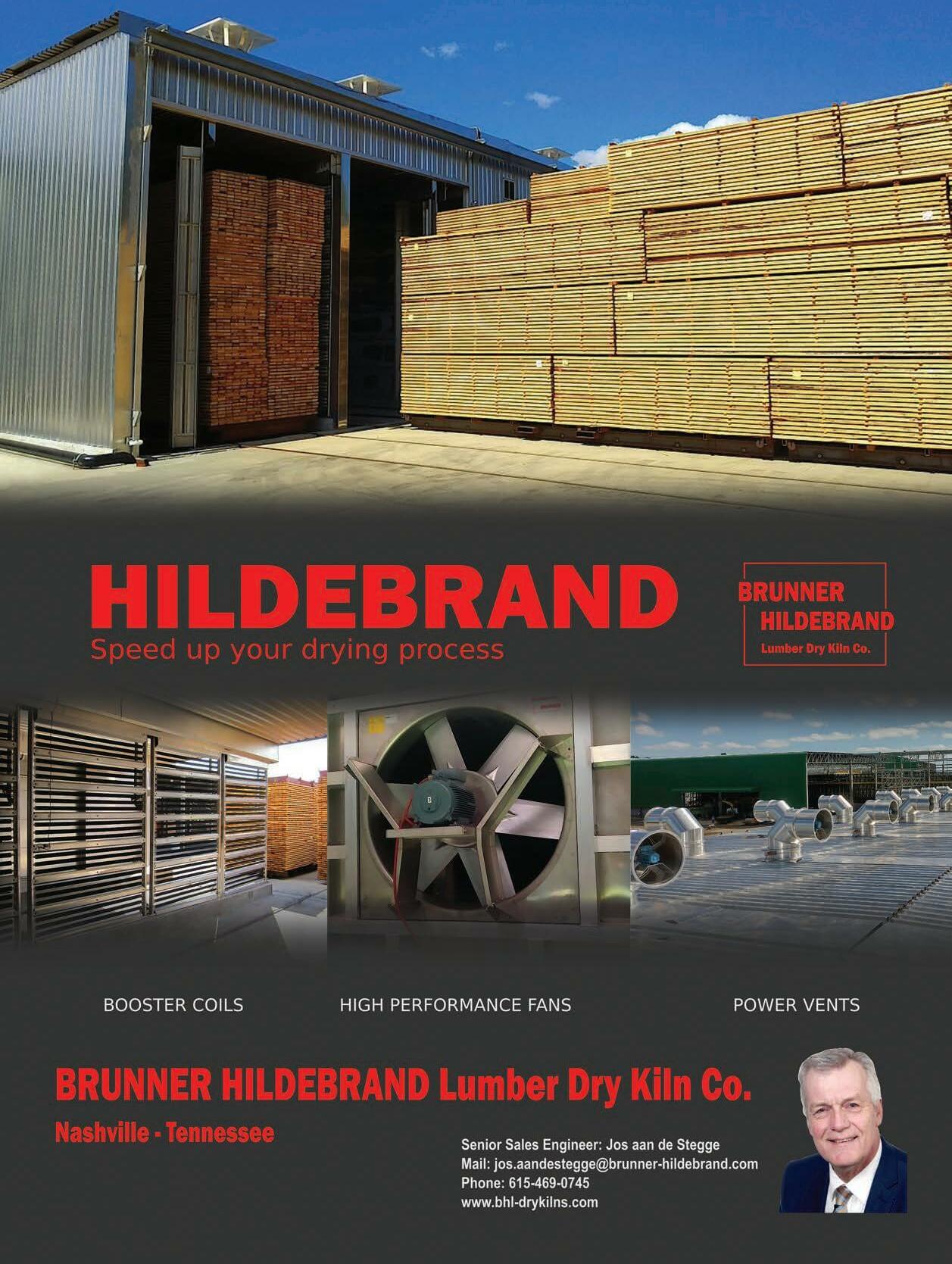
CLICK HERE IF YOU HAVE NOT ALREADY OPTED IN!
KILNS
MÜHLBÖCK
With its innovative 1306 PRO dry kiln, Mühlböck Holztrocknungsanlagen GmbH proves that drying wood and preserving resources can go together. Mühlböck showcases how efficient technology can help saving electrical and thermal energy in the framework of high-energy processes.
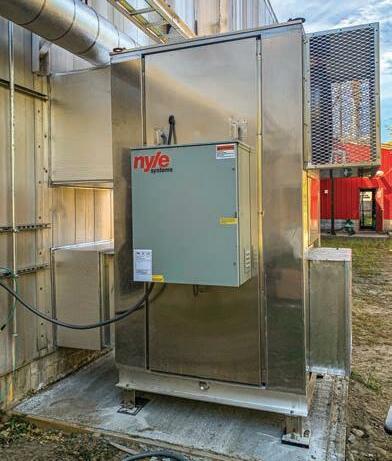
Efficient technologies are more in demand than ever before in the light of rising energy costs and ambitious climate protection goals. “In this context, the timber industry is capable of leading the way,” says Richard Mühlböck, Managing Director of Mühlböck. “Especially now, it is our industry’s responsibility to put an even greater focus on that.”
The innovative Upper Austrian company dedicated itself to increasing the efficiency of its wood drying technologies many years ago and developed a system that saves thermal and electrical kilowatt hours. “We have realized early on that we need to reduce the resource consumption of our wood drying systems,” Mühlböck says. With its 1306 PRO drying system, Mühlböck has developed a system that is superior in terms of energy consumption and drying quality alike. It allows for thermal energy savings of up to 25% and yields significant electrical energy savings potential.
This is due to the unique layout of its drying kiln. Contrary to existing systems, it doesn’t allow parts of the hot air to exit the kiln through the exhaust air duct. The intelligent positioning of heating coils and controlling supply and exhaust air actually guarantees that 100% of the air is being circulated and can be used. In addition to this unique flow technology a highly efficient heat recovery system optimizes the entire process. The result: It requires 25% less thermal energy and reduces the use of sawmill byproducts.

But that is not all: It also yields massive savings potential when it comes to electrical energy. “Our 1306 PRO can be operated with 10% less air circulation, without compromising the drying quality. This allows frugal users to run their systems at 90% speed. According to our experts’ calculations, this scenario can save them up to 30% on electricity costs at an identical drying performance,” Mühlböck stresses.
Many customers already rely on the 1306 PRO dry kiln and are able to confirm the promised savings, performance and drying quality figures. Mühlböck adds, “Drying wood will remain a high-energy, but necessary process. However, using innovative technology we can achieve higher resources and energy savings which helps the entire timber industry.”
NYLE DRY KILNS
With all of the challenges faced this year and the current state of the economy and market, Nyle understands that a new kiln may not be in everyone’s budget. Sometimes the best way to add value is to ensure your existing kilns are running as efficiently as possible, and Nyle believes they are able to aid in this endeavor through their Heat Recovery Vent (HRV).
Heat loss requires the kiln to use more energy to bring the chamber back to temperature, delaying the schedule and ultimately resulting in added drying time. Nyle believes that their Heat Recovery Vent can become a valuable addition to any kiln. The vent utilizes the heat being vented from the kiln to warm the incoming air minimizing the need for “reheating,” reducing the overall fuel consumption and increasing overall production quality. Nyle has seen its customers save up to 80% of lost heat when installing an HRV.
“Having sold dozens of these systems this year for upgrades on all types and brands of existing kilns, we are excited for the cost savings our customers will be seeing in their kiln operations,” says Jeremy Howard, President of Sales & Marketing for Nyle Dry Kilns. Nyle currently has seven Heat Recovery Vents heading to a customer in New Hampshire, where they are expected to pay for themselves in a very short amount of time by saving energy and reducing dry time in the kiln. “We believe in the effectiveness of these systems so much that we are including them in all new conventional kiln installations as well,” Howard adds.
DRY
42 ■ NOVEMBER 2022 ■ TIMBER PROCESSING
Mühlböck PRO dry kiln emphasizes energy savings.
Nyle installation of its Heat Recovery Vent (HRV)
CLICK HERE IF YOU HAVE NOT ALREADY OPTED IN!
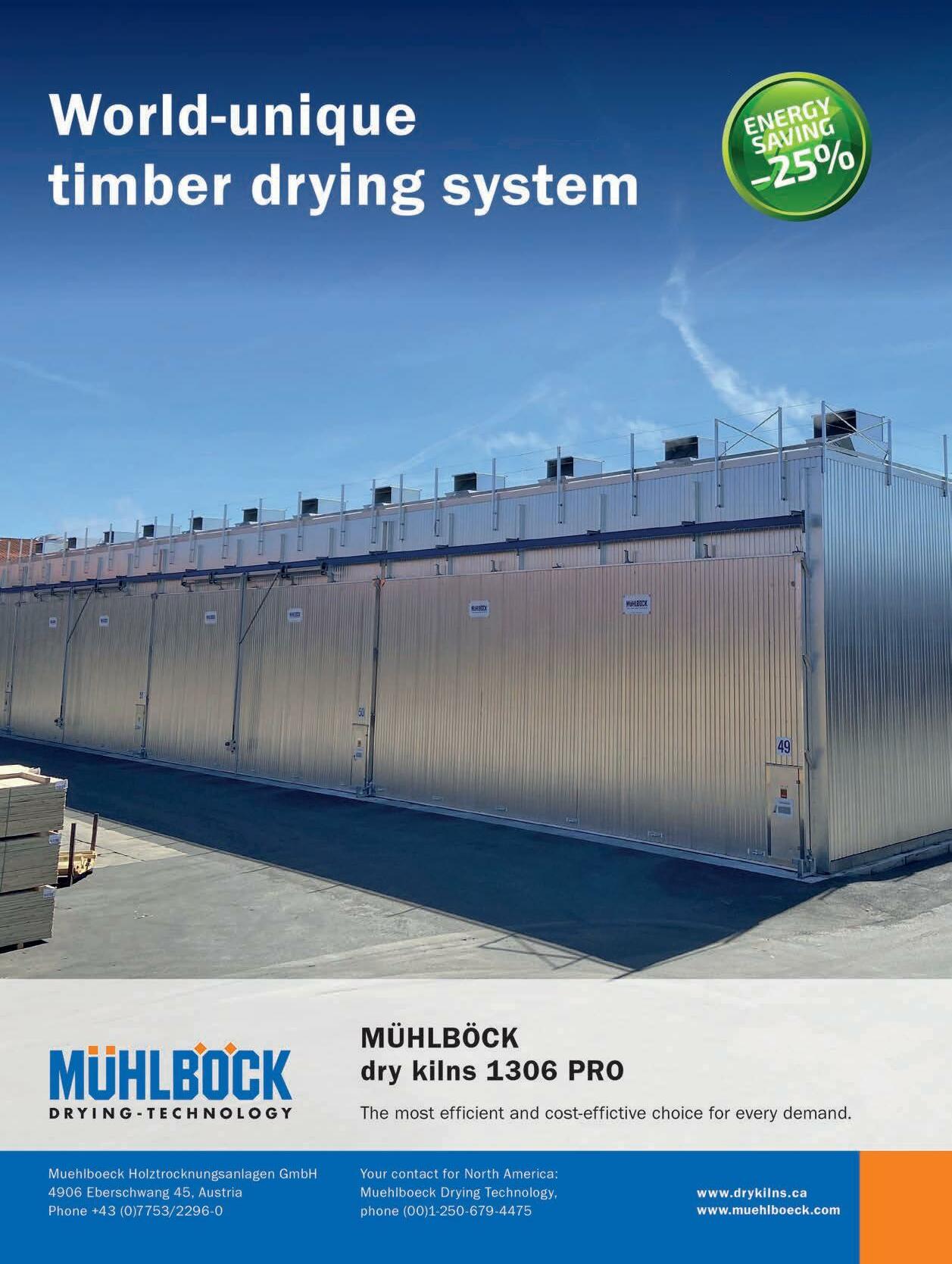
CLICK HERE IF YOU HAVE NOT ALREADY OPTED IN!
SII DRY KILNS
SII Dry Kilns has been providing the hardwood and softwood lumber industry with superior quality, long lasting and high-performance drying equipment since 1970. SII is based out of a 60,000 sq. ft. manufacturing facility in Lexington, NC that allows for complete control over the manufacturing process, including in-house engineering and controls design and development.
SII provides continuous DPK (Dual Path Kiln) dry kilns, package loaded kilns and double track traditional batch style track kiln designs.
l Kiln features include:
—Prefab 3 in. thick R-22 kiln panels of aluminum or stainless-steel
—Fan systems providing up to 1500 FPM
—Insulated aluminum roof vents for on/off or modulating control
—Allen-Bradley ControlLogix PLC controls and motor controls
—Above ground or underground pusher systems for DPK designs
l Heating Systems:
—Direct fired systems for green or dry biomass fuels or natural gas
—Steam systems utilizing steam coils available in steel or stainless steel
—Emergency bypass systems provided on all biomass systems

SII offers complete turnkey project management for new and rehab projects. SII performs complete kiln repair projects such as panel reskins and damage recovery services and offers a full line of parts and kiln materials.
USNR
USNR’s Kiln Boss control system allows you to easily control all the important wood drying variables. It tracks custom drying schedules, alerts you to trouble or system changes, and reports batch and historical statistics for your review.
This system delivers the capabilities and functions of a much larger and more complex control system at a fraction of the cost. Typical mill payback is less than a year.
With the click of a mouse, you can change the parameters for each kiln controlled by Kiln Boss. The menu-driven system requires no special computer skills, and provides a simple graphic view of your kiln operation so you can see what’s “going on” at a glance.

Kiln Boss reduces energy usage by precisely controlling the drying process and schedule time. It continuously monitors the steam distribution system to prevent excessive boiler demand on kiln startups. And when running in “full automatic” Kiln Boss optimizes fan control.
The system allows you to use time or moisture-based scheduling, and set customizable alarm conditions for your specific requirements. You can also incorporate sample weight or moisture probe input into the drying schedule for even more control. Kiln Boss works with any brand kiln and accepts any drying schedule.
Kiln Boss runs on Windows and is compatible with MS Excel. Manual kiln controls can still be used if the computer system ever goes off-line, and there is a battery back-up in case of power failure. Remote access via modem facilitates trouble-shooting. Multiple built-in security levels can be used to give different personnel access to only the information they need.
Kiln Boss is a fully expandable and flexible system that grows with your changing needs. It’s also compatible with Load Boss, giving you the ability to use real-time moisture content to instantly adjust your drying schedule.
DRYKILNS 44 ■ NOVEMBER 2022 ■ TIMBER PROCESSING
SII Dry Kilns continuous (DPK) dry kiln
USNR expert lumber drying control with Kiln Boss
CLICK HERE IF YOU HAVE NOT ALREADY OPTED IN!
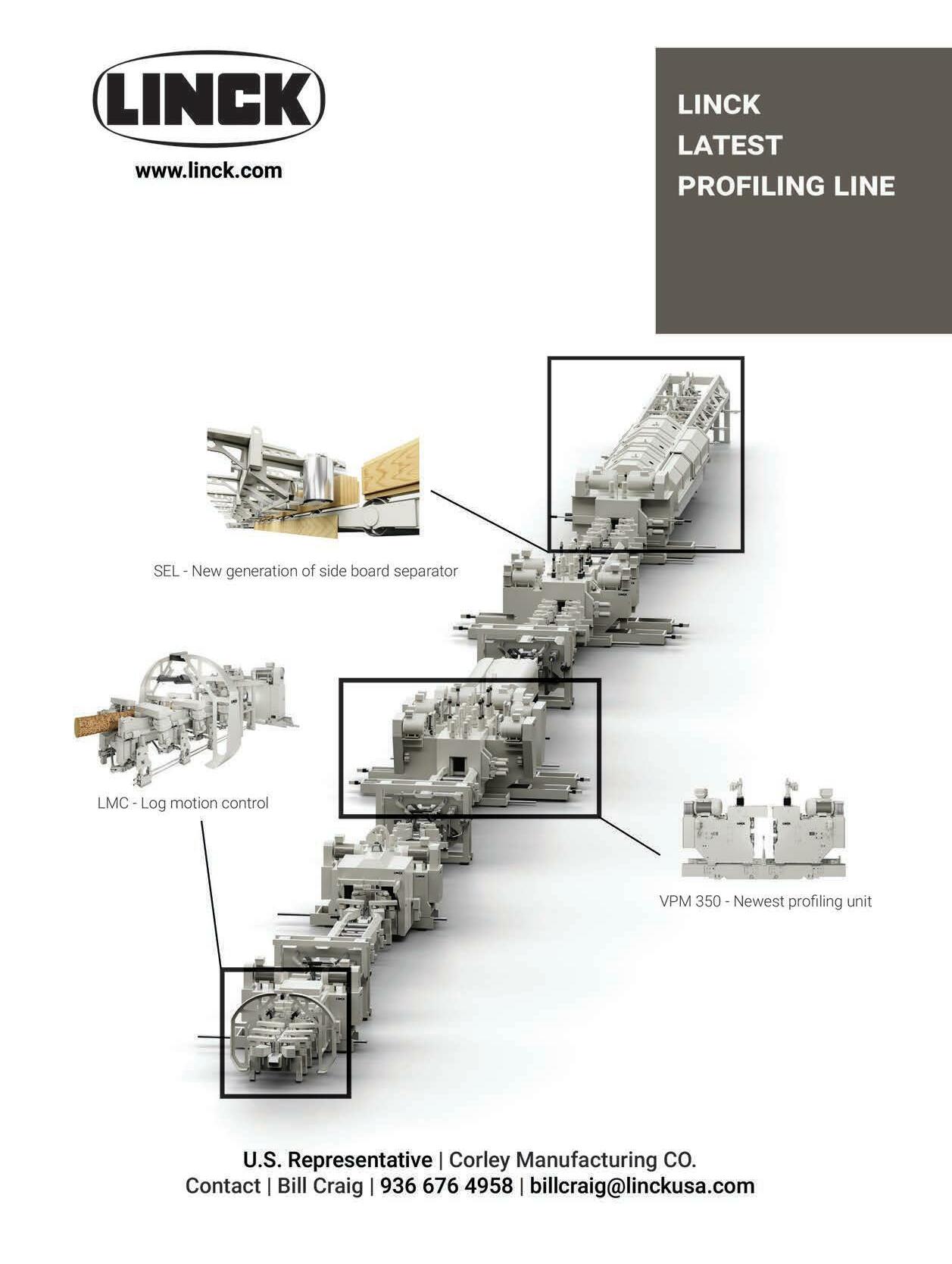
CLICK HERE IF YOU HAVE NOT ALREADY OPTED IN!
KILNS
VALUTEC
Valutec has delivered more than 2,000 continuous kilns to sawmills around the world. In 2020, the company commissioned North America’s first TC continuous kiln at Pleasant River’s Moose River in Jackman, ME, and today another eight kilns are up and running or being installed in North America.
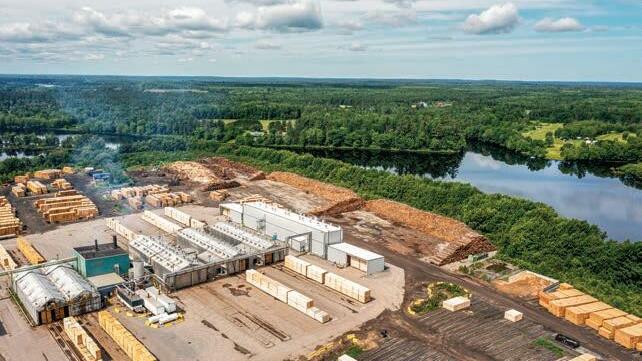
Valutec is the only company offering TC kilns. It is a kiln type that comes withdistinguishing features such as low energy consumption, high flexibility and superior capacity. It gives the operator the possibility to create the ultimate drying process with unlimited freedom to mix dimensions, minimal moisture content variation and reduced risk of checking. Annual capacity can reach 150MMBF with target moisture contents down to around 12-18%.
The principle is based on the timber package being fed length-wise through zones in which the air circulates laterally across the drying channel. This enables the separate regulation of the climate in different zones according to a schedule that comes very close to the ideal schedule of a batch kiln. The TC kilns are equipped with Valutec’s control system Valmatics 4.0, which has an integrated simulator that enables simultaneous optimization of capacity, quality, and energy consumption.
“Today, we’re selling TC continuous kilns in markets all over the world. It’s the result of thousands of development hours during which we studied, evaluated, tested and reinvented every part of a type of lumber kiln which, in its original design, was first used back in 1927,” says Ingo Wallocha, MD, Valutec Wood Dryers Inc.
One year ago the first TC kiln in Canada was started up at J.D. Irving, Grand Lake Timber, Chipman, NB, Can. It’s a 12-zone kiln with an annual capacity of 125MMBF.
“In summertime the TC kiln saves about 35% energy compared to our other kilns and in wintertime it saves up to 50% energy while delivering a higher quality,” says Mario Desjardins, General Manager, J.D. Irving
Around the same time the first TC kiln on the West Coast at Hampton Lumber, Warrenton, Ore., was commissioned.
WELLONS
“Renewable energy,” “green power,” “carbon neutral,” and “reduced carbon footprint” can all be used to describe the energy and lumber drying systems provided by Wellons.
An industry leader, Wellons has the unique ability to provide complete, biomass-fired, lumber drying systems with products of its own design and manufacture.
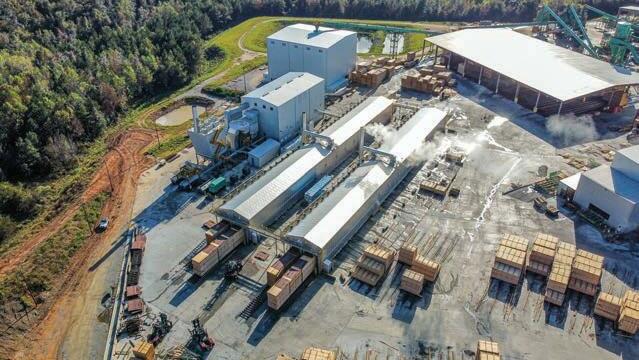
Wellons lumber drying systems include counterflow and parallel flow continuous lumber dry kilns, and batch kilns, using steam, thermal oil and natural gas as the heating source.
Wellons broad range of biomass-fired steam and thermal oil heating systems are used for both lumber drying and electrical power applications. Complete systems, integrating Wellons fuel storage and handling systems, biomass energy systems, electrostatic precipitator product line, SNCR systems, and Wellons lumber drying systems, provide a complete, single source option for Wellons customers.
Wellons continues to add new designs and features to these systems. Recent additions include Wellons TRUMARK-EVO wireless moisture monitoring system for use in both continuous and batch lumber dry kilns to optimize the lumber drying process; the Wellons MODULPAQ biomass-fired steam boiler design that provides design flexibility while reducing equipment and installation costs; and Wellons biomass energy system Ash Conditioning Station.
DRY
46 ■ NOVEMBER 2022 ■ TIMBER PROCESSING
Valutec TC kiln at JD Irving, Grand Lake Timber, Chipman, NB
Wellons turnkey drying and energy system
CLICK HERE IF YOU HAVE NOT ALREADY OPTED IN!
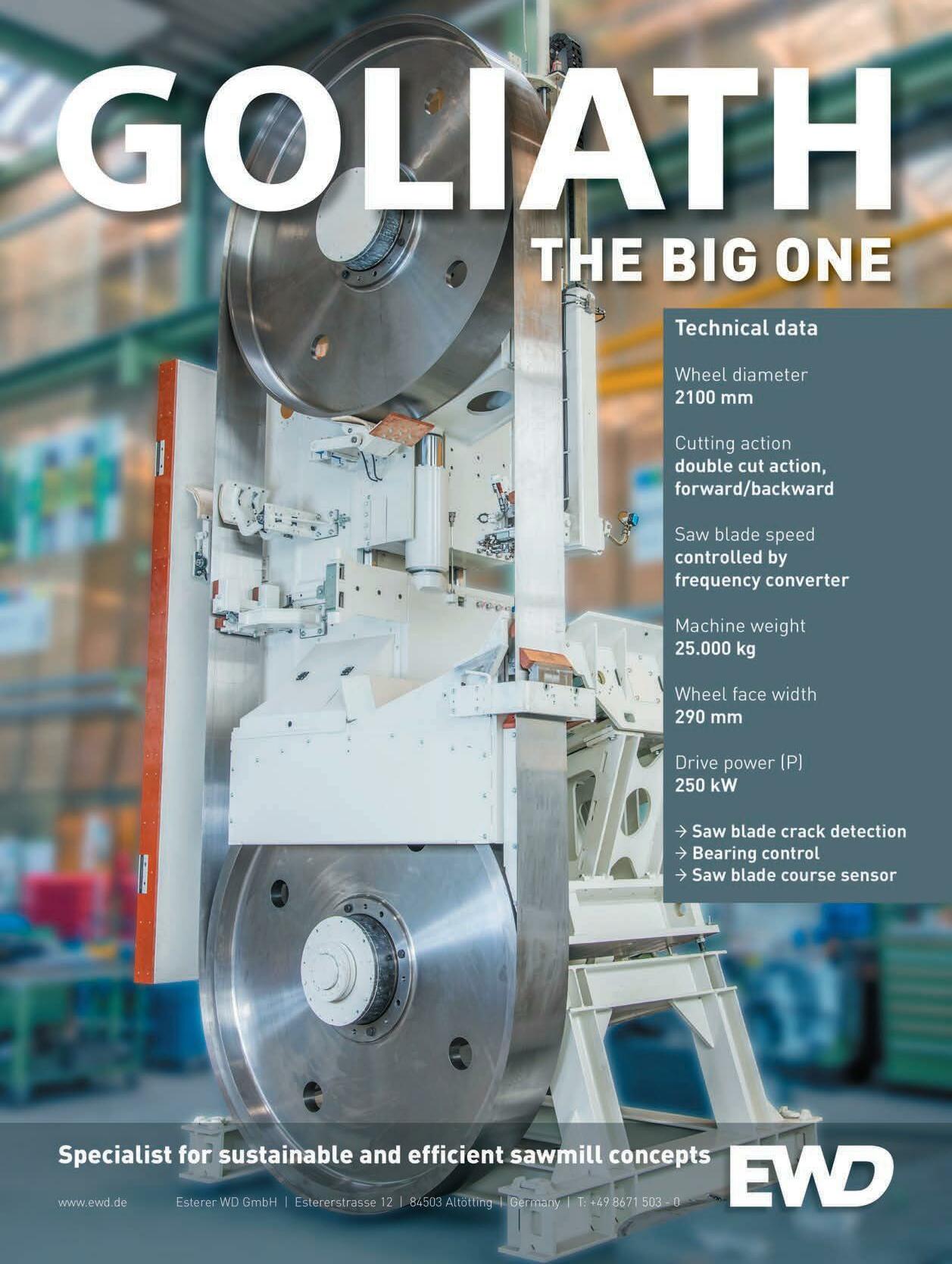
CLICK HERE IF YOU HAVE NOT ALREADY OPTED IN!
He asked several questions:
What’s the seasonal weather factor? What about the spare parts supply chain? Can surge
account manager, USNR, spoke on “Optimizing Sawmills for Mass Timber Production” and noted that even if the projections for growth is half of what is forecasted, CLT and mass timber will consume a volume of lumber that is too big to be ignored, and that sawmills will need to optimize their overall manufacturing process to take advantage.
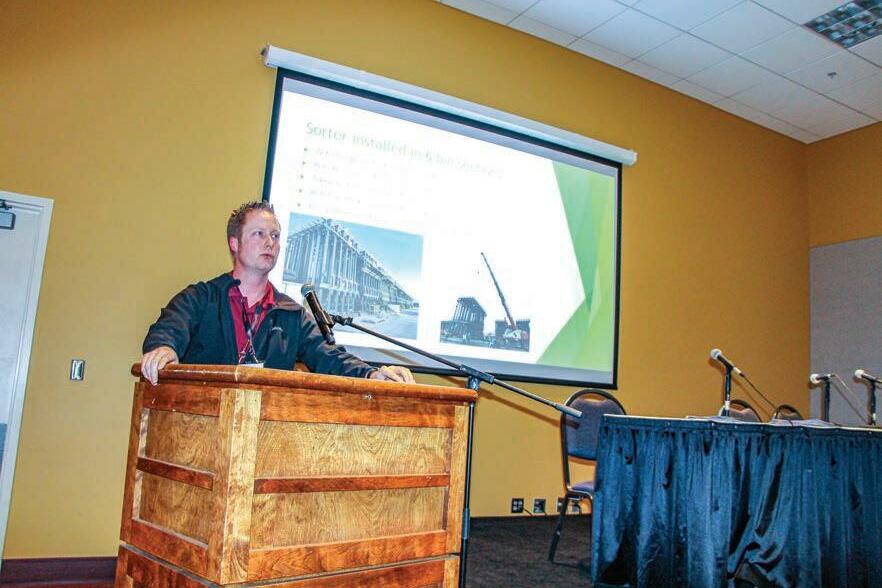
Zojonc said planning cannot be over-done or over-emtance test in the contract, and measure success, he said. A post project meeting should address what went right and what could have been better.
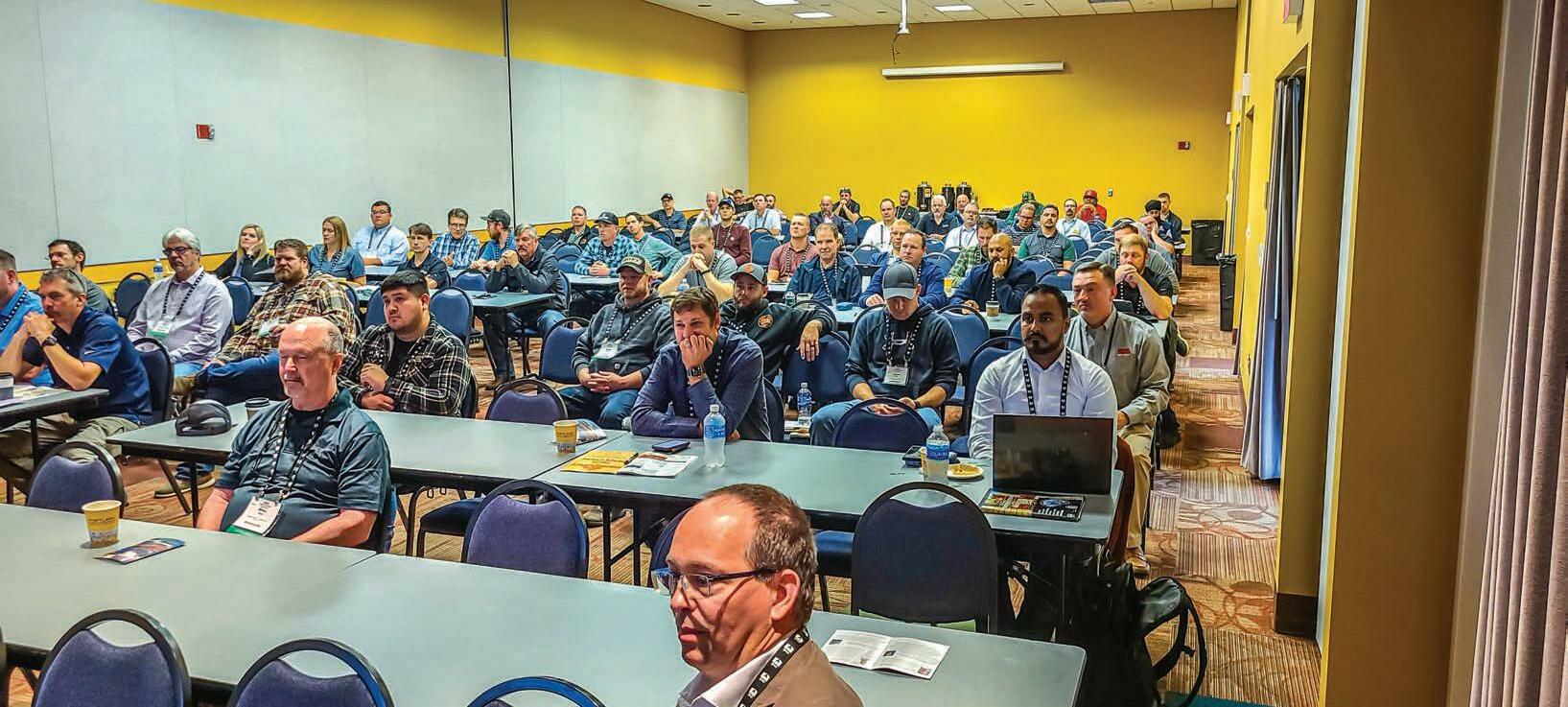
Other speakers included Phil Johnson of Johnson Consulting, who addressed the use of used equipment in sawmill construction and upgrades; Sam Pope, Western Sales Manager, USNR, speaking on the well-planned project and techniques to deliver ROI; Kevin Collins, director at Strategic Energy Group, on maximizing productivity, operating efficiency and energy applications; Simon Potvin, president of the Wood Processing Div., BID Group, on his company’s emphasis on Artificial Intelligence and robotics, and the importance of overcoming the “knowledge gap” brought on by new technologies and systems versus inexperienced labor and BID’s establishment of a Global Learning Center; Norvin Laudon, director of MiCROTEC, on absolute SMART streamlining of the sawmill process based on incoming log
And there’s plenty of potential, Czinger said, citing CLT manufacturing wood fiber residual at 20-30% compared to 30-40% dimension lumber manufacturing, and based on optimization study results of multiple log sizes, CLT products show a 6% average recovery increase.
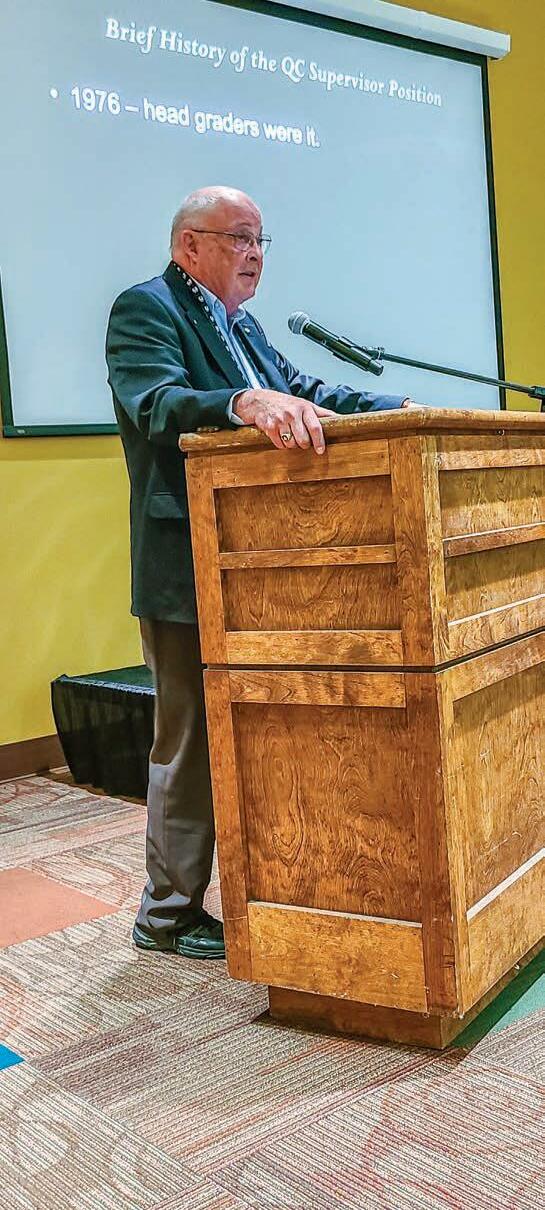
Other speakers included Evan Schmidt, outreach and education manager at TallWood Design Institute, who moderated a discussion involving several experts on tracking and transparency in the forest supply chain; Iain Macdonald, director of TallWood, on the Oregon Mass Timber Coalition and connecting Oregon’s forest to mass timber manufacturing and affordable modular housing; Janelle Leafblad, senior director, WoodWorks, on the growing market demand for wood products; Russ Vaagen, CEO of Vaagen Timbers, on his company’s early role in mass timber development and mass timber now moving into mainstream construction with a solid environmental message supporting it; and Derek Ratchford, CEO of SmartLam, on mass timber growth in the U.S. South, including the company’s recent announcement that it will build a glulam plant adjacent its CLT plant in Dothan, Ala., and also expand production of CLT in Dothan and at its CLT facility in Columbia Falls, Mont.
The next TP&EE is scheduled for September 25-27, 2024.
TP
Sawmill Productivity & Efficiency Conference packed them in.
Vaughn Emmerson of Sierra Pacific Industries stressed the importance of detailed planning.
Terry Brown of Lumber Quality Institute addressed the role of today's quality control supervisor.
48 ■ NOVEMBER 2022 ■ TIMBER PROCESSING CLICK HERE IF YOU HAVE NOT ALREADY OPTED IN!

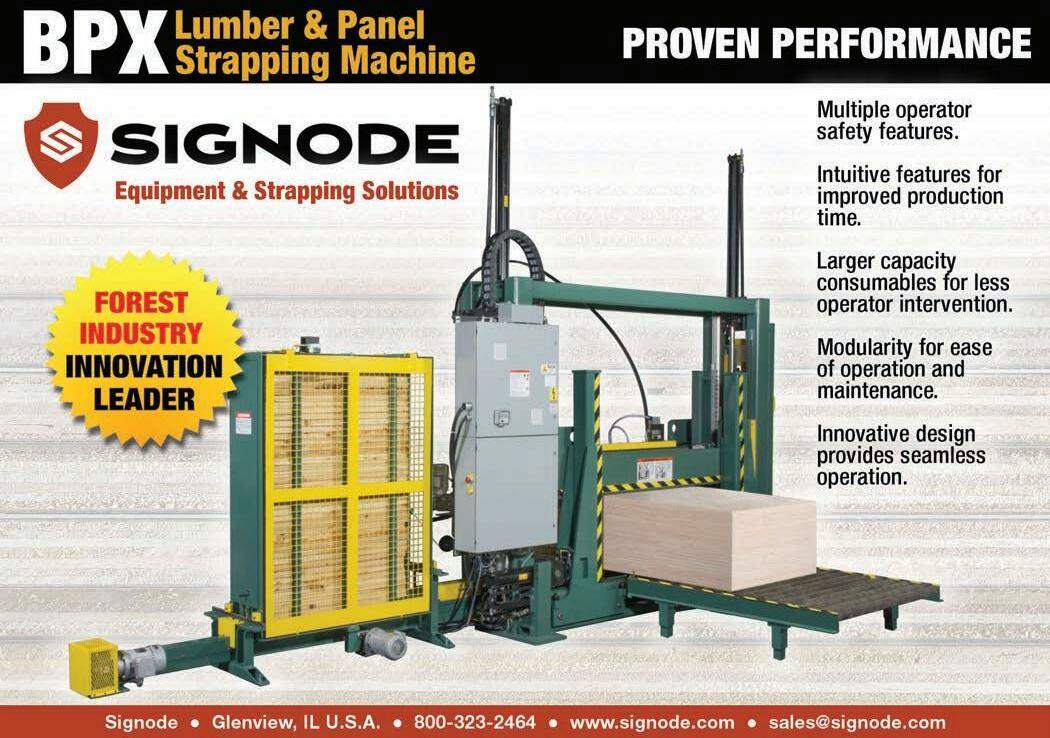
CLICK HERE IF YOU HAVE NOT ALREADY OPTED IN!
VT INDUSTRIES UPGRADES MILLS
Architectural wood door manufacturer brings in Biele Group.

Headquartered in Holstein, Iowa, VT Industries, Inc., is North America’s leading manufacturer of architectural wood doors, postformed laminate countertops, and architectural stone surfaces. Since 1956, VT Industries has been committed to providing the highest quality architectural and home building products and services in the industry. The company is formed by more than 630 people and it operates from 11 manufacturing facilities strategically located throughout the U.S. and Canada.
In 2016, VT celebrated its 60th anniversary, and this major event came on the heels of another milestone achievement: the expansion of their Holstein architectural wood door manufacturing facility.
In 2018, VT Industries acquired Eggers Industries, a national manufacturer of architectural plywood doors for the top tier of the custom door market based in Wisconsin since 1884. The facility located in Neenah produces door slabs, pre-finished, pre-machined, glazed and any combination required.
The story between VT and Biele began eight years ago and keeps going after several projects for different facilities through this time.
In 2014, VT Industries was immersed in a business growth strategy that required an investment in a second CAM line (Door Core Assembly Machine line) in Holstein, so that production capacity could be increased and additional capabilities could be integrated. Thus, Biele was selected to be the vendor to provide the line that would improve current capacity of the original line and increase the production efficiency.
After this first project, Biele continued working on the capacity increase of the factory, and already in the expansion of the building carried out in 2016, installed further handling solutions for new CNC lines.
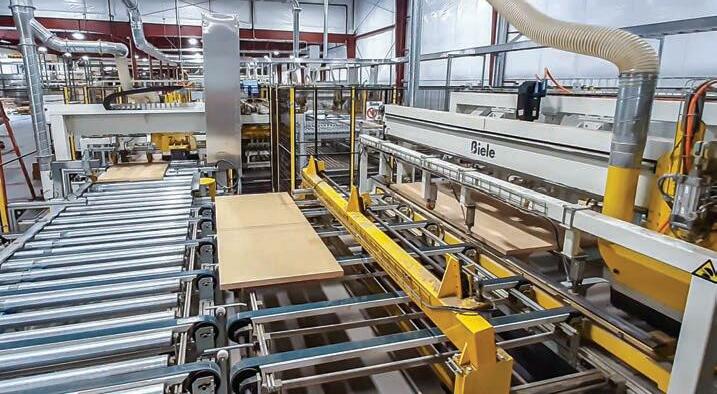
The most recent project between VT and Biele took place in 2021, once VT acquired Eggers Industries and started a growth plan for the facilities located in Neenah. Thus, given the age and manual nature of the previous core processing equipment, VT decided to invest in a new automatic CAM line to replace the existing one. Considering the quality of the product to be produced and the high performance needed, Biele was the selected company again due to the positive
previous experience VT had with Biele’s line in Holstein.
The main challenge of the CAM lines was to achieve the maximum optimization of the boards, regardless of the size and material-type of the board that was introduced into the line. In other words, the key aspect of the line was to maximize the use of the raw board introduced in the line by means of a good optimization and processing of the infeed boards into final core dimensions, in a way that the line could provide maximum efficiency and flexibility for single batch size door production.
Regarding the CAM lines, both projects developed in 2014 and 2021 were divided into two different parts, the Core Optimizer, where different panels are cut and glued together until the desired core size is completed, and the Frame Assembly, where rails, stiles and lock blocks are added.
The composer is the part where the infeed panels need to be optimized, in a way that regardless the size of the infeed panel, the final composed core can be delivered in a batch size 1 basis. This may result in final cores composed by multiple different infeed panels, with a minimum waste of raw material.
In the composer, the infeed panel is trimmed and profiled, and glued with EVA hot melt glue in the short side of the panel first, which is glued together with the next one, producing a continuous length panel, that is cut to length according to the size of the core to be produced. The operation is repeated with the long side of the panel, in a way that the final width of the core is produced.
This panel optimizing logic could not be understood without the Production Control system developed by Biele Digital divi-
50 ■ NOVEMBER 2022 ■ TIMBER PROCESSING
...and at Neenah (Egger Industries).
Biele has assisted VT Industries’ plants at Holstein...
CLICK HERE IF YOU HAVE NOT ALREADY OPTED IN!
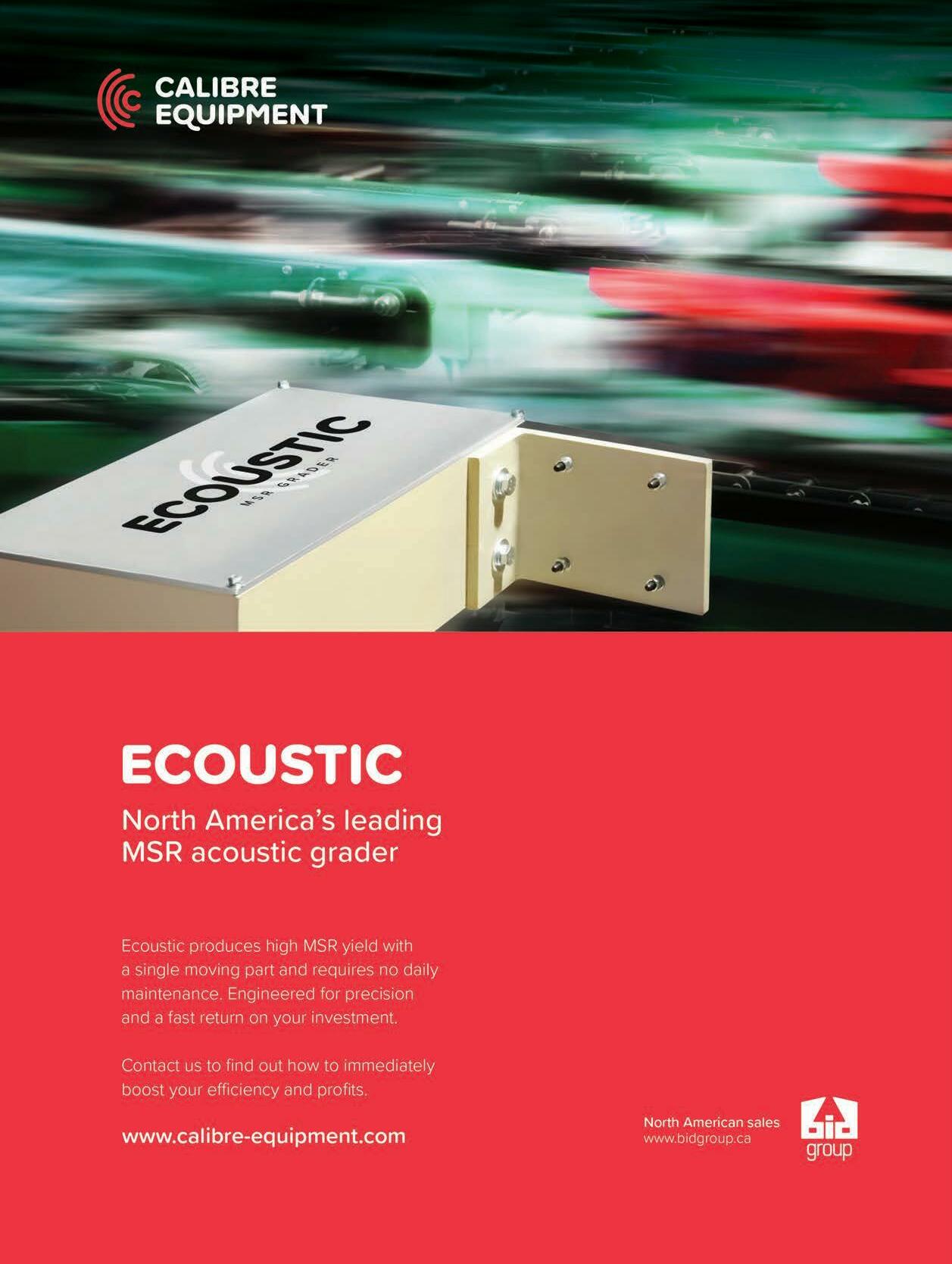
CLICK HERE IF YOU HAVE NOT ALREADY OPTED IN!
sion. This software, called Production Control, brings intelligence to the whole production line, specially focused in the panel optimizer area. This logic is not just a static calculation of the infeed panel sizes to glue and cut them until the desired size is achieved. It goes beyond that, since the optimizer is able to use a cutting logic that measures the deviations of the first cut and compensates it with the second cut in the next board to stay within the established tolerance range, so that the reject material is reduced significantly.
The second part of the line corresponds
to the frame assembly section, where the stiles and rails are glued and placed around the previously composed core.
Firstly, the front and back rails are glued and placed around the core, and after they are cut to size, same operation is done with the two stiles. Finally, the excess of length of the stiles is cut resulting in the final dimension of the core.
Biele also equipped the lines to have the capacity to introduce lock blocks (0, 1 or 2) into the core, as it was included in the CAM line in Eggers. Furthermore, Eggers line also provides the possibility to make
an additional slot on the sides so that cables can be inserted for electronic opening doors. To finish, the door is sanded from both top and bottom faces.
By means of these two lines, VT Industries managed to increase consistently the production volumes as planned. In Holstein, the CAM line was targeted at higher capacity rates and additional functionality.
According to Keith Horan, Engineering Manager at VT Industries, thanks to the new CAM line, “VT was able to achieve capacity targets, streamlining product, and process redundancy. The integration of additional CNC equipment into line helped us to keep product orders together eliminating manual processing and sortation. Biele did a great job with the automation of the line, since there was a complex job to be done by integrating 3 external vendor equipment, one 3rd party software, and VT’s ERP data.”
According to David Streu, Automation and Engineering Manager in Eggers Division, “Due to the additional capacity of the new line we were able to reduce from three shifts down to two shifts.” This, together with the reduction of operator needs, resulted into considerable cost savings for VT. Furthermore, based on Biele’s expertise and collaboration with Holstein and Neenah teams, a change on how the core and parts were justified and trimmed in the assembly section was made. Therefore, the final core squareness and part alignment was improved.
In Neenah, Biele was required to include additional capabilities, such as a selfdeveloped customized optimizer software, and a lock block routing and insertion machine. This machine allows the cores to be cut and lock blocks to be installed with only five seconds of additional cycle time to the line. Concerning the optimizer, Streu adds, “It allowed us to reduce core SKU’s from over 50 unique core parts to under 10. This allowed us to reduce overall inventory of core, freeing up valuable space in our warehouse. The addition of the core optimizer allowed Neenah to optimize its own fire core, saving the business several hundred thousand dollars per year.”

A fact that must be pointed out is the collaborative working philosophy present in this relationship. From the beginning there was a perfect understanding between the engineering teams of both companies combining Biele’s knowledge in automation and panel optimization, and VT’s expertise in door manufacturing. This close collaboration resulted in fully customized solutions that responded to the client’s needs and met the highest standards.
Article and photos provided by Biele Group.
TP
52 ■ NOVEMBER 2022 ■ TIMBER PROCESSING CLICK HERE IF YOU HAVE NOT ALREADY OPTED IN!


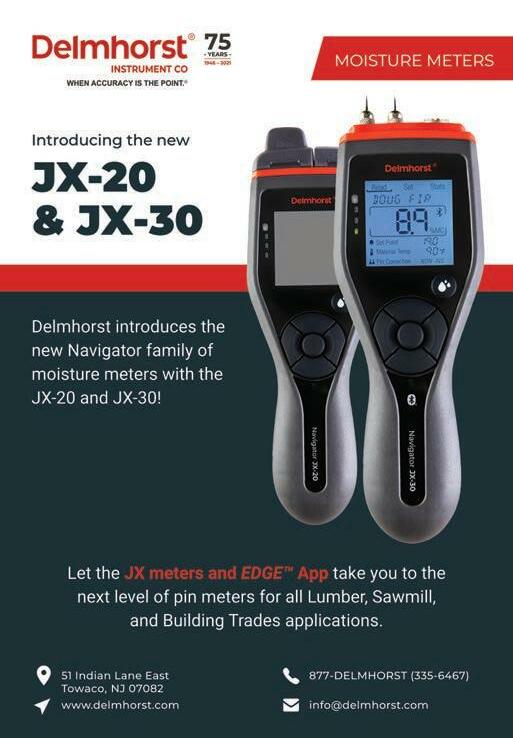

CLICK HERE IF YOU HAVE NOT ALREADY OPTED IN!
MACHINERYROW
Packaging Specialist Increases The Cut
In the “Double Action principle,” the cutting sequence is made from bottom to top and the next cut is immediately carried out from top to bottom. This process is repeated until all cuts are set.
“Prinz is outstanding and innovative,” emphasizes Managing Director EvaMaria Mailhammer-Högl. Her son Hubert also praises the sales method of the chain saw specialist as very practice-oriented. He is especially impressed by the engagement of the sales technicians.
The first visit to the company was decisive for the success of the project because after that a tailor-made concept was created.
The package cross-cut saw PC120 has a footprint of 26 m on 6 m.

Fulghum Announces Commission Of Crane
Since the installation of the Prinz PC120 package crosscut saw in September 2021, Mailhammer-Högl of Bruckberg, Germany has increased the cut of pallet boards significantly. This is possible thanks to innovative Double Action cutting guide constructed by Prinz.
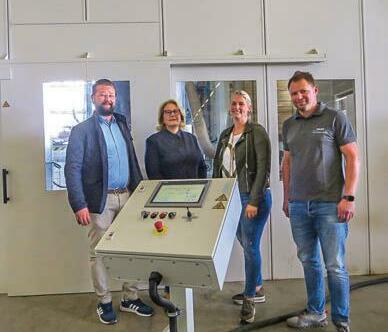
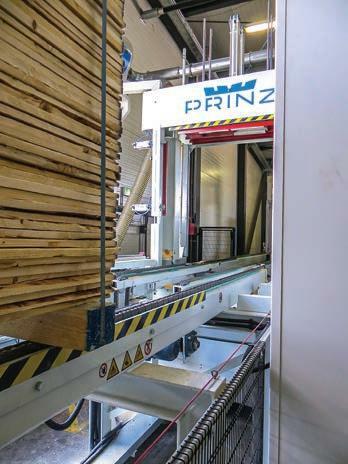
The reason for the acquisition was the lack of performance of the previously used saw. Hubert Högl, who manages purchase and international sales, says the package cross-cut saw can be a bottleneck: workplaces for manual processes can be inclined easily but the limiting factor is the supply. The saw from Prinz is therefore the most important set screw for the further growth of the packaging producer. Moreover, the expansion of the product range is now possible. The operation for the employees is more comfortable.
In the first step the package is put on the infeed conveyor. Next, the package moves farther to the fully automatic strapping machine with square timber insertion. Strap-
ucts. The crane will be feeding Mission’s new sawmill located in Corinth, Miss.
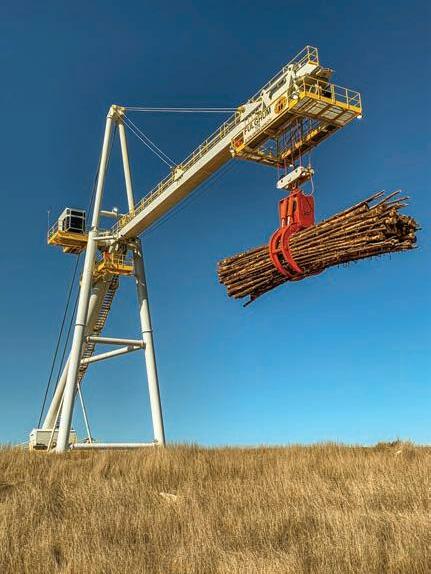
The mill will be capable of producing 250MMBF annually. The log crane was commissioned and certified for operation on August 31.
WMF 2022 Covers Entire Supply Chain
Shanghai International Furniture Machinery & Woodworking Machinery Fair (WMF), together with China International Furniture Fair (CIFF Shanghai) and China International Building Decoration Fair (CBD Shanghai), came to close on
Package saw with “Double Action” increases cutting output.
Fulghum crane commissioned at Mission FP
Good cooperation: Left to right, Hubert Högl, Eva-Maria Mailhammer-Högl, Sina Högl and Sören Hoffmann
54 ■ NOVEMBER 2022 ■ TIMBER PROCESSING CLICK HERE IF YOU HAVE NOT ALREADY OPTED IN!


CLICK HERE IF YOU HAVE NOT ALREADY OPTED IN!
September 8, attracting more than 61,000 buyers. The three fairs showcased 1,200 exhibitors using 280,000 square meters of space. WMF had a 45,000 square meters exhibition area with 300+ exhibitors, which gathered leading enterprises in various segments of home furnishing and woodworking manufacturers in four days.
WMF is committed to integrating industry resources upstream and downstream of the whole woodworking supply chain. Apart from showcasing a wide array of machinery, several forums were held to share industry information. “2022
Innovative Technologies and Materials driving Sustainability and Healthy Life in the Wood Working Industry” invited more than 12 special guests to speak on nine major themes such as new material trends, EB coating, digital printing and finishing technology.
“The 3rd China Wood Industry Park and Port Industry Development Conference” focused on resource integration in wood industry parks and ports, analyzed the trends of carbon neutral and green development policy, and discussed the development of smart manufacturing transformation.
WMF2023 will take place September 5-8, 2023 at the National Exhibition and Convention Center, Shanghai Hongqiao.
Moelven Expands Drying Operations With Valutec

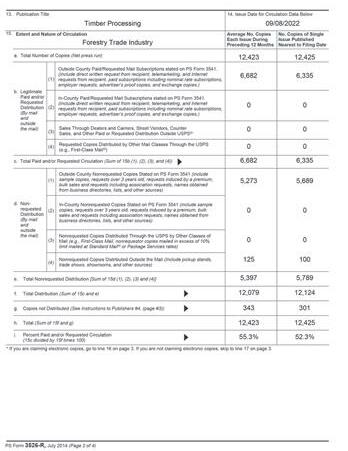

Moelven is investing in five continuous Valutec kilns and the Valmatics 4.0 control system at three of its sawmills. It’s the most extensive single order Moelven Group has ever placed with Valutec.
“It’s an honor to be entrusted with this delivery now that Moelven is shifting its lumber drying operation up a gear,” says

MACHINERYROW 56 ■ NOVEMBER 2022 ■ TIMBER PROCESSING CLICK HERE IF YOU HAVE NOT ALREADY OPTED IN!

CLICK HERE IF YOU HAVE NOT ALREADY OPTED IN!
Jon Lindberg, sales manager at Valutec.
Moelven sees opportunities for major synergies by using Valutec’s technology. “Everyone using the same system in the future will bring many advantages. It will mean we can offer each other great support,” says project leader Ylva Kleiven at Moelven.
The new continuous kilns will allow Moelven to raise both quality and capacity in the drying process, and the latter is something Moelven needs at its Våler and Mjösbruket sawmills in Norway and Notnäs in Sweden.
“We have reached the very limit of our drying capacity. Because lumber drying has become a bottleneck, finding a solution
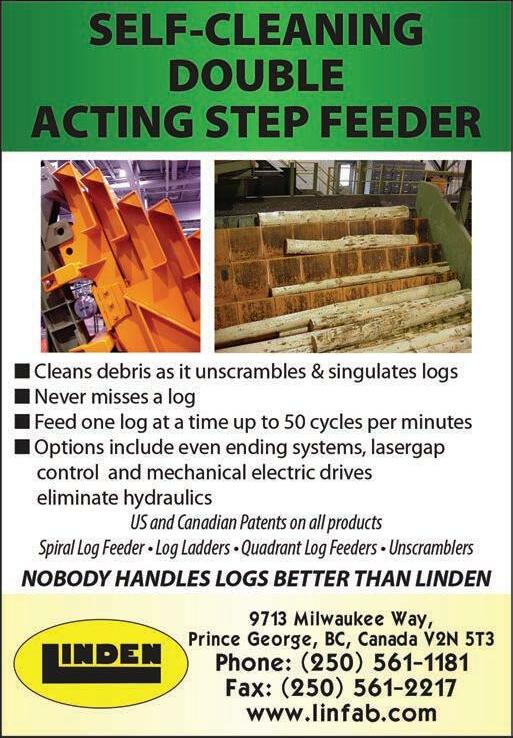
is essential if we are to continue developing. So we decided to make a joint effort, partly to safeguard our ability to continue production at the current level, and also to take the next step towards an increased production,” Kleiven says.

Valutec will deliver two FB model continuous kilns each to the Våler and Notnäs sawmills and one to Mjösbruket. Våler already uses Valutec batch kilns as well as the Valmatics control system. As project engineer, Kleiven also managed the project when the sawmills analyzed their requirements and how they would proceed.
The FB model continuous kilns have two separate zones with individual climate control in each.
Byproducts Bound For Flex Board
Grenzebach reports that Germany’s biggest sawmill operation (name withheld) has found a way to convert its wood chips into another value-added product. The company has placed an order with the process and automation specialist Grenzebach for the design, supply, delivery and integration of a production line for flexible insulation boards.
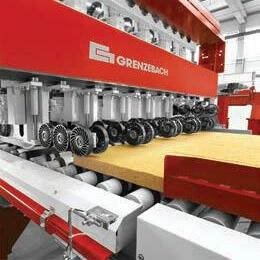
The new production center for wood fiber insulation boards consists of one production line for rigid insulation boards and another line from Grenzebach for flexible insulation boards (flex boards). The combined annual capacity of these two lines is approximately 2.2 million m³/year (approx. 77 million ft³), making the facility the biggest of its kind worldwide.
The flex board line from Grenzebach will start up in Q4 2022. It will be 8 ft. wide and have a capacity of 1.6 million m³/year (56 million ft³). The Grenzebach scope of supply comprises all process-relevant equipment and machinery, from takeover of the dry fibers to the cut master board, as well as complete installation and commissioning. The flex board line is the key element of the number 2 production line, as it encompasses the fiber blending and metering section, fiber spreading and mat forming section, press curing oven, trimming and cross-cutting saws, pneumatic conveying systems, baghouse dust collectors, plus the electrical equipment and control system.
MACHINERYROW 58 ■ NOVEMBER 2022 ■ TIMBER PROCESSING CLICK HERE IF YOU HAVE NOT ALREADY OPTED IN!






02/22 NORTH AMERICA ■ United States ■ Canada ■ North Carolina ■ Georgia ■ Ontario Manufactures Kiln-Dried 4/4 Red and White Oak, Poplar, Ash and Cypress Contact: Linwood Truitt Phone (912) 253-9000 / Fax: (912) 375-9541 linwood.truitt@beasleyforestproducts.com Pallet components, X-ties, Timbers and Crane Mats Contact: Ray Turner Phone (912) 253-9001 / Fax: (912) 375-9541 ray.turner@beasleyforestproducts.com Beasley Forest Products, Inc. P.O. Box 788 Hazlehurst, GA 31539 beasleyforestproducts.com WANT TO GET YOUR AD IN OUR NEXT MARKETPLACE? Call or email Melissa McKenzie 334-834-1170 melissa@hattonbrown.com WOOD PRODUCTS MARKETPLACE We produce quality 4/4 - 8/4 Appalachian hardwoods • Red Oak, White Oak, Poplar • Green Lumber: Air Dried, Kiln Dried Timbers & Crossties • Hickory, Sycamore, Beech, Gum & Elm • Custom Cut Timbers: Long lengths and wide widths Sales/Service: 336-746-5419 336-746-6177 (Fax) • www.kepleyfrank.us Buyers & Wholesalers Next closing: January 5, 2023 ■ Kentucky ■ Minnesota HAROLD WHITE LUMBER, INC. MANUFACTUREROFFINEAPPALACHIANHARDWOODS (606) 784-7573 • Fax: (606) 784-2624 www.haroldwhitelumber.com Ray White Domestic & Export Sales rwhite@haroldwhitelumber.com Cell: (606) 462-0318 Green & Kiln Dried, On-Site Export Prep & Loading Complete millworks facility, molding, milling & fingerjoint line STACKING STICKS FOR SALE AIR-O-FLOW profiled & FLAT sticks available Imported & Domestic DHM Company - Troy, TN 38260 731-446-4069 Fax: 707-982-7689 email: kelvin@kilnsticks.com www.KILNSTICKS.com ■ Tennessee WANT TO GET YOUR AD IN OUR NEXT MARKETPLACE? Call or email Melissa McKenzie 334-834-1170 melissa@hattonbrown.com CLICK HERE IF YOU HAVE NOT ALREADY OPTED IN!
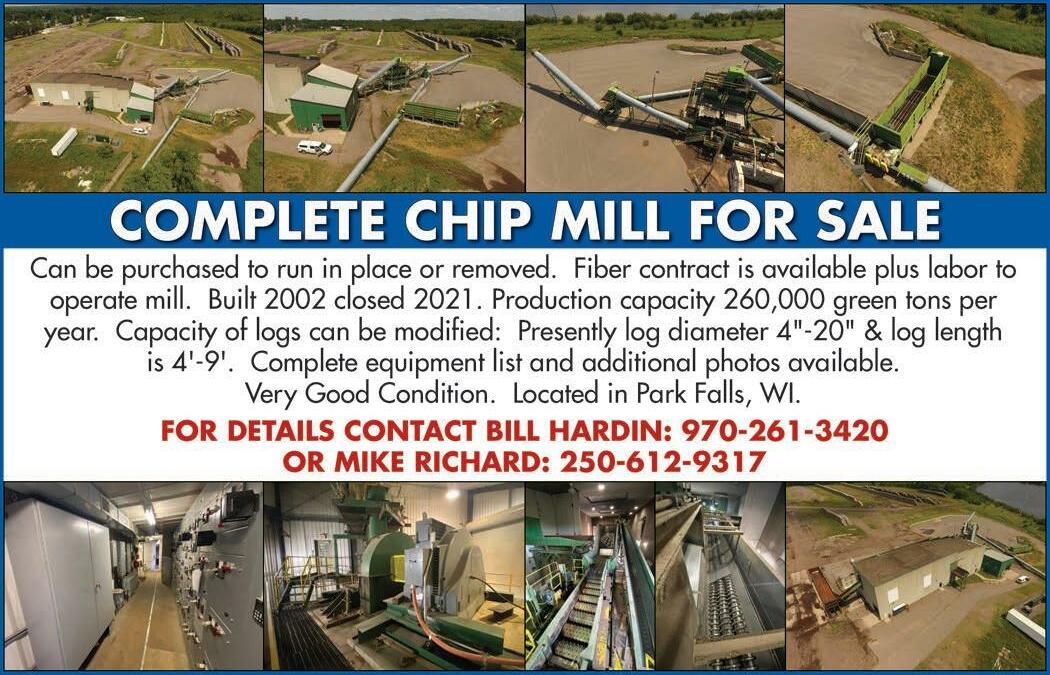

LUMBERWORKS Call Toll-Free: 1-800-669-5613 60 ■ NOVEMBER 2022 ■ TIMBER PROCESSING 13688 13688 CLICK HERE IF YOU HAVE NOT ALREADY OPTED IN!
WORKS
GREENWOOD KILN STICKS
EMPLOYMENTOPPORTUNITIES
Recruiting Services
Importers and Distributors of Tropical Hardwood Kiln Sticks
Importers and Distributors of Tropical Hardwood Kiln Sticks
Executive
“The lowest cost per cycle”
“The lowest cost per cycle”
JOHN GANDEE & ASSOCIATES, INC
GW Industries
GW Industries
Contingency or Retained Search
on
Dennis Krueger Jackie Paolo 866-771-5040
Dennis Krueger Jackie Paolo 866-771-5040
“Your Success Is Our Business”
greenwoodimportsllc@gmail.com
greenwoodimportsllc@gmail.com
the Wood Products and Building Materials Industries


Email
john@johngandee.com
Texas
PRE-SHREDDING MACHINE
The stand-out feature of the Vecoplan VRZ pre-shredder is its rotor. Instead of conventional cutting tools, it is equipped with sickle-shaped ripping teeth, which safely break up and shred even bulky materials. The Vecoplan developers placed great emphasis on a robust design, and the tried and tested HiTorc drive ensures highly efficient, yet low-maintenance operation.
The VRZ series can efficiently shred domestic, commercial and bulky waste and biomass, root and waste wood interspersed with minerals or nails.
Components such as wear-resistant and replaceable sealing elements at the rotor and side wall prevent materials from becoming lodged between the front surface of the rotor and the machine housing. The optimized machine design also means that the cutting frame and rotors can be replaced quickly, and time-consuming maintenance work such as reinforcing welding work can be performed outside the machine, significantly reducing downtimes.
Vecoplan relies on the sheer efficiency of the HiTorc series machines. They have no mechanical components such as belts, clutches or hydraulic units. The HiTorc dynamics improve startup and reversing behavior, making the VRZ ideal for mastering complex, tough materials and other challenges.
The Vecoplan specialists also gave this shredder series a modular design. Customers can choose from several options
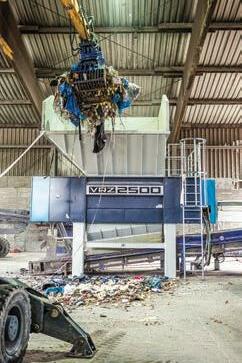
Top Wood Jobs
Recruiting and Staffing George Meek
geo@TopWoodJobs.com www.TopWoodJobs.com (360)
PRODUCTSCANNER
to configure their machines, such as various cutting units like cutting tables and rotors. These can be easily replaced to adjust the VRZ to a specific particle size or usage scenario. Visit vecoplan.com.
STACKING & STRAPPING
Hogue Industries is now offering a single station high speed lumber stacking and strapping system.
The system features a compact strapping system that fits within the stacker’s primary and secondary package accumulation lift area to replace the sprawling conventional strapping systems of today.
● High speed package strapping with all the required battens, corner protectors, and straps applied simultaneously at the stacker, with a finished unitized package discharged to the outfeed package transfers.
The new strapping system is designed to match the output of a double fork stacker.
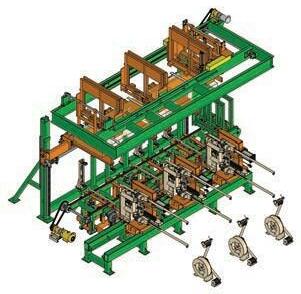
● No more package tracking, or disintegrating packages trying to get to the remote strapper systems.
The system can shift out a disabled strapper and shift in a functioning strapper to optimize production.
The system is all electric and pneumatic with no hydraulics. Visit hogueindustries.com.
TIMBER PROCESSING ■ NOVEMBER 2022 ■ 61 Call Toll-Free: 1-800-669-5613 LUMBER
– Managerial – Technical - Sales
Depending
Circumstances / Needs
Serving
For more than 26 years. 512-795-4244 Call or
me anytime!
www.johngandee.com Austin,
3220
www.gwi.us.com
866-504-9095
jackie@gwi.us.com
www.gwi.us.com
866-504-9095
jackie@gwi.us.com 127
263-3371 3779 1615
BAND SAW CLEANING MACHINE Brand New Construction VISIT: metalhealthmachinery.com 803-307-8773 13837
10 New products and technologies published here are submitted by the manufacturer and supplier companies or representatives thereof, and all statements and claims are attributable to the submitting parties. CLICK HERE IF YOU HAVE NOT ALREADY OPTED IN!
NOVEMBER
14-15—Lumber Quality & Process Control Workshop, Lumber Quality Institute, Scottish Rite Center, Salem, Ore. Call 541752-2751; visit lumberquality.com.
16-17—Lumber Quality Leadership Workshop, Scottish Rite Center, Salem, Ore. Call 541-752-2751; visit lumberquality.com.
FEBRUARY 2023
6-8—Indiana Hardwood Lumbermen’s Assn. Convention & Exposition, Indianapolis Downtown Marriott, Indianapolis, Ind. Call 317-288-0008; visit ihla.org.
22-26— Appalachian Hardwood Manufacturers annual meeting, Ponte Vedra Inn & Club, Ponte Vedra, Fla. Call 336885-8315; visit appalachianhardwood.org.
MARCH 2023
2-5—Delhiwood 2023, India Expo Centre & Mart, Greater Noida, India. Call+91-80-4250 5000; visit delhi-wood.com.
8-10—2023 SLMA & SFPA Spring Meeting & Expo, Hyatt Regency Savannah, Savannah, Ga. Call 504-443-4464; visit slma.org.
22-24—Hardwood Manufacturers Association's National Conference and Expo, JW Marriott Nashville, Nashville, Tenn. Call 412-244-0440; visit hmamembers.org.
28-30—Kentucky Forest Industries Assn. annual meeting, Embassy Suites, Lexington, Ky. Call 502-695-3979; visit kfia.org.
29-31—International Wood Products Assn. 67th World of Wood Convention, Hyatt Regency, Savannah, Ga. Call 703820-6696; visit iwpawood.org.
APRIL 2023
3-5—American Wood Protection Assn. annual meeting, Loews Ventana Canyon Hotel, Tucson, Ariz. Call 205-733-4077; visit awpa.com.
16-18—Western Wood Products Assn. annual meeting, Embassy Suites PDX - Portland Airport, Portland Ore. Call 503224-3930; visit wwpa.org.
MAY 2023
15-19—Ligna: World Fair For The Forestry And Wood Industries, Hannover Exhibition Center, Hannover, Germany. Call +49 511 89-0; fax +49 511 89-32626; visit ligna.de.
19-20—Northeastern Forest Products Equipment Expo (Loggers’ Expo), Cross Insurance Center, Bangor, Maine. Call 315369-3078; visit northernlogger.com.
JUNE 2023
9-10— PA Timber Show, Russell E. Larson Agricultural Research Center, Pennsylvania Furnace, Penn. Call 814-8632873; visit agsci.psu.edu/timber.
10-13—Assn. of Consulting Foresters of America annual conference, The Graduate Eugene Hotel, Eugene, Ore. Call 703548-0990; visit acf-foresters.org.
Listings are submitted months in advance. Always verify dates and locations with contacts prior to making plans to attend.
A ● D ● L
I ● N ● K
This issue of Timber Processing is brought to you in part by the following companies, which will gladly supply additional information about their products.
ADVERTISER PG.NO. PH.NO.
A W Stiles Contractors 53 931.668.8768
American Wood Dryers 16 503.655.1955
BID Group 7 843.563.7070
Brunner Hildebrand 41 615.469.0745
Burton Mill Solutions 3 800.426.6226
Calibre Equipment 51 +64 21 586 453
Carbotech-Autolog 37 819.252.2273
Clarke’s Industrial Sheet Metal 18 541.343.3395
Claussen All-Mark International 33 800.252.2736
Cleereman Industries 28 715.674.2700
Cone Omega 55 229.228.9213
Delmhorst 53 877.335.6467
Esterer WD GmbH 47 +49 86 71 5 03 0
Evergreen Engineering 56 888.484.4771
FiberPro 54 501.463.9876
G F Smith 6 971.865.2981
Holtec USA 2 800.346.5832
JoeScan 25 360.993.0069
Ledinek Engineering 39 +386 2 61300 51 Linck 45 936.676.4958
Linden Fabricating 53,58 250.561.1181
Mebor 57 +386 4 510 3200
Metal Detectors 8 541.345.7454
MiCROTEC 15 541.753.5111
Mid-South Engineering 53 501.321.2276
Muhlbock Holztrocknungsanlagen 43 +43 7753 2296 0
Nelson Bros Engineering 55 888.623.2882
Nyle Systems 63 800.777.6953
Oleson Saw Technology 29 800.256.8259
Opticom Tech 58 800.578.1853
Premier Bandwheel 18 604.591.2080
Prinz GmbH 64 855.467.7469
Progress Engineering 24 207.623.0110
Real Performance Machinery 11 843.900.9494
Samuel Coding & Labeling Group 38 800.667.1264
Samuel Packaging Systems Group 10 800.323.4424
Sering Sawmill Machinery 24 360.687.2667
Signode 49 800.323.2464
SII Dry Kilns 19 800.545.6379
Smithco Manufacturing 25 800.764.8456
T S Manufacturing 52 705.324.3762
Telco Sensors 17 800.253.0111
Timber Automation 35 501.617.5130
USNR 9 800.289.8767
Valutec AB 27 +46 0 910 879 50
Vecoplan 34 336.252.4824
Wagner Meters 32 800.581.2722
Wellons 49 800.935.5667
Wood-Mizer 36 866.477.9268
62 ■ NOVEMBER 2022 ■ TIMBER PROCESSING
MAINEVENTS
●
ADLINK is a free service for advertisers and readers. The publisher assumes no liability for errors or omissions.
timberprocessing.com
CLICK HERE IF YOU HAVE NOT ALREADY OPTED IN!
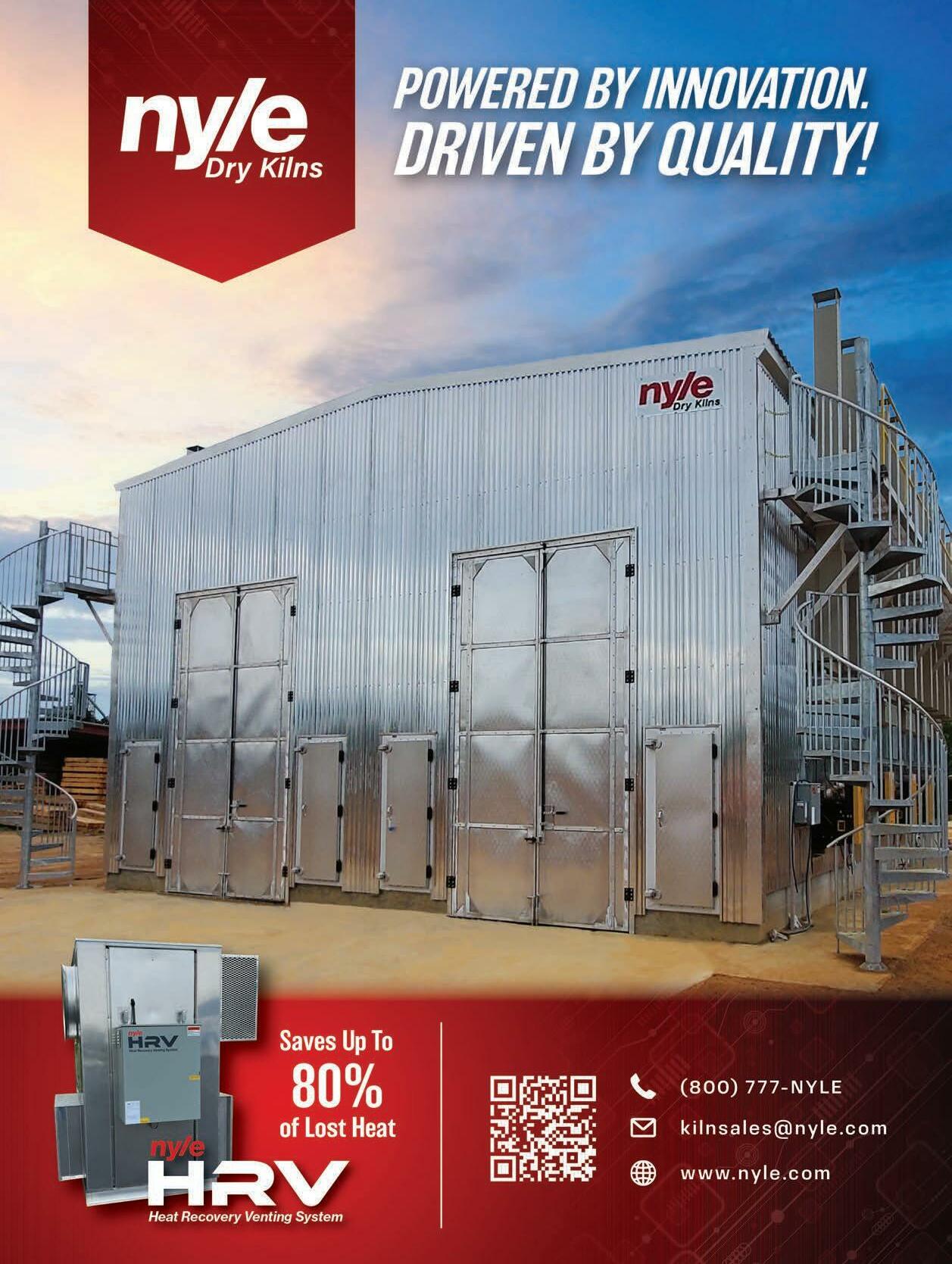
CLICK HERE IF YOU HAVE NOT ALREADY OPTED IN!
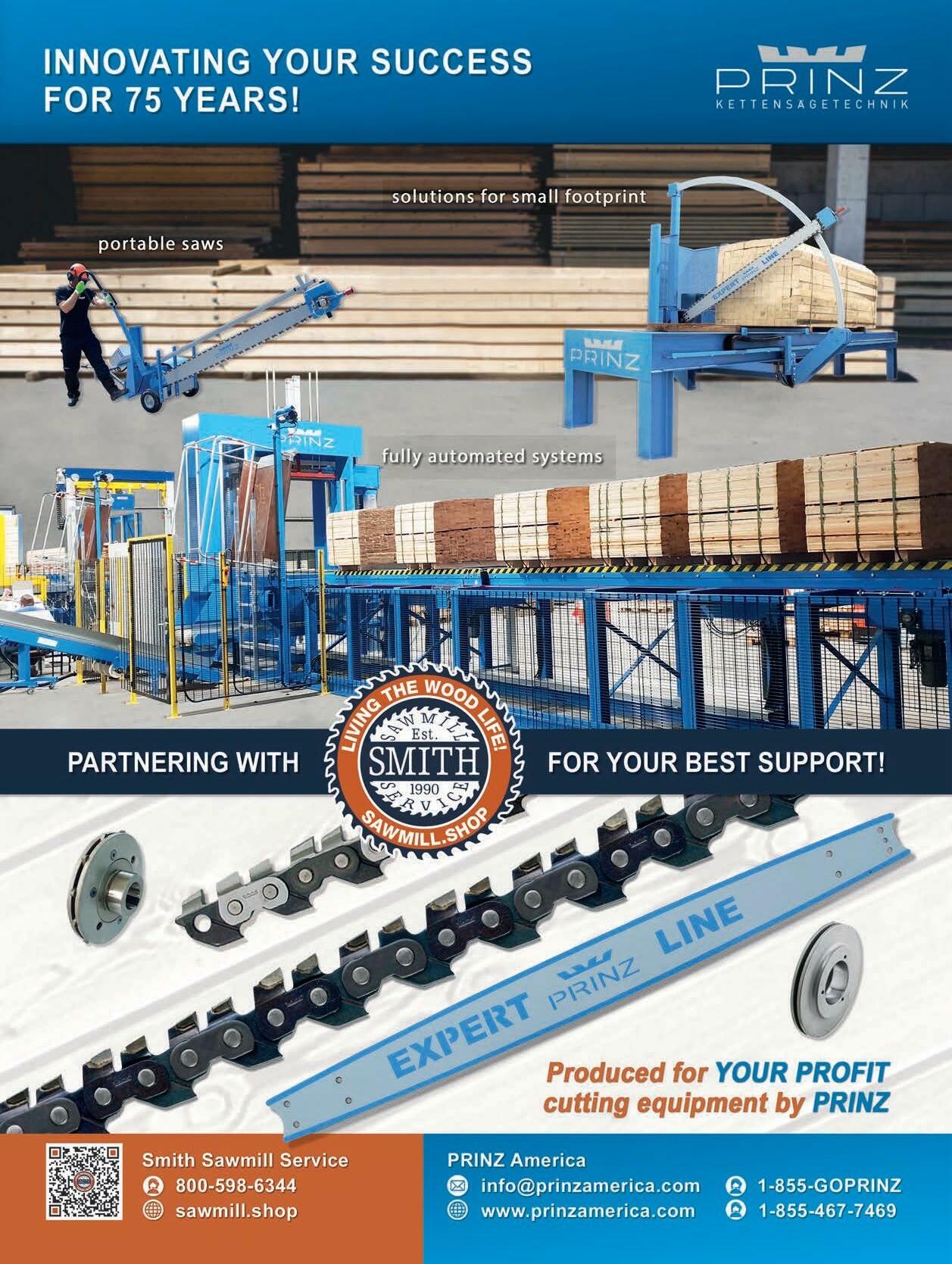
CLICK HERE IF YOU HAVE NOT ALREADY OPTED IN!




















 Not a major production machine, but new radius in u-turn from the planer mill trimmer to the sorter line has greatly boosted uptime.
Plant Manager Mike Zojonc
Overhead carriage Maxi-Mill line handles larger log and higher value products.
Not a major production machine, but new radius in u-turn from the planer mill trimmer to the sorter line has greatly boosted uptime.
Plant Manager Mike Zojonc
Overhead carriage Maxi-Mill line handles larger log and higher value products.








 Multiple projects since the acquisition have sought to boost quality and recovery, and also make environmental improvements, not just add to production numbers.
Multiple projects since the acquisition have sought to boost quality and recovery, and also make environmental improvements, not just add to production numbers.

 The biennial Timber Processing & Energy Expo returned to life and sawmill companies and equipment exhibitors turned out in force.
Lumbermen found plenty of goods to be had at TP&EE.
The biennial Timber Processing & Energy Expo returned to life and sawmill companies and equipment exhibitors turned out in force.
Lumbermen found plenty of goods to be had at TP&EE.




















 Family hardwood operation Price Sawmill looks to get ahead of the curve with upgraded technology in the mill and in the woods.
This summer the mill switched from a circle saw to a McDonough double cut band headrig, with Cleereman carriage, cab and controls.
Family hardwood operation Price Sawmill looks to get ahead of the curve with upgraded technology in the mill and in the woods.
This summer the mill switched from a circle saw to a McDonough double cut band headrig, with Cleereman carriage, cab and controls.







 of return on our investment.”
of return on our investment.”


























































